Kopacki Rit Starting Tech4All Project to Help Preserve Endangered Species
March 11, 2023 - For World Wild species Day, March 3, the leading Technology Company Huawei officially launched the Tech4All project in cooperation with the Faculty of Agrobiotechnical Sciences in Osijek (FAZOS). The project aims to preserve the biosystem in Kopacki Rit. It has been realized with Rainforest Connection, a global partner of Huawei from the USA, and FAZOS.
As SiB writes, the Tech4all project, with the help of state-of-the-art technologies and artificial intelligence, Huawei, along with partners Rainforest Connection, FAZOS, and Nature Park Kopacki Rit, will help protect the endangered species of plants and animals and in protecting and preserving their natural habitats. With the help of acoustic technologies, Croatian scientists will be assisted by artificial intelligence, collecting and processing the sounds of wild animal species of Kopacki rit in real-time. They expect this will help form a clearer picture of their migration, the abundance, and the state of the total ecosystem known as one of Europe's most preserved natural habitats.
“We are extremely excited to expand our partnership with Huawei on the Tech4All project in Croatia. Together with FAZOS and Huawei technologies Croatia, we look forward to applying artificial intelligence techniques to facilitate the monitoring of species in this important wetland area. Acoustic monitoring will allow us to see how the wealth of species and community structure are changing in the face of climate change, but also to successfully plan further steps in response to changes," said Chrissy Durkin, Vice President for Growth and Development in Rainforest Connection.
Rainforest Connection is a global non-profit organization that deals with preserving the environment and will convey its knowledge and experience of using Huawei's technology in the protected area of the Kopacki Rit Nature Park. Scientists at the Faculty of Osijek Agrobiotechnical Sciences (FAZOS) will thus have the opportunity to observe numerous wild animal species with the help of state-of-the-art technologies as part of their own "WatchOut" project (Wetland & Wildlife Monitoring Using Technology & Acoustics "), which is part of the Tech4ll roof program.
“The Faculty of Agrobiotechnical Sciences has been working closely with the Kopacki rit Nature Park for many years to protect plant and animal species. As a scientific institution, it is of great importance to develop scientific work, support the development of future scientists, and raise awareness of how important the stability of this ecosystem is. Through the Tech4All project, with the help of acoustic Huawei technology and artificial intelligence, we will have a clearer insight into migrations of migratory birds, their abundance, movements, and long-term trends we need to be aware of, ”said Prof. Dr. Ivana Majic, Vice-Dean for International Cooperation and Studies in English (FAZOS).
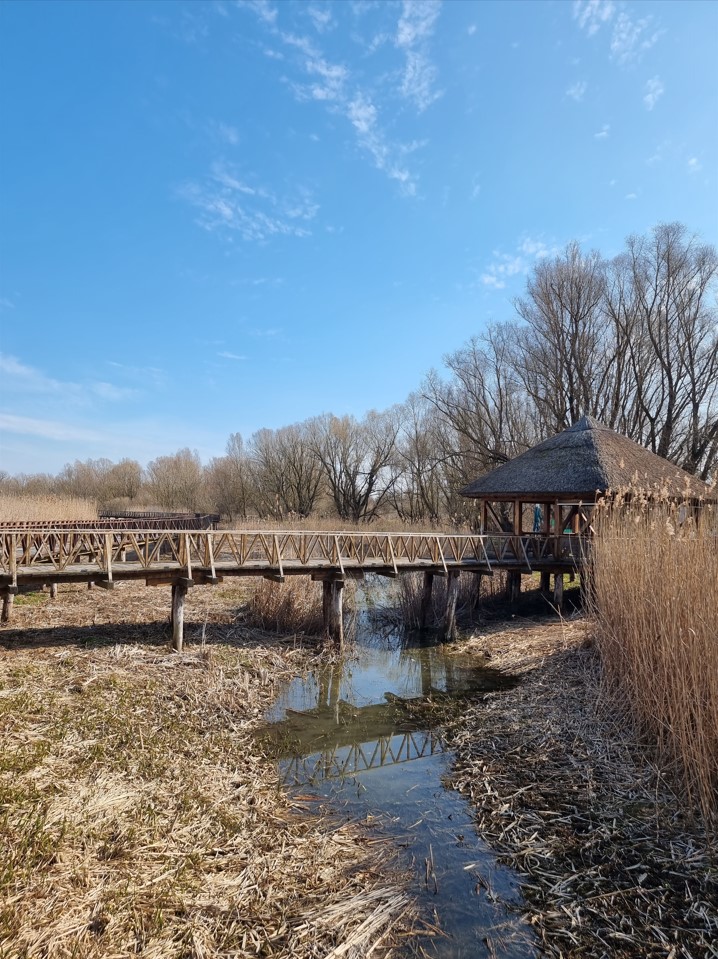
The program will also significantly help the local community and raise awareness of the protection of wild and endangered species, and Kopacki Rit is classified as one of the few eco-areas that use advanced technology to protect endangered habitats. Scientists are thus given the opportunity to predict and prevent the occurrences of negative trends already threatening a delicate natural balance of the nature park.
“The Kopacki Rit Nature Park is one of Europe's best preserved natural habitats. It is home to hundreds of bird species and other biological types of flora and fauna. Protecting such wetlands and the natural balance must be our priority because we indirectly depend on them. Therefore, programs such as Tech4All are extremely important because they help us preserve our natural habitats by giving us specific scientific data based on which we can act. I would like to thank Huawei for making this valuable research work possible. I am sure this cooperation will be positive and fruitful,” said Ivo Basic, director of the Kopacki Rit Nature Park.
With this move, Huawei is putting Croatia on the global map of countries that recognize the importance and power of modern technology in solving the problem of today, and Croatian scientists will obtain knowledge that will direct the entire community.
“The Tech4All program was created for one purpose: the use of technology to resolve many global challenges. Protecting endangered habitats and, thus, the fight against climate change is at the center of Huawei's global development strategy. The cooperation between Huawei, Rainforest Connection, and Croatian partners is a bright example of what can be done when technology and expertise are combined, and we hope to further continue our cooperation. We wish all scientists great success in their work,” said Xiaoou Wang, Public Affairs & Communication Manager at Huawei.
The Global Huawei Tech4All program is a long-term program that aims to use the power of advanced technology to help develop society in four key areas: education, health, environmental protection, and reducing the gap between urban and rural areas around the world. Huawei, along with Tech4All and Seeds for the Future, continues to cooperate with a series of scientific institutions to allow young, promising, and talented students to develop ICT skills with the help of their experts.
For more, make sure to check out our dedicated Lifestyle section.
Mountain Rescue Service Rescues Man from Mud in Kopački Rit
August 3, 2022 - A man got stuck in a deep mud area in the Kopački rit nature park. The Croatian Mountain Rescue Service (HGSS) was called to his rescue.
A mountain rescue service, obviously, does most of their work in the mountains, but if you find yourself in a situation where you're waist-deep in mud in one of the flattest regions in Croatia, you can also count on them to help you! This is what happened today when around 12:25 pm the staff of the Kopački rit Nature Park informed the HGSS Station Osijek about the above situation.
He was considered to be in danger of further sinking into a deep layer of mud, the highest degree of urgency was determined for the intervention, and the two nearest rescuers immediately went to the location with an all-terrain vehicle, while the other rescuers were on standby. Access to the location was partly by boat and partly by inaccessible terrain. In a coordinated action by rescuers and rangers - nature park supervisors, the person was placed on a medical board using a rope and pulled to safe ground at 3:00 p.m.
This was an unusual, but not at all harmless rescue operation. Both the person in danger who managed to keep his composure, and the timely reaction and high motivation of the park rangers should be commended. The excellent cooperation between HGSS Station Osijek and PP Kopački Rit has been going on since the very foundation of the Station.
Five Fairytale Destinations in Croatia You Have to Visit in 2022
June 28, 2022 - The magic of Croatia lies not only in its more than 1,700 km Adriatic coastline or its islands but also in its entire hinterland. In addition to its vast and fertile fields, as well as its imposing hills and mountains, let yourself be surprised by some fairytale destinations in Croatia.
If there is something that I still cannot understand, despite the enormous popularity of the Game of Thrones series and its obvious impact on tourism in Croatia, it is how more films and television series set in fantasy worlds have not been made in the country. I still do not have the privilege of being able to say that I know all the secrets that this country hides, but of the few destinations that I have visited and those that I have seen from a distance traveling on the roads, I have no doubt that Croatia is very similar to what one might imagine of Middle Earth as described by Tolkien in ''The Hobbit'' or ''The Lord of the Rings'' books series.
Sure, many countries can boast of magical landscapes, but did you know that Croatia even has villages and towns that seem to be taken straight from a fairy tale? This article is intended not only for those filmmakers looking to adapt their fantastic stories, or for those who need some inspiration to write them, but also for all intrepid travelers looking to transport themselves to a magical world.
Plitvice Lakes National Park
Impossible not to mention the oldest and largest Croatian national park, Plitvice Lakes, in this list. All year-round, in the heart of Lika-Senj County, Plitvice Lakes is a natural wonder where, with a little imagination, one could believe that countless magical creatures live. Whether in the hot but verdant summer, when the leaves fall and the trees turn orange in the fall, when everything is covered in white snow that contrasts with the turquoise waters in the winter, or during the blossoming spring, Plitvice looks like a secret kingdom of peace and nature.

Image: Plitvice Lakes National Park
Slunj Rastoke
Rastoke is a village located in the town of Slunj, and almost everyone in Croatia will tell you that the first thing they think of when you talk about fairy tales is Rastoke. I mean, it's enough to see it in the distance when you go down the highway to believe that it is a magical village that got stuck in time. With the merging waters of the Slunjčica and Korana rivers, its water mills, and its small wooden houses, Slunj Rastoke reminds me of those villages where an adventurer rested before continuing his dangerous mission.
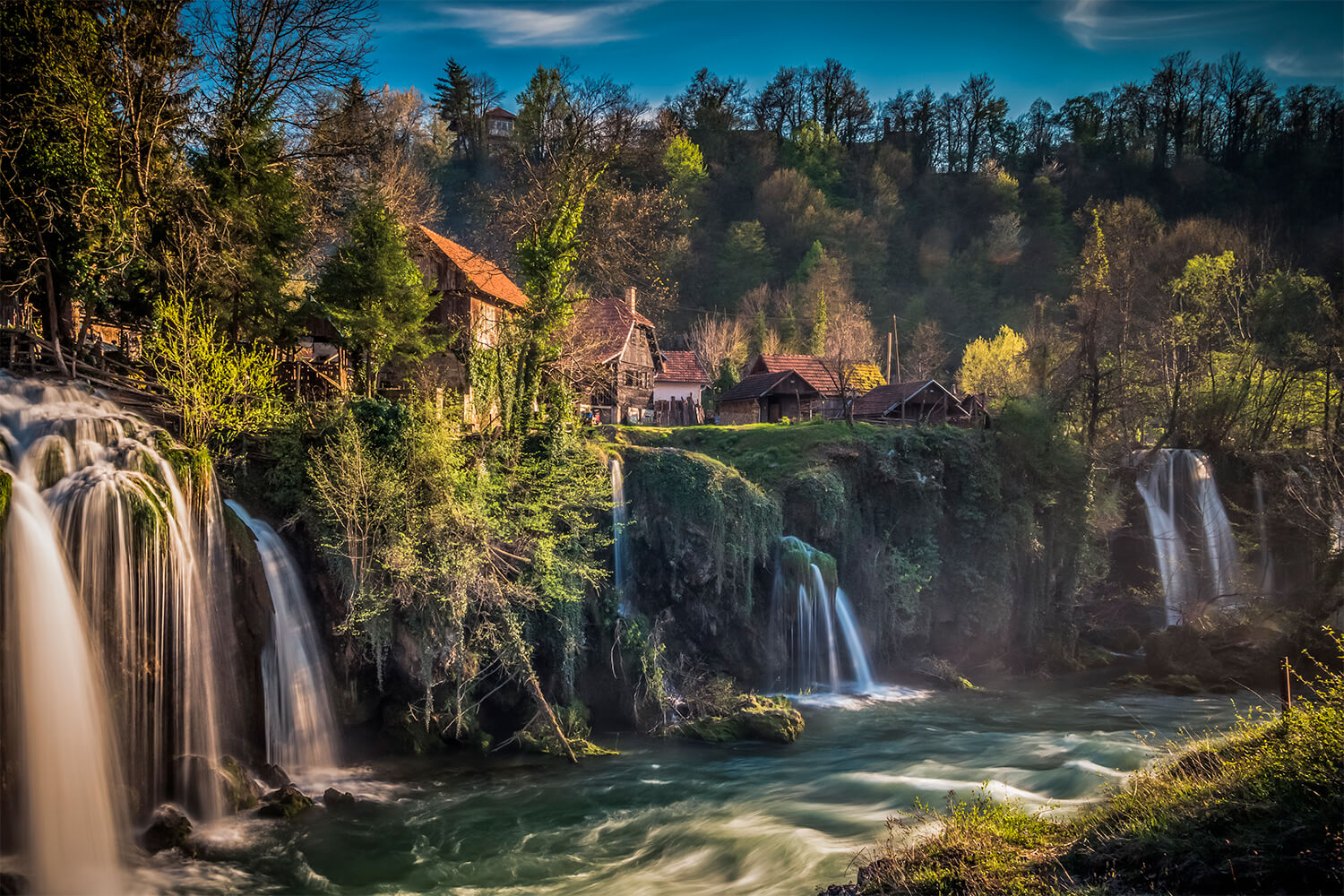
Image: Slunj Rastoke Tourist Board
Motovun
Perched high on a hill in central Istria, it doesn't get more magical than the ancient town of Motovun. Today it is known for its wines, gastronomy, and one of the oldest and most renowned film festivals, but for centuries, Motovun has been a cradle of history like no other in Croatia. For those familiar with the popular video game The Elder Scrolls V: Skyrim, Motovun is very reminiscent of the city of Whiterun, also resting on a hill and giving shelter to important kings and their subjects.
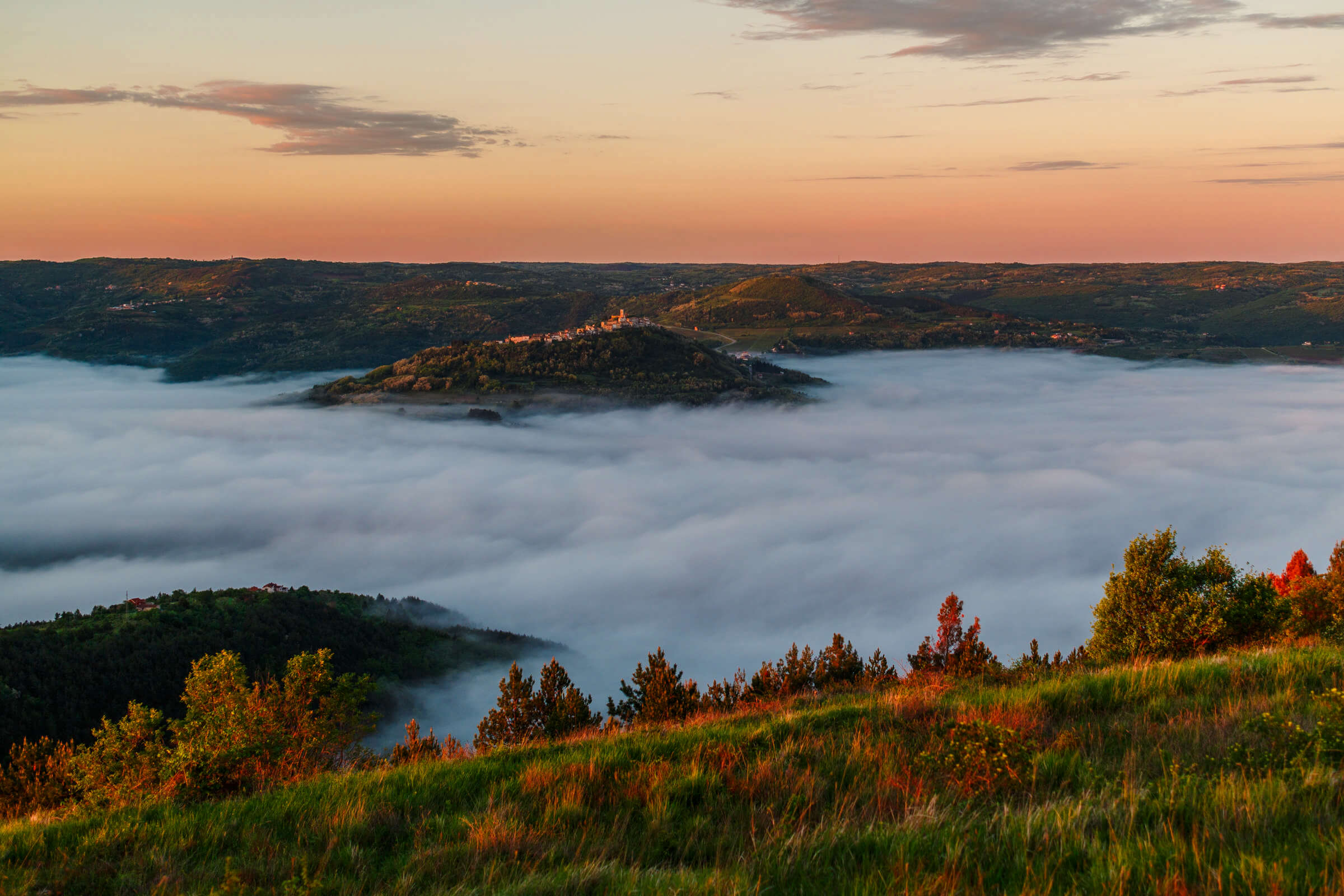
Photo: Mario Romulić
Ogulin
Ogulin is a big exception to this list in that, unlike the rest, its reputation as a fairy tale destination is already widely known even in other parts of the world. Ogulin is even home to the Fairy Tale Festival, which recently held its 17th edition from June 10-12 this year. If you want to really feel like you are in a place straight out of the most fantastical fables, the town of Ogulin in Lika-Senj county is the place to go. The Frankopan Castle and a gentle population that breathes magic and fantasy every day of the year are details that make Ogulin perhaps the most celebrated fairytale destination on our list.
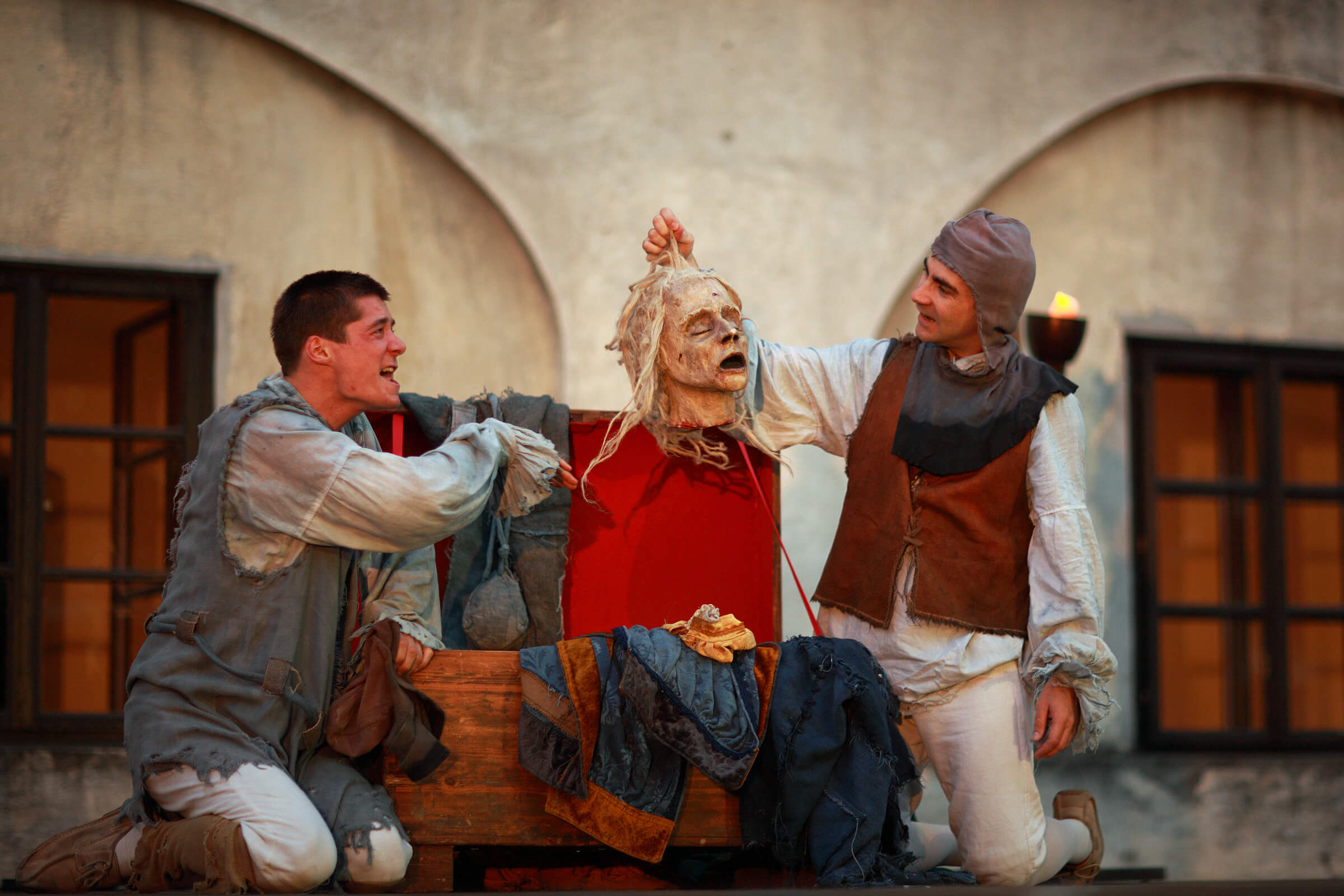
Photo: Mario Romulić
Kopački Rit
While I would have liked to choose a destination reminiscent of happy and colorful settings from fairy tales, the Kopački Rit Nature Park had to be included on this list anyway, perhaps to represent a more somber and chilling landscape. The best way to refer to Kopački Rit, compared to other destinations on this list, is that it is... different. Don't worry, Kopački Rit is still a wonderful and enchanting place, with spectacular scenery and boasts biodiversity like no other place in the country. But without a doubt, and with a lot of imagination, Kopački Rit is reminiscent of a gloomy swamp that you could only reach if you took the wrong path, and the only thing that can await you in such a place is a dark fate.
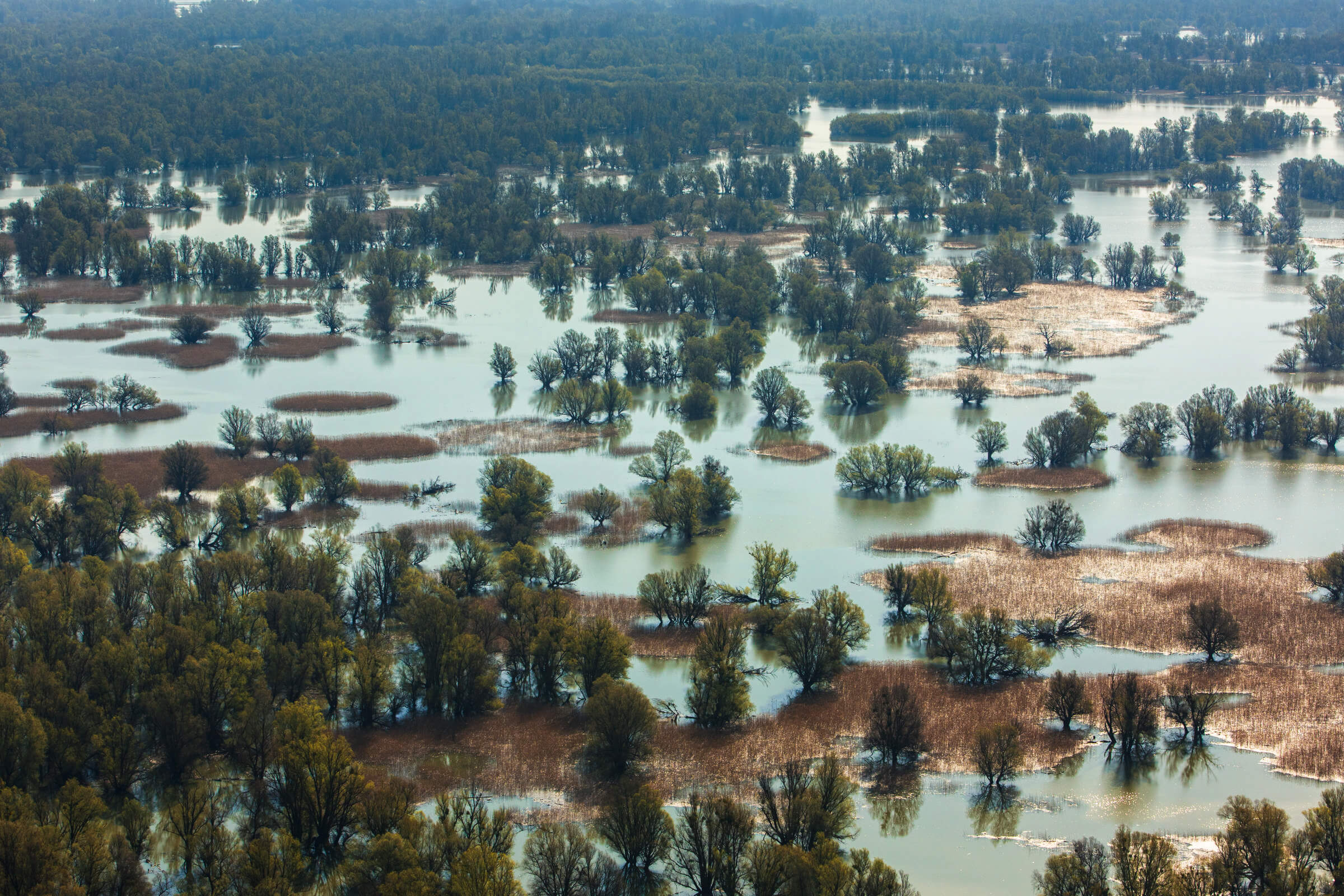
Photo: Mario Romulić
For more on travel in Croatia, follow TCN's dedicated page.
Escape to Osijek-Baranja County and its Epic Sights and Flavours
May 14, 2021 – Breathtaking views of the Danube at Erdut and Aljmaš, the bona fide masterpiece of Đakovo cathedral, the unique winemaking traditions of northern Baranja, the wildlife-rich wetlands of Kopački rit and the OPGs of Osijek-Baranja County. There's a whole other world to discover in this epic corner of Slavonia-Baranja.
It seems like the world is speeding up. Everything now is that much more immediate. In this age of Instagram and 'influencers', we quickly scroll past postcard-pretty pictures on our phones. 'Like'. Forgotten, in an instant.
Croatia is a country not without postcard-pretty pictures. But, to snatch attention in this super-fast, vacuous age, all too often we are shown the same images. Heart-shaped islands from above, dolphins at dusk, sunset over the Adriatic and its epic Dinaric Alps. You could be forgiven for thinking that every view in Croatia contains the sea.
 Slavonia © Romulić & Stojčić.
Slavonia © Romulić & Stojčić.
There are very few mountains in the Pannonian basin. And there is no sea. Well, not any more. Instead, these flatlands stretch 600 km from east to west and 500 km from north to south through several countries. They engulf the eastern section of Croatia we know as Slavonia, Baranja and Srijem.
Unsurprisingly, such a vast plain is not without its epic qualities. But, the epic nature of Osijek-Baranja County in Slavonia-Baranja is difficult to capture in a competing image on social media. Its special qualities instead lie in the sounds, the tastes, the tradition, the sights and the people. This is a place that has to be visited to be understood. And, if you do, it's an experience that will far outlast any fleeting photo on Instagram. Here, we take a look at just a small section of the unforgettable offer in Osijek-Baranja.
Imperial horses and the bona fide masterpiece of Đakovo cathedral
State Stud Farm Đakovo
Horse breeding in Đakovo is thought to be even older than 1506 when first written mention of the town's stud farm comes from. An endeavour of regional bishops, it bred horses of Arab stock. But, that changed at the beginning of the 19th Century.
 In the fields, Lipizzaner horses © Silvija Butković.
In the fields, Lipizzaner horses © Silvija Butković.
Lipizzaner horses were the prized breed of the Habsburg monarchy, their genetic line today traced back to eight stallions from the late 18th and early 19th centuries. With the advancement of Napoleon's army across Europe, Lipizzaners were sent further east in order to protect them. This imperial horse has been bred in Đakovo ever since.
Born with black skin and black hair, their hair gradually turns to a characteristic light grey (although, some other colours occur). Traditionally, when the colour change was fully complete, the horses were ready for royal duty.
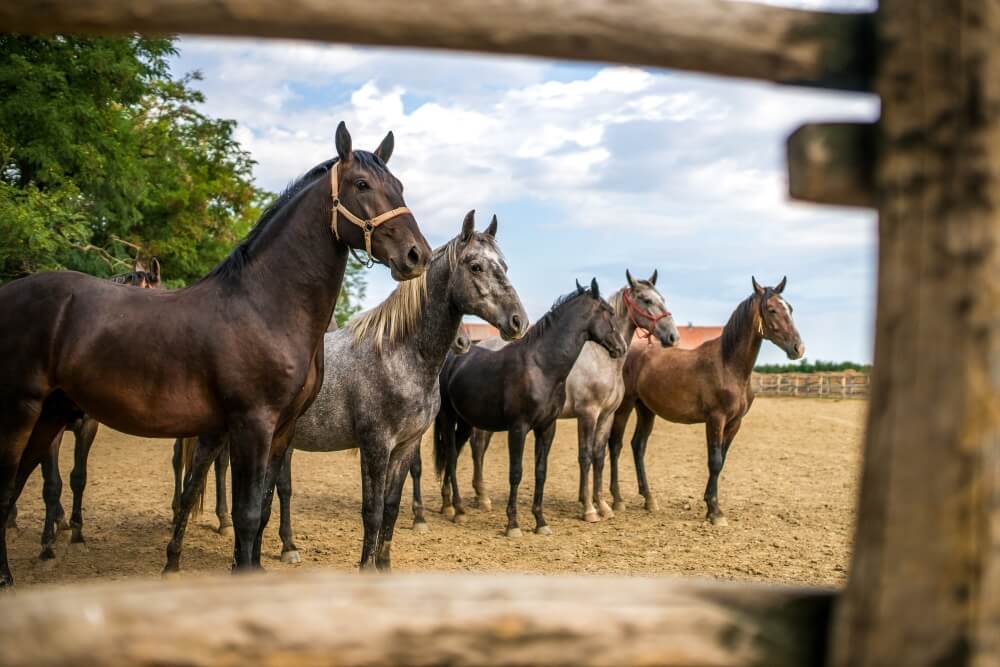 Younger horses on the State Stud Farm in Đakovo © Denis Despot / Tourist Board of Osijek-Baranja County.
Younger horses on the State Stud Farm in Đakovo © Denis Despot / Tourist Board of Osijek-Baranja County.
Today, at the State Stud Farm Đakovo, the Lipizzaners are bred and trained in dressage. The farm contains Croatia's largest indoor riding hall, in which public performances take place. Previous visitors to the farm include several members of the British Royal family. Queen Elizabeth II, Prince Phillip and their daughter Princess Anne came in 1972, while Camilla, Duchess of Cornwall came in 2016.
Đakovo cathedral
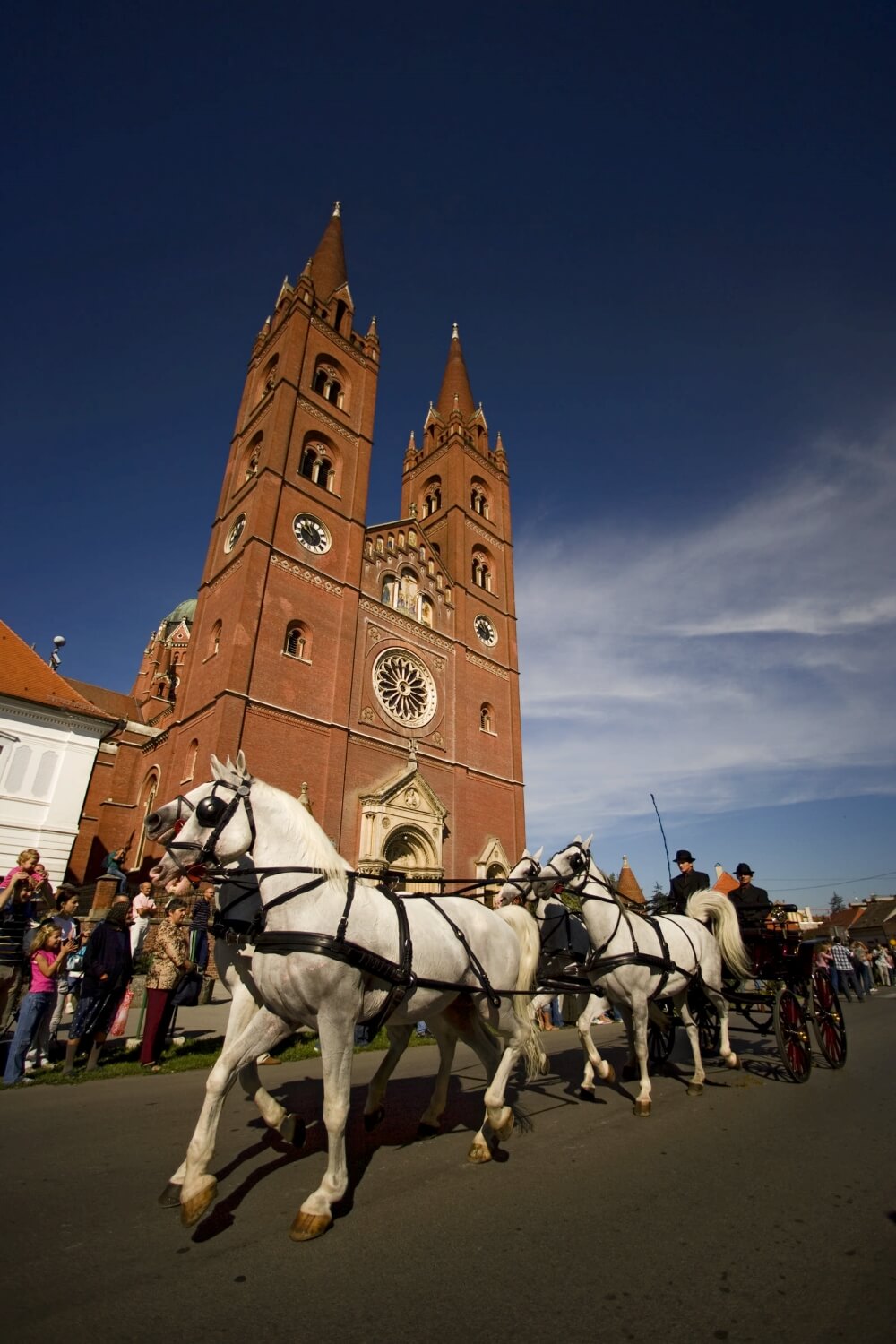 Exterior of Đakovo cathedral © Romulić & Stojčić.
Exterior of Đakovo cathedral © Romulić & Stojčić.
The presence of Bishop Josip Juraj Strossmayer looms large in the history of Croatia. Nowhere does that presence loom larger in a physical manifestation than Đakovo cathedral. By far, it is the largest sacral building in Slavonia, the second-largest in Croatia.
 © Romulić & Stojčić
© Romulić & Stojčić
This part of Slavonia is completely flat. Therefore, you can see the cathedral for miles as you approach Đakovo. Once up closer, its red bricks give it the appearance of a modern building. In fact, Josip Juraj Strossmayer oversaw its construction between 1866-1882. In truth, he'd wanted to build it for much longer, but struggled to get the funds required for his vision. Indeed, the project was so delayed that the artist Strossmayer chose to paint the interior, German Nazarene Johann Friedrich Overbeck, died before he could begin the task. Instead, father and son Alexander Maximilian Seitz and Ludwig Seitz assumed the task.
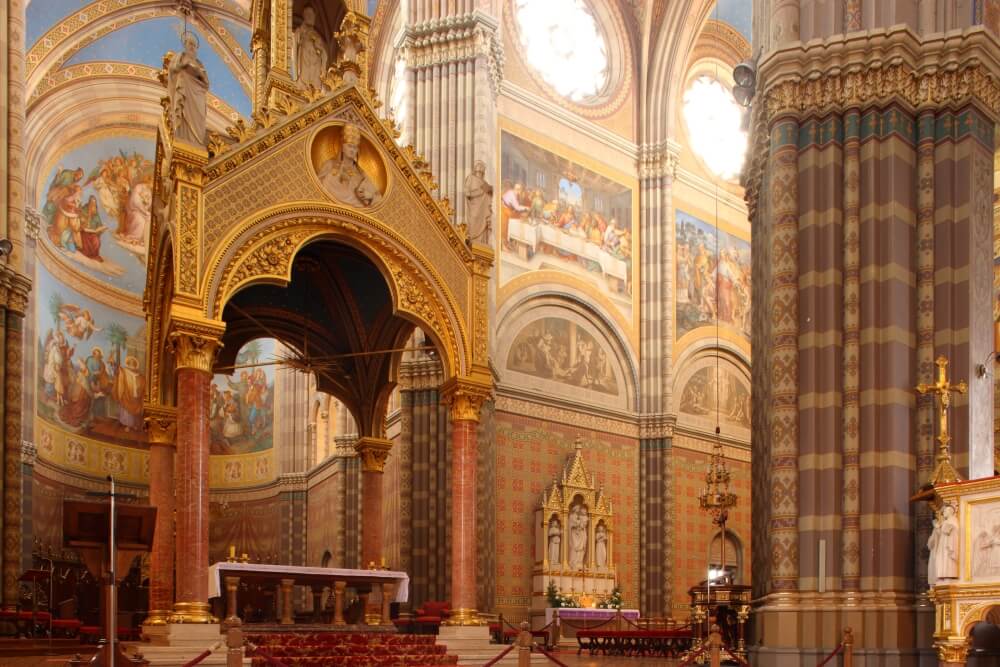 Interior detail in Đakovo cathedral © Romulić & Stojčić
Interior detail in Đakovo cathedral © Romulić & Stojčić
The building's construction actually only took four years, but it took a full 19 years to complete decorations inside. It's easy to see why. The interior of Đakovo cathedral is a bona fide masterpiece. Ornate frescos depicting scenes from the Old Testament and New Testament radiate from above. Regardless of your faith, it is a breathtaking experience to walk within.
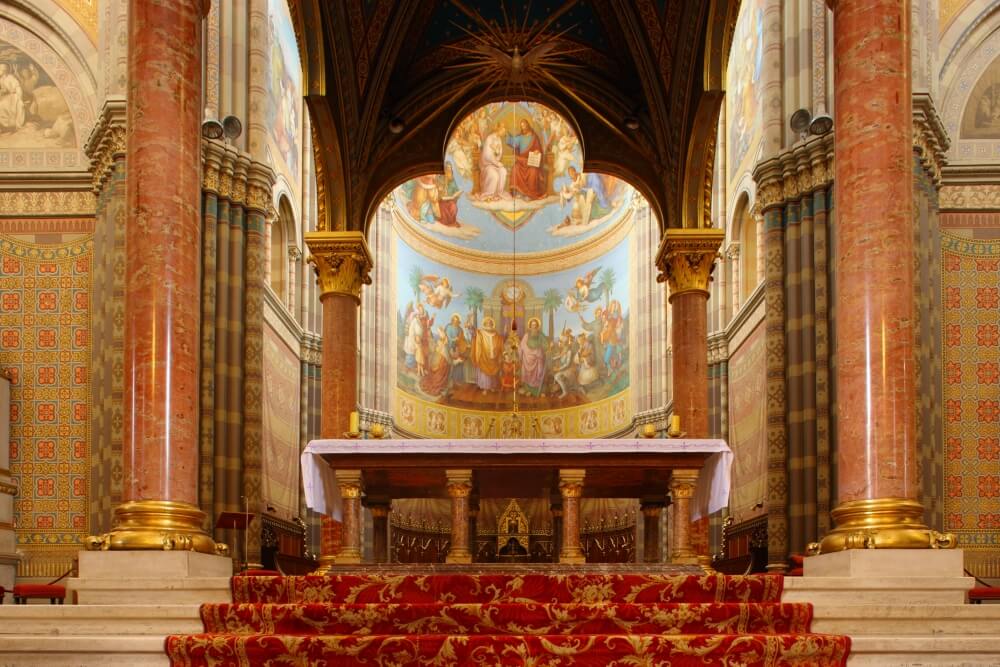 © Romulić & Stojčić
© Romulić & Stojčić
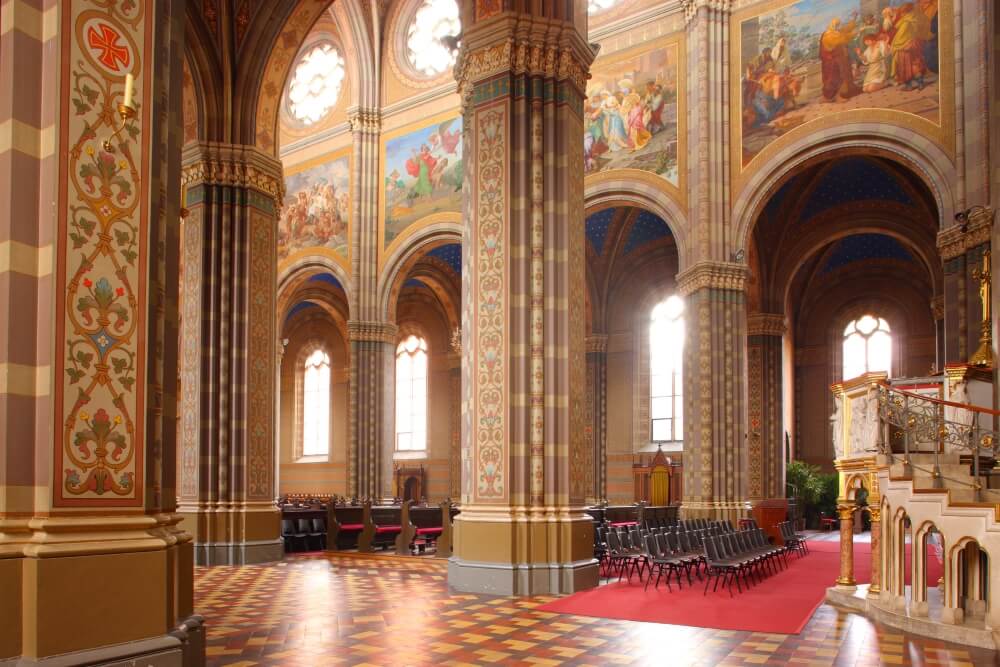 © Romulić & Stojčić
© Romulić & Stojčić
13 of the frescoes are by Alexander, 20 are by Ludwig. The detail of their work captivates the eye. The Neo-Romanesque architectural flourishes design inside are similarly grandiose. Visiting while on a journey to Bulgaria, future Pope John XXIII proclaimed it to be the most beautiful church between Venice and Constantinople.
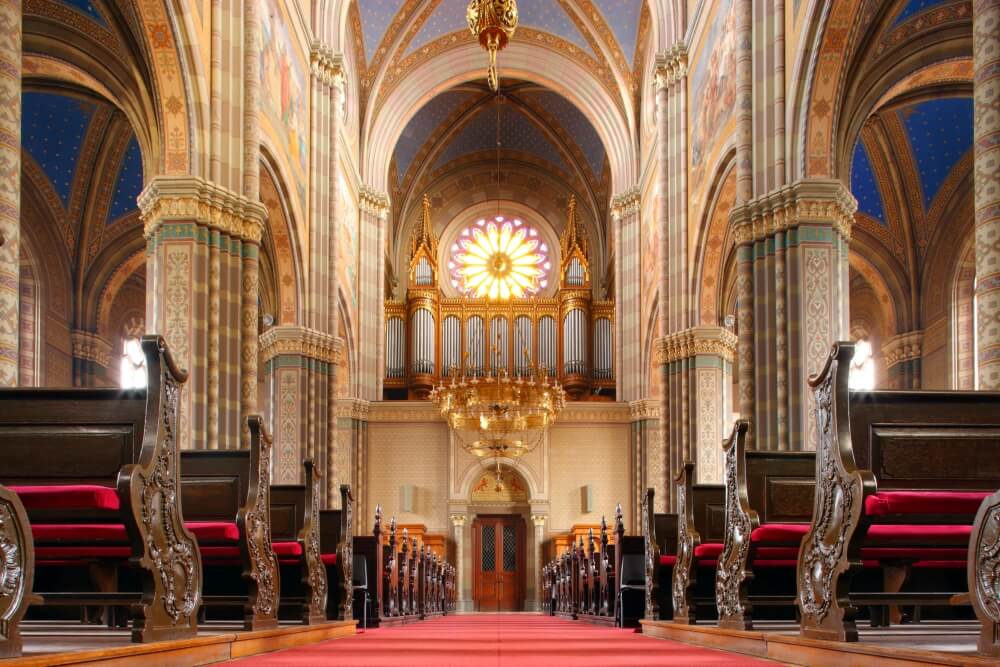 © Romulić & Stojčić
© Romulić & Stojčić
Breathtaking views of the Danube at Erdut and Aljmaš
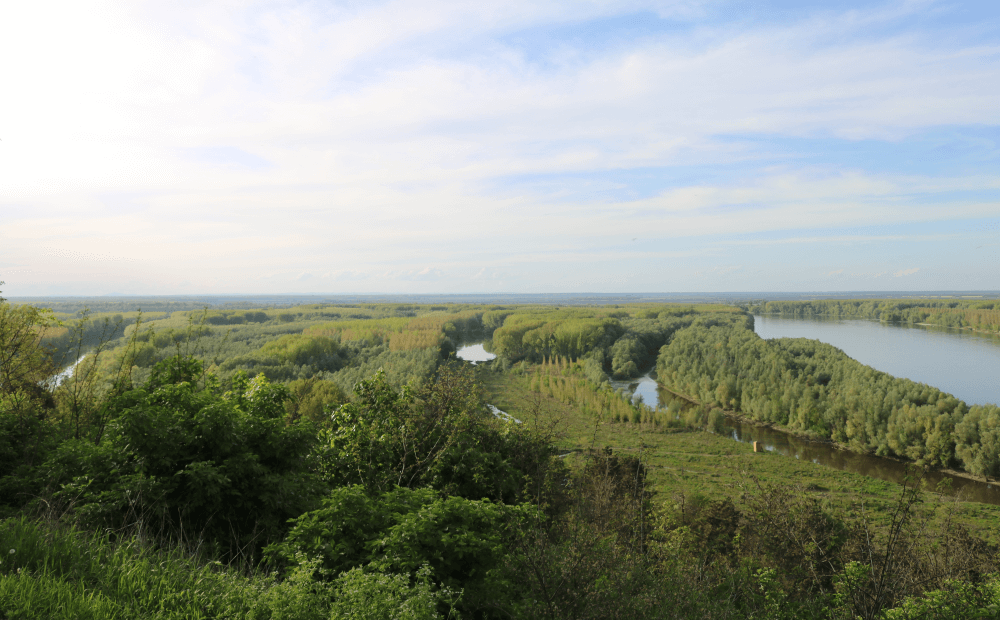 The Danube, as seen from the Brzica winery terrace in Erdut © Marc Rowlands.
The Danube, as seen from the Brzica winery terrace in Erdut © Marc Rowlands.
Slavonia is defined by its two longest rivers. To the south, after passing through Zagreb and Lonjsko Polje, the Sava forms a natural border between Slavonia and Bosnia. To the north, the Drava river first separates Croatia and Hungary. Then, after Donji Miholjac, it serves as the border between Slavonia from Baranja. Just a mile or so from Aljmaš, the Drava flows into the Danube, which partially separates Slavonia from Vojvodina.
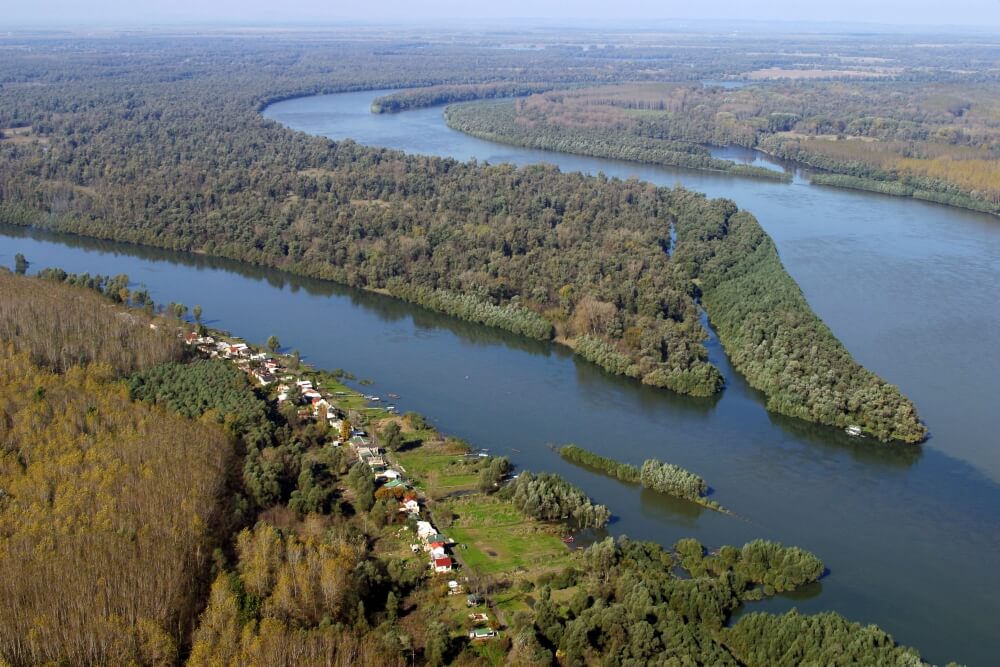 The Danube in eastern Slavonia © Romulić & Stojčić.
The Danube in eastern Slavonia © Romulić & Stojčić.
When you're standing overlooking the Danube in Erdut village, you could almost believe you're on an island. The peninsula in which the village lies is surrounded on three sides by the Danube. It weaves in and out of the landscape, causing great gulfs between the dense forest that occurs on each side. This area is noticeably raised above the height of regular, flat Slavonia and in Erdut, a small castle tower stands on a hill. It's one of the best places to look at the Danube. The other is from the Brzica winery, less than a kilometre away.
At Brzica, you're some 80 metres above the Danube. Here, winery owner Ivo Brzica has taken advantage of the view. He's built a beautiful holiday home where guests can stay. It's right next to his own dwelling and the winery. The properties share a huge, open and informal terrace overlooking the river. It's a great place to try the award-winning Brzica wines. They plant Graševina, Chardonnay, Cabernet Sauvignon, Merlot and Vranac. On some bottles, the label reads 1378. It's the number of kilometres the Danube has travelled to reach this point.
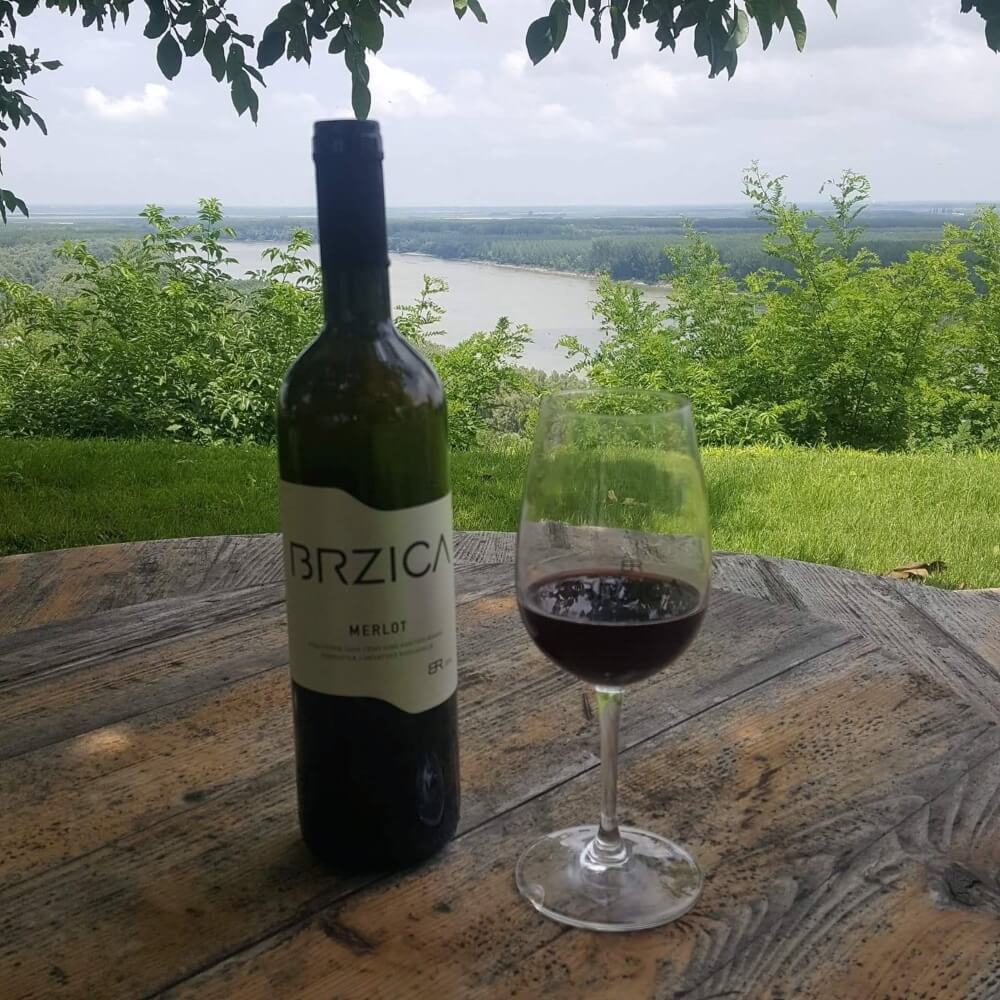 A glass of Brzica wine overlooking the Danube.
A glass of Brzica wine overlooking the Danube.
Erdut visitors wanting to get up closer to the Danube can now do just that. A newly appointed 10-kilometre footpath now runs alongside the river all the way from Erdut to Aljmaš. It's a beautiful walk through epic nature.
The unique landscape and winemaking traditions of northern Baranja
While much of Slavonia is uniformly flat, the topography is more varied in Baranja. Baranja Mountain stretches in a northeast-southwest direction between Beli Manastir and Batina. It is 21 kilometres long, three kilometres wide and much of its slopes are used for agriculture, grapes for winemaking, predominantly.
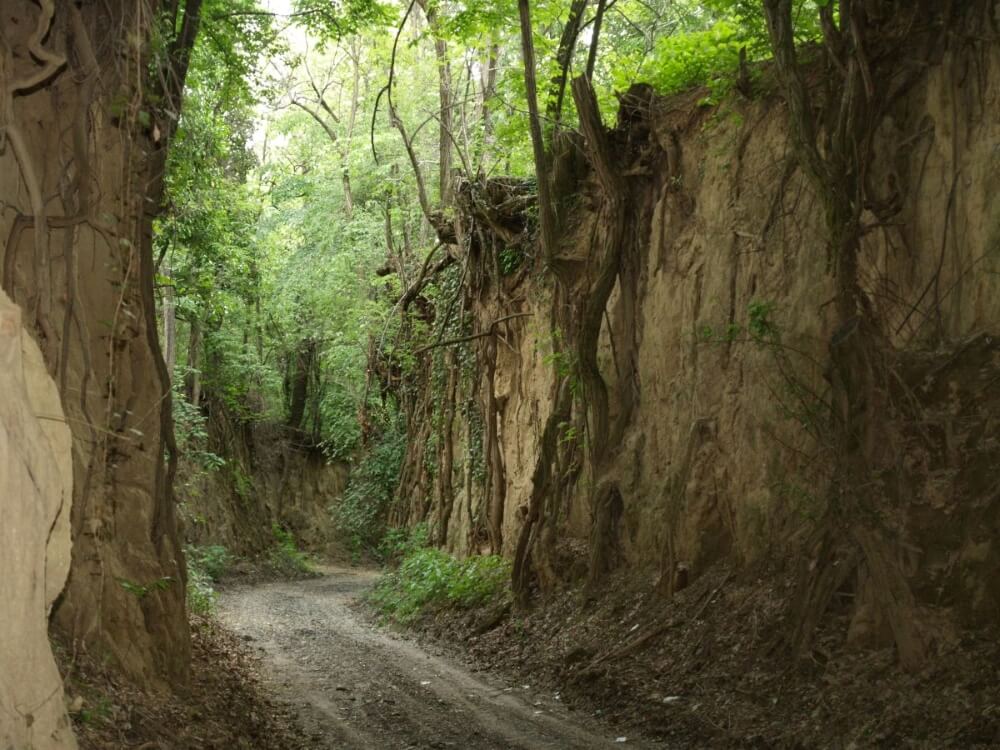 A Surduk in Baranja © Krešimir Čandrlić / Tourist Board of Osijek-Baranja County.
A Surduk in Baranja © Krešimir Čandrlić / Tourist Board of Osijek-Baranja County.
Long ago, heavy rains began to produce natural gorges which cut through the higher ground. Over time, some of these became considerably deep, widened by the flow of water and sometimes mud. Eventually, these gorges between hillsides became passageways for horses and carts. In Croatia, these narrow routes are exclusive to the Baranja region and are very pretty to walk. Their walls are lined with tree roots, which stop them from collapsing. The branches and leaves of these trees often overhang the gorge, sometimes giving you the impression you're in a tunnel. Such a route in Baranja is known as a Surduk.
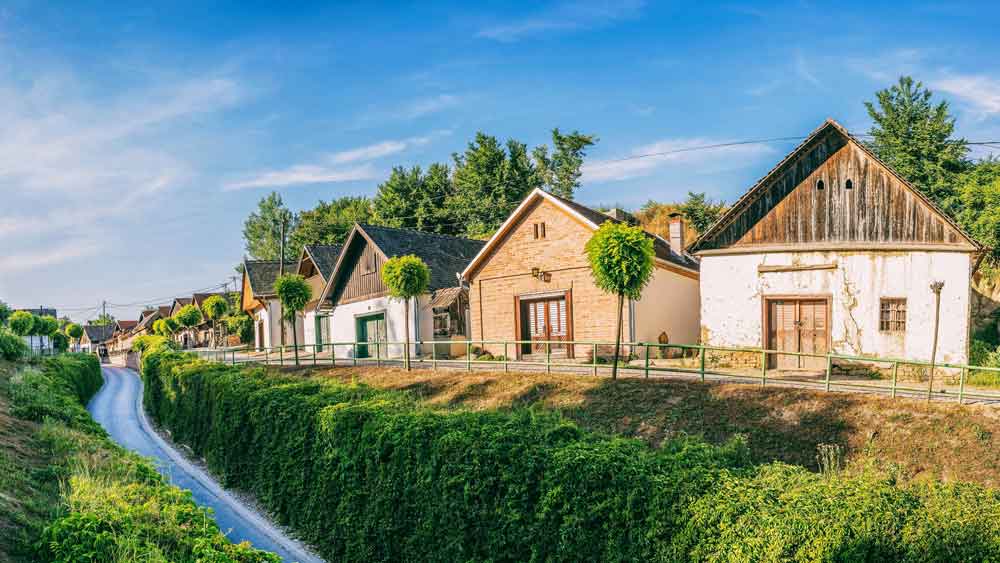 A line of traditional Baranja wine cellars. Unique in Croatia to Baranja, such a building is known as a Gator © Visit Baranja.
A line of traditional Baranja wine cellars. Unique in Croatia to Baranja, such a building is known as a Gator © Visit Baranja.
On this same ground, you'll find another phenomenon unique to Baranja. A Gator is a traditional wine cellar of this region. Sometimes found on the lower course of a Surduk, a Gator is unlike a typical wine cellar in that it has no subterranean section where the wine is stored. Instead, a Gator extends back into the hillside. Wine is kept in the deepest recesses of the building, where it is coolest. In several places in Baranja you can see a street with several of these buildings side by side. Usually, each Gator is owned by a different family and each will make their own particular family wine.
Podrumi Kolar family winery in Suza
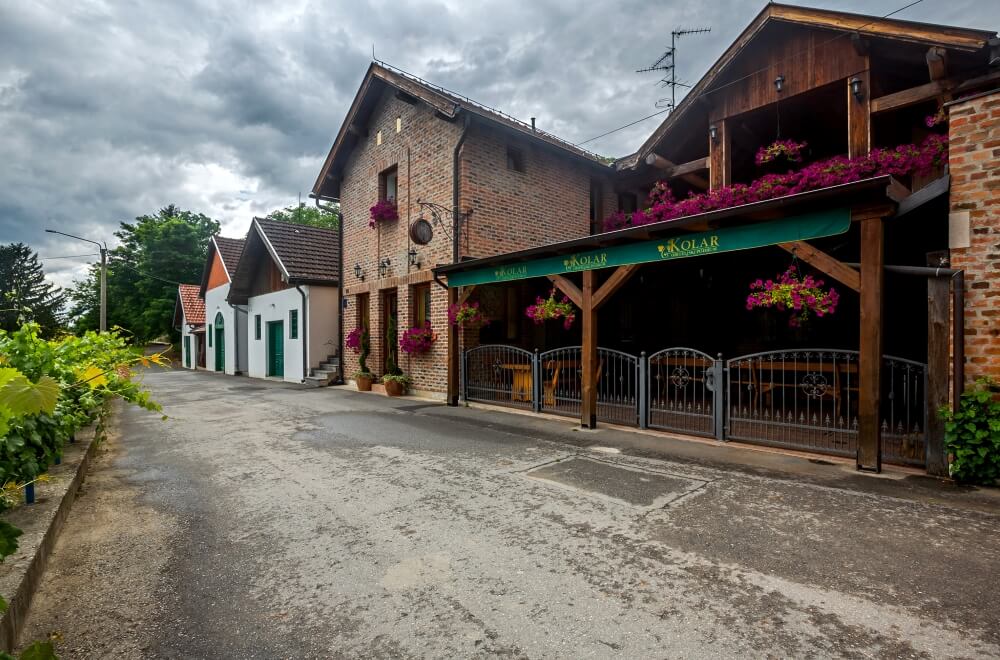 With a 100-year-old cellar and great wines, the Podrumi Kolar family winery in Suza.
With a 100-year-old cellar and great wines, the Podrumi Kolar family winery in Suza.
The Kolar family wine cellar is 100 years old, although the restaurant and tourism aspect of their enterprise has only been around since 2004. The whole family are involved and they purposefully intertwine their winemaking with a visitor offer. In addition to the restaurant attached to the wine cellar and they have a wonderful campsite just a couple of hundred metres down the road. All of their wines are great. But, if you visit, be sure to try their Sauvignon. Some say it's the best in the whole of Baranja.
Josić winery and restaurant in Zmajevac
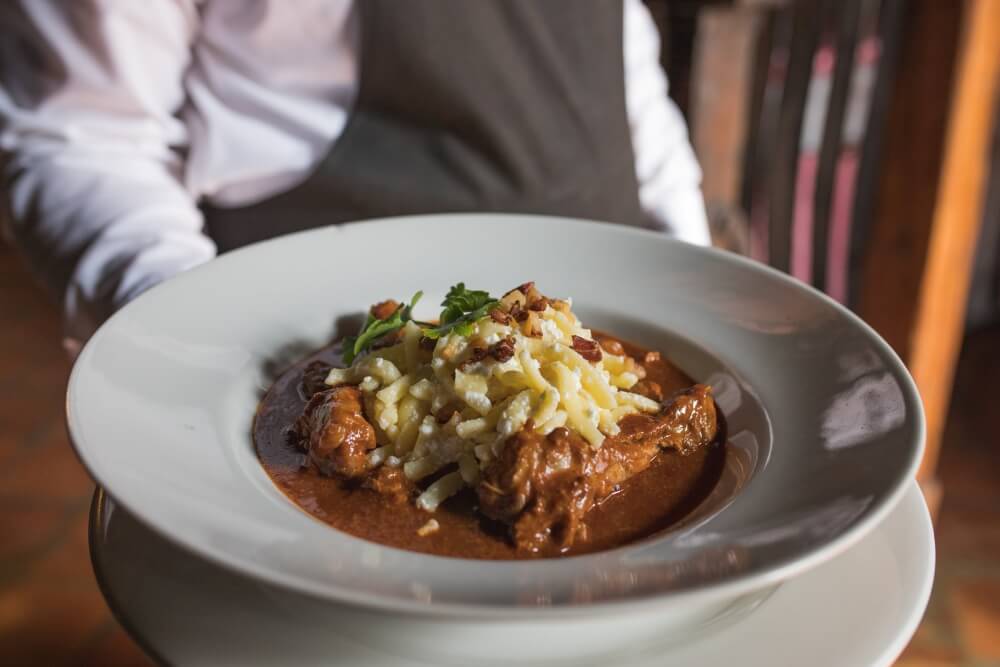 Traditional Baranja and Slavonia flavours at the Josić winery and restaurant in Zmajevac.
Traditional Baranja and Slavonia flavours at the Josić winery and restaurant in Zmajevac.
At the Josić winery and restaurant in Zmajevac they make brilliant wines. Among them, Baranja shiller, Cabernet Sauvignon, Chardonnay, Graševina, Pinot Gris and Sauvignon. You can visit the wine cellars and try traditional foods of the region in their extensive restaurant.
Vinarija Gerštmajer in Zmajevac
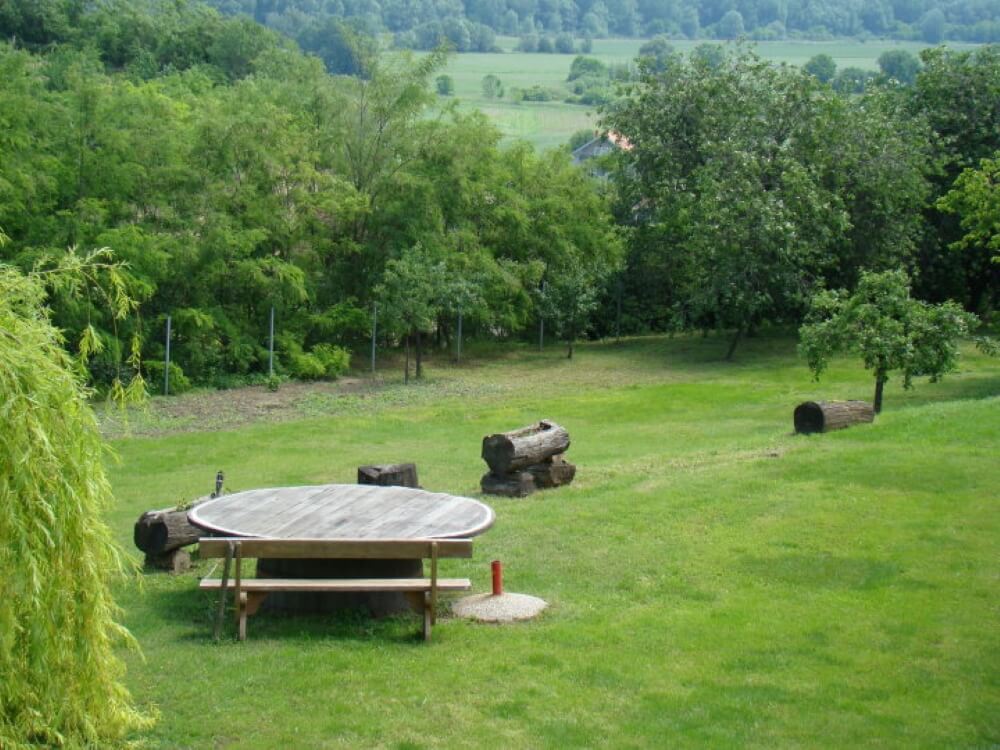 Incredible views from the garden at Vinarija Gerštmajer in Zmajevac.
Incredible views from the garden at Vinarija Gerštmajer in Zmajevac.
A deep dust gathers on some of the oldest bottles kept in the cellar at Vinarija Gerstmajer. And, there's plenty of those. The charming family patriarch is clearly a proud wine enthusiast and reserves some bottles from every year of their celebrated but small production. Sadly, this archive now stretches back only until the mid-1990s. It used to be much older, cataloguing all of the years his own father ran the winery. But, when the family returned after the war, they were greeted by empty cellars. The cellars are once again full. You can try them in the cellar or out on the terrace, overlooking a scene of uninterrupted nature.
The wildlife-rich wetlands of Kopački rit
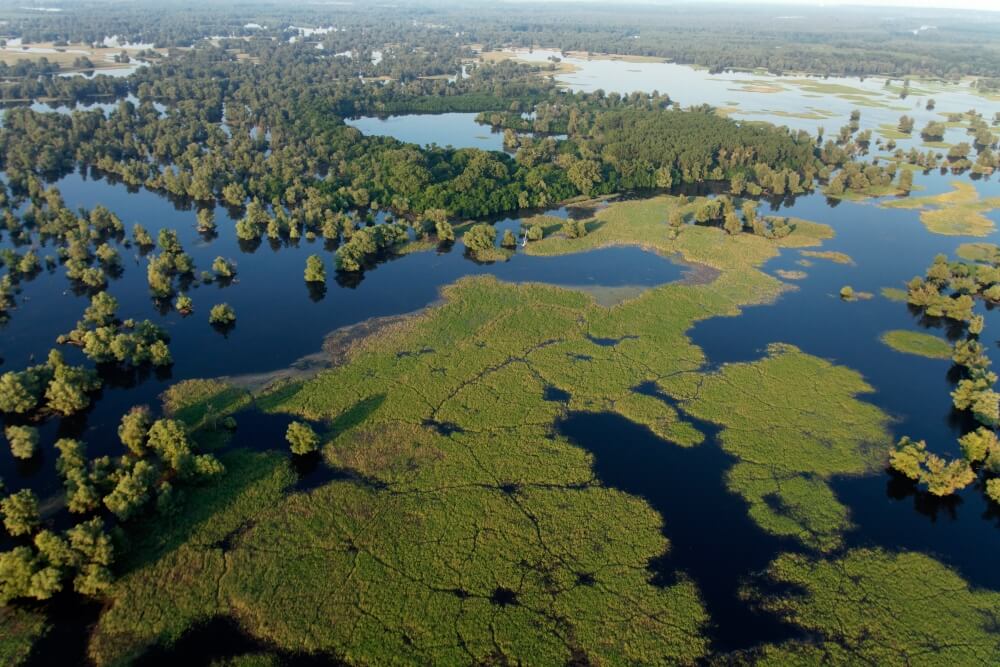 Wetlands of Kopački rit © Tourist Board of Osijek-Baranja County.
Wetlands of Kopački rit © Tourist Board of Osijek-Baranja County.
Occupying the marches, lakes and floodland between the Drava and the Danube, Nature Park Kopački rit is one of Europe's largest wetlands. Although a home to many different types of life, it is most famous for its bird population. As many as 300 different species of birds inhabit the park, many of them being migratory and nesting species. Of particular note, a large colony of grey heron and and the largest population of woodpeckers in the entire Danube basin. You can now tour a section of the waters in a large visitor boat. It is electrically powered so as not to disturb the life-rich riverbanks. After the boat drops you off, make your way through the rest of the park across specially constructed pathways that wind their way across the waters and reeds.
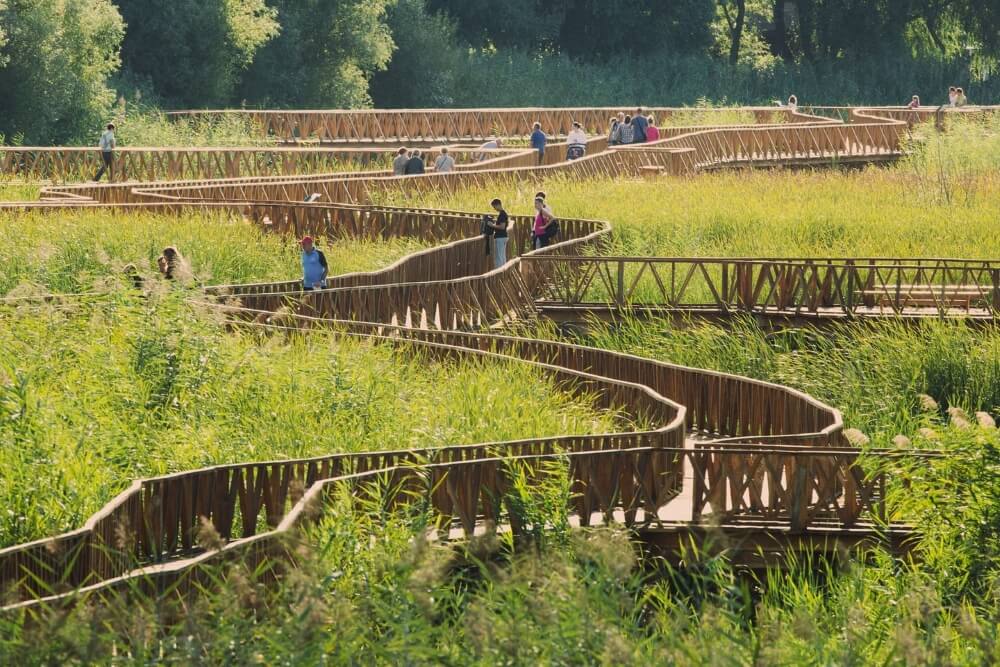 The wooden walkways of Kopački rit Nature Park in Osijek-Baranja County © Romulić & Stojčić.
The wooden walkways of Kopački rit Nature Park in Osijek-Baranja County © Romulić & Stojčić.
The OPGs of Osijek-Baranja County
The landscape in Osijek-Baranja County is only so picturesque because of the people who live in it. It is their endeavours that shape it. Traditional agricultural pursuits explain the pretty rows of vineyards, the different coloured fields and gardens filled with fruit trees. While some agriculture here exists on a grand scale, many families in the region make the most of their own small plots of land.
Osijek-Baranja County family farms or OPGs preserve the traditions of the region, not only in the way they use the land but in the produce that results. From the beekeeping that makes EU-protected honey to the vineyards producing Croatia's best white wine, practices in these family farms are often passed down from generation to generation. The best way to learn how they do it – and try the amazing traditional flavours of Osijek-Baranja County – is to go to an OPG. Here are just several you can visit.
Zorić distillery in Erdut
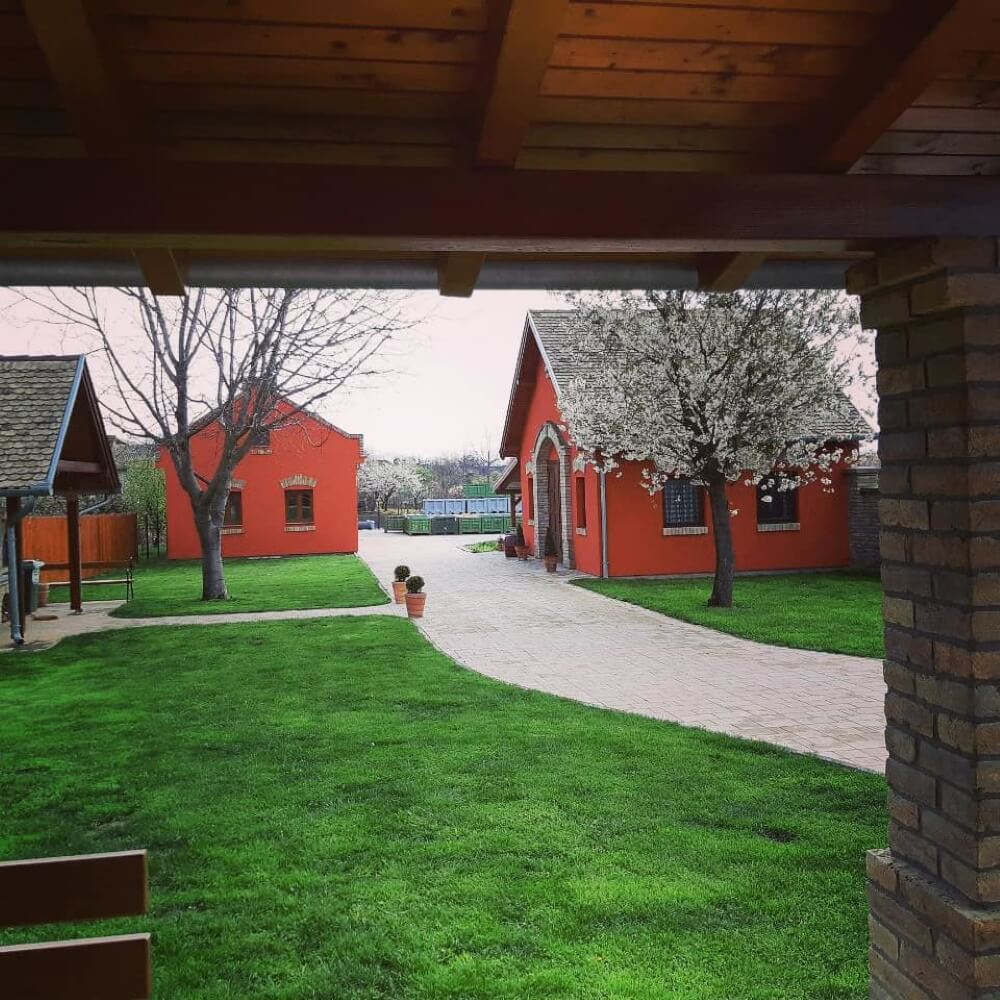 Zorić distillery in Erdut, Osijek-Baranja County.
Zorić distillery in Erdut, Osijek-Baranja County.
The Zorić family in Erdut have long been growing fruit and making Croatian brandy aka rakija. But, this youngest generation, lead by youthful father Dinko and his wife Sanja, have upped their game significantly. They have built the most modern craft rakija distillery in the region. From there, they make one of Croatia's best new premium rakijas, Divania. In English or Croatian, they will guide you around the distillery and explain the process before letting you try it on their lovely terrace. If you're lucky, you might also get to try the family-made kobasica sausages – they're very good! Their rakijas are made from apricots, quinces, apples, pears and cherries and the family are great hosts.
Seoski turizam Lacković in Bilje
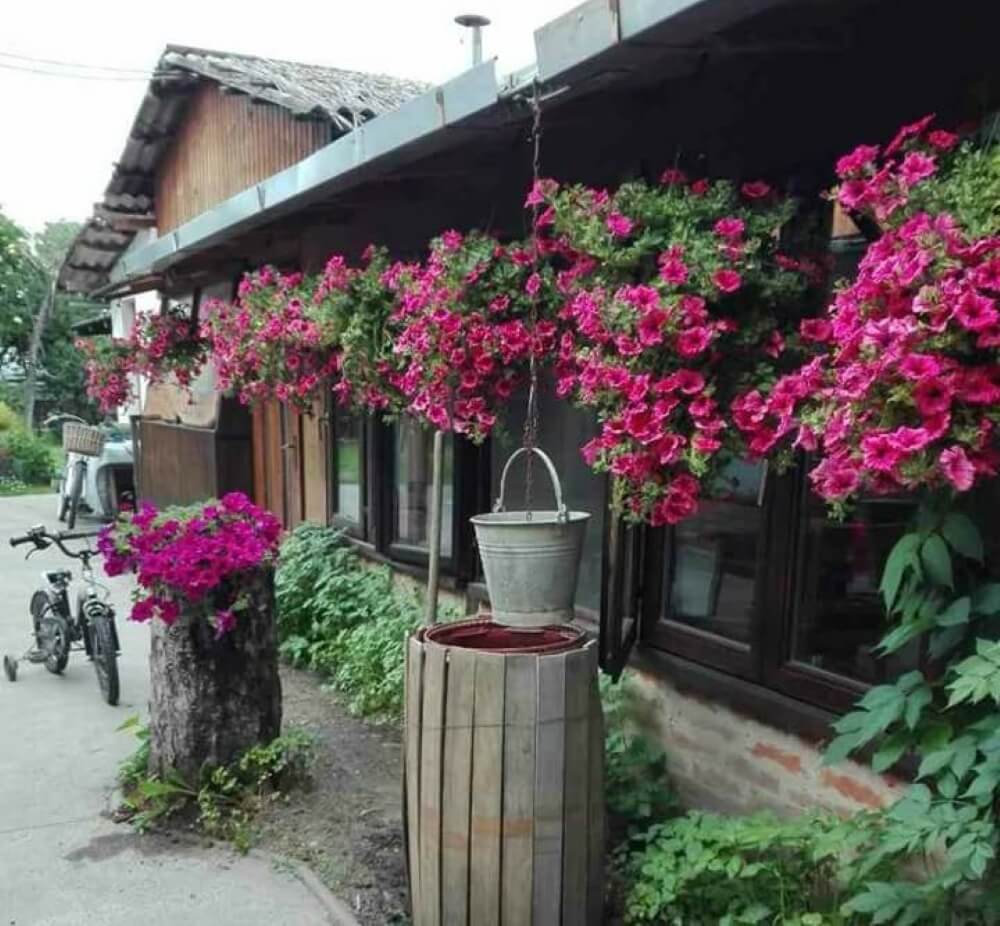 Filled with flowers, Seoski turizam Lacković in Bilje.
Filled with flowers, Seoski turizam Lacković in Bilje.
A beautiful family-run farm, with 16 beds for guests, Seoski turizam Lacković are used to hosting visitors. The farm itself has pretty rows of vegetables out back. Next to them, a variety of birds are kept. The hosting area has a lovely terrace with a view of the pretty tree-lined path that extends down through the large garden. During the recent Month of Baranja Cooking (Mjesec baranjske kuhinje), visitors tried their hand at making traditional baked foods pita and kiflice.
OPG Čudesna šuma
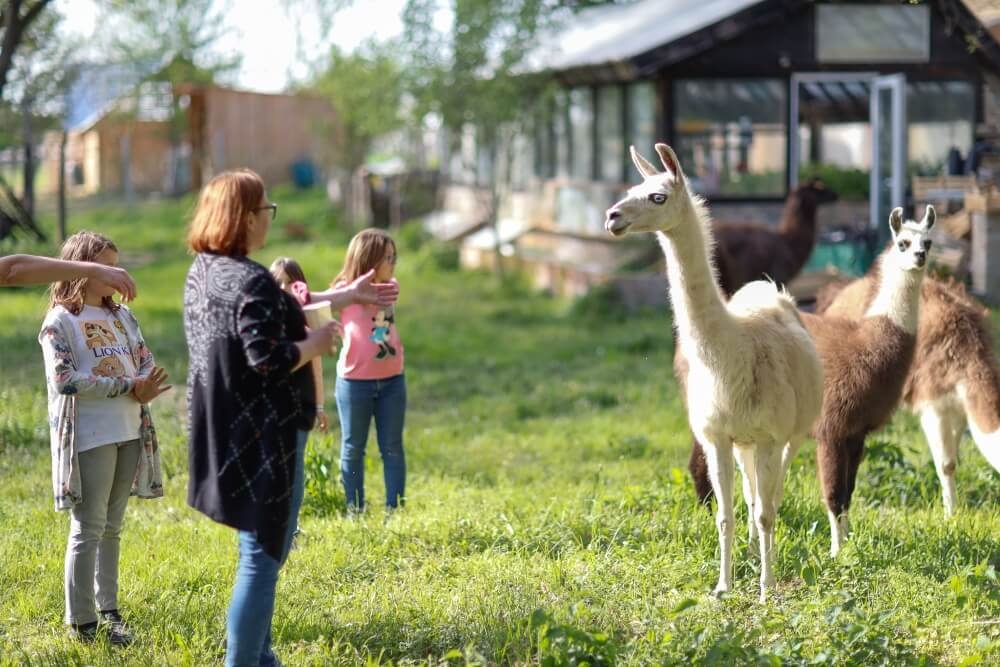 Meeting the llamas at OPG Čudesna šuma © Turistička zajednica Općine Bilje - Kopački rit.
Meeting the llamas at OPG Čudesna šuma © Turistička zajednica Općine Bilje - Kopački rit.
Visit the llamas or a special gastronomic event at this future eco-village and food forest. To read a detailed reportage from our spring 2021 visit to OPG Čudesna šuma, look here.
Both the author and Total Croatia News would like to thank the following for their invaluable help in creating this article: Ivana Jurić and the Tourist Board of Osijek-Baranja County, Marija Burek and the Tourist Board of Đakovo, Renata Forjan and Turistička zajednica Općine Bilje - Kopački rit and Domagoj Butković of expert travel guides to Slavonia and Osijek-Baranja County, Kulen travel.
OPG Čudesna šuma: Paradise Reimagined in Beautiful, Traditional Baranja
May 13, 2021 – OPG Čudesna šuma: How an unexpected turn of events helped world-renowned photographer Mario Romulić realise his lifelong dream.
War and genocide and the aftermath. Famine. Disease. Death. In a former life, harrowing images filled the lens of internationally renowned photographer Mario Romulić. But thankfully, we're now far from such scenes.
In fact, at OPG Čudesna šuma - Mario Romulić's home and family farm - we're pretty much far from everything. One other eco-farm is his only neighbour. Well, unless you count the llamas the Romulić family keep out back. Occasionally, through the rich green of surrounding trees, you see birds flying above the branches. Probably they're toing and froing from Kopački rit. The nearby Nature Park is less than a kilometre from OPG Čudesna šuma. Famously, the wetlands are home to over 250 species of birds. They are also the reason why Mario Romulić is here.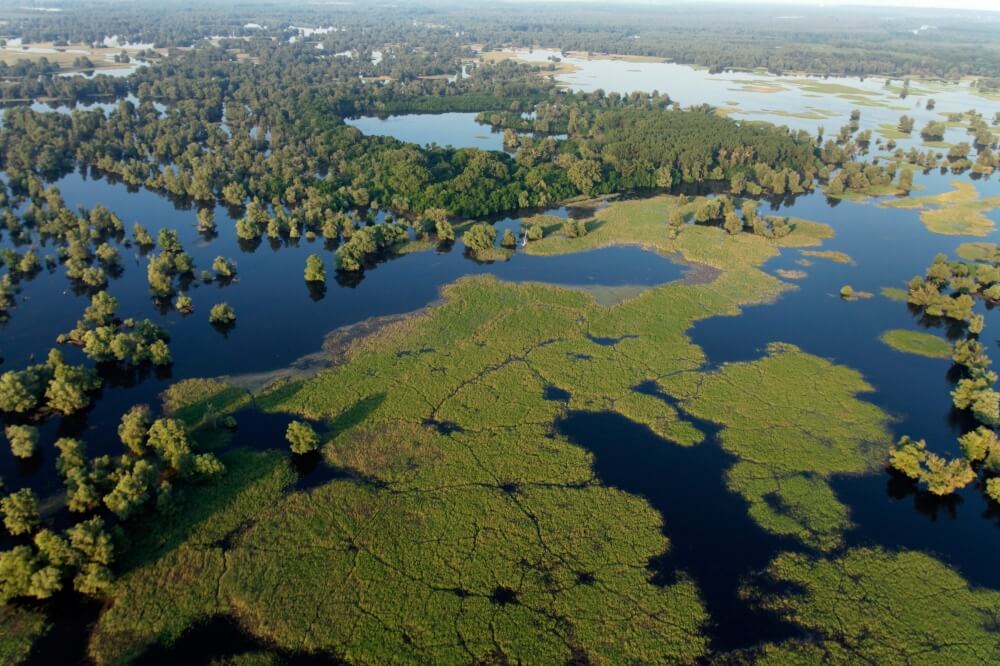 Kopački rit Nature Park © Kopački rit Nature Park.
Kopački rit Nature Park © Kopački rit Nature Park.
“Back then, I was very occupied with Kopački rit,” remembers Mario of the time, 21 years ago, when he moved to what is now OPG Čudesna šuma. “I was working as a cameraman for people like Reuters, all over the world. The assignments would last 7-10 days and I'd be in places like Afghanistan, Rwanda, Congo, Liberia, Bosnia. It was often quite dangerous. For the next 20 days, I would spend a lot of time in Kopački rit, trying to calm my nerves. It was something like a cure after seeing all these horrible scenes. Eventually, instead of travelling every day from my home in Osijek to Kopački rit, I decided to try and find something close by. And this is what I found.”
Just as this beautiful, natural landscape in Bilje, Baranja once served as a peaceful getaway for Mario Romulić, his OPG Čudesna šuma today does the same for others. Because, after dreaming for two decades of turning this blissful plot and homestead into a forest farm and eco-village, Mario Romulić is finally turning that vision into a reality.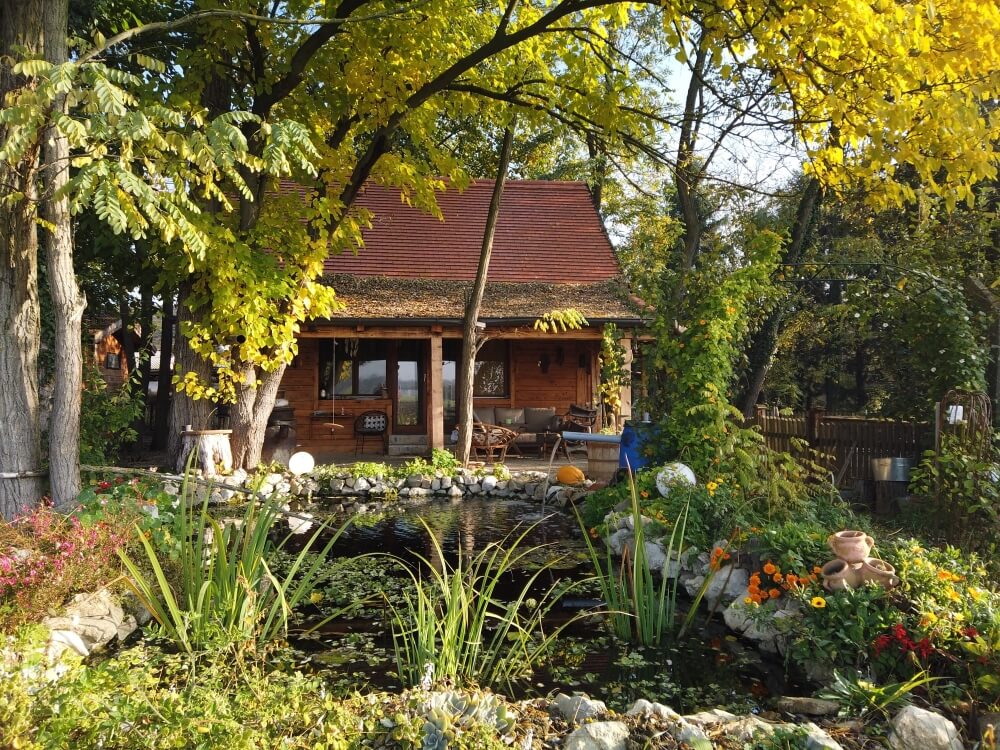 The impossibly pretty OPG Čudesna near Kopački rit Nature Park, Bilje Municipality, Baranja © OPG Čudesna šuma.
The impossibly pretty OPG Čudesna near Kopački rit Nature Park, Bilje Municipality, Baranja © OPG Čudesna šuma.
“Because of my job - first, travelling all around the world, then travelling Croatia - I did not even have much time to think about it, let alone do it,” says Mario. “But, then Corona came. Finally, I found myself at home. At last, I had time to work on my dream.”
OPG Čudesna šuma in the Month of Baranja Cooking (Mjesec baranjske kuhinje)
A group of 30 or so are Mario's guests today at OPG Čudesna šuma. They're here for a presentation of speciality cooking. It's the grand finale of the Month of Baranja Cooking (Mjesec baranjske kuhinje).
Over previous weeks, OPGs from all across the region have welcomed guests to try goulash, soups, stews, perklet and other traditional foods of the area. While visiting, they've been embraced by the beautiful landscape of Baranja. Not only have they discovered how this delightful, distinct cuisine tastes, but also they've learned exactly how it's prepared. However, they've evidently saved the best for last. On the menu today, river fish inventively cooked, accompanied by a riotous rainbow of seasonal vegetables.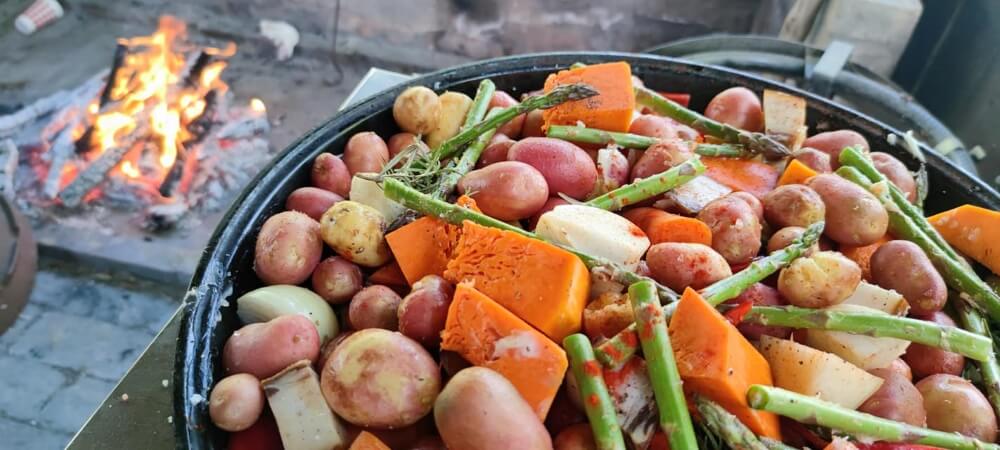 Seasonal vegetables of Baranja in springtime at the Month of Baranja Cooking (Mjesec baranjske kuhinje) © OPG Čudesna šuma.
Seasonal vegetables of Baranja in springtime at the Month of Baranja Cooking (Mjesec baranjske kuhinje) © OPG Čudesna šuma.
It's a beautifully sunny day, right at the start of May. It depends on your preference, but looking across this happy vista in the glorious sunshine, it's difficult to imagine this not being the perfect time to be in Baranja. Young children are raised to chest height by their parents so they can meet Mario's free-roaming llamas face-to-face. The children's faces flit between surprise, curiosity and delight. The llamas return their stare. They're used to welcoming new guests.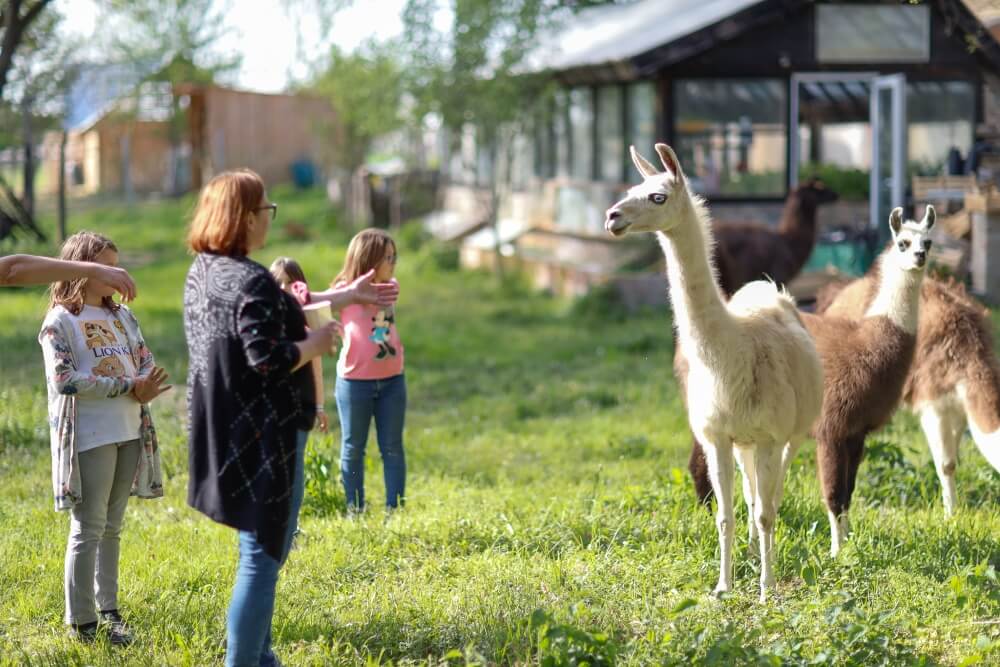 Meeting the Romulić family llamas at OPG Čudesna šuma © Turistička zajednica Općine Bilje - Kopački rit.
Meeting the Romulić family llamas at OPG Čudesna šuma © Turistička zajednica Općine Bilje - Kopački rit.
Partially shaded by trees, the smiling adult guests sit casually on wooden benches around a central, outdoor cooking area. Several open fires display a range of traditional cooking methods. Steam rises from a cast-iron stove suspended over one. Beneath the vapours, you can make out the dish is fish paprikash. It's unmistakable because of the deeply red coloured bubbles, a result of generous amounts of paprika.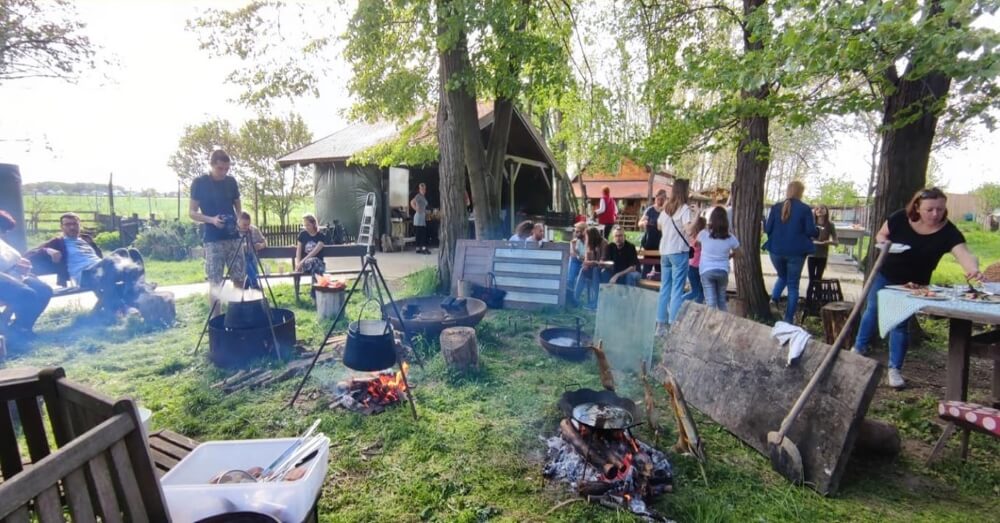 Guests enjoy a warm springtime day at OPG Čudesna šuma during the Month of Baranja Cooking (Mjesec baranjske kuhinje), as fish paprikas cooks over an open fire © OPG Čudesna šuma.
Guests enjoy a warm springtime day at OPG Čudesna šuma during the Month of Baranja Cooking (Mjesec baranjske kuhinje), as fish paprikas cooks over an open fire © OPG Čudesna šuma.
A huge bag of this paprika sits propped up, close by. It's from another organic OPG, just a kilometre or so from here. The colour is vivid, impossibly red, unrecognisable from anything store-bought. At the next fire, pike impaled on wooden sticks are placed far enough from the flickering flames so they cook slowly and do not burn.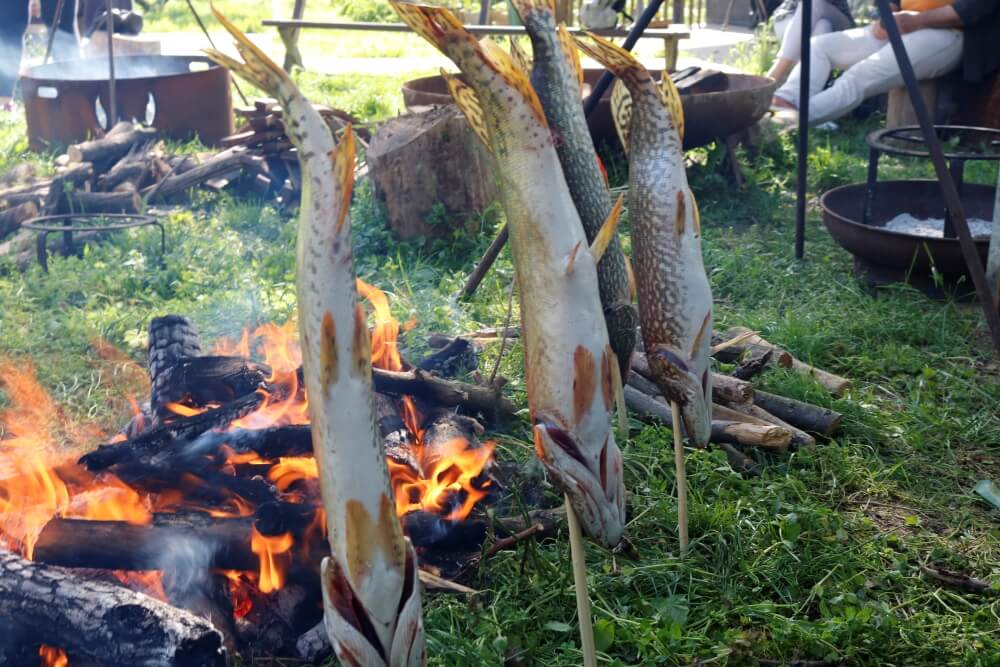 Pike impaled on sticks, cooking by an open fire at OPG Čudesna šuma @ Marc Rowlands.
Pike impaled on sticks, cooking by an open fire at OPG Čudesna šuma @ Marc Rowlands.
In the outdoor kitchen, Mario Romulić's co-chefs prepare an unending supply of fish dishes and vegetables. Carp, catfish, trout, bream. There's a bounty of fresh asparagus. It's that time of year. With the restraint of experience, they've cooked it perfectly. After the crunch of the bite, the flavour explodes. They're seasoned simply – delicious olive oil and sea salt.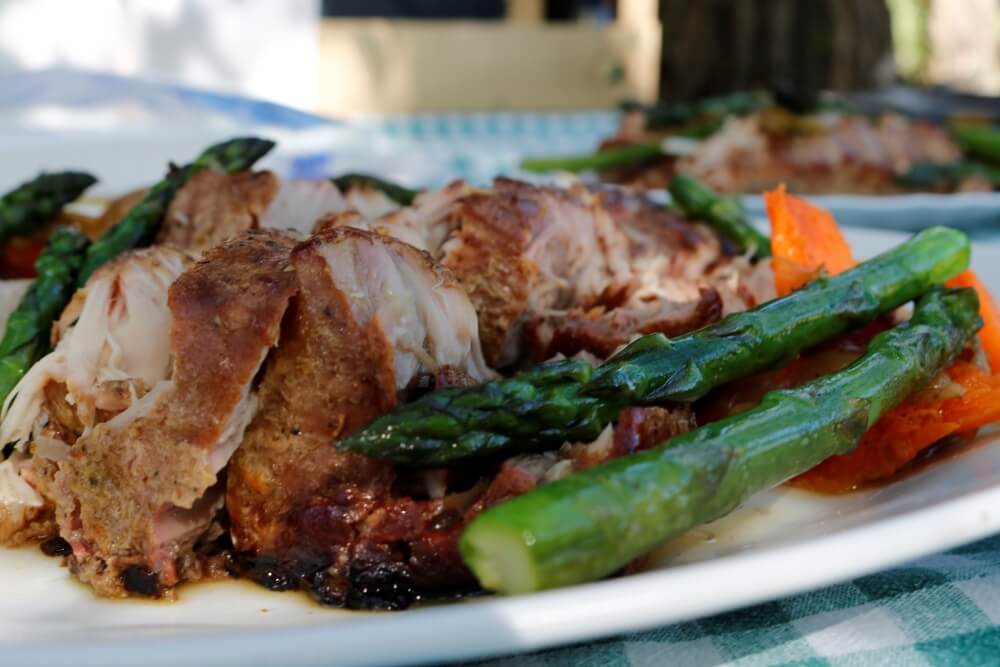 Seasonal asparagus, perfectly cooked, served with smoked river fish © Marc Rowlands.
Seasonal asparagus, perfectly cooked, served with smoked river fish © Marc Rowlands.
A group of peers – accomplished chefs from Osijek-Baranja restaurants – peak over the shoulders of Romulić's co-chefs. They're admiring the inventive techniques employed. Although, being chefs, they can't help themselves. They end up briefly forgetting their families in order to help out.
Mario Romulić, the host with the most
 Mario Romulić © Turistička zajednica Općine Bilje - Kopački rit.
Mario Romulić © Turistička zajednica Općine Bilje - Kopački rit.
After all the guests arrive, Mario Romulić holds court. Cheerily he welcomes us all to OPG Čudesna šuma and the event. Without question, the success of rural, village tourism depends on the personalities of the hosts. It's no good plonking a group of visitors in a pretty place and throwing some food in front of them. We've all seen trees, grass and food before. Rural tourism is not just about the place, it's about the experience, the ambience. And, especially, it's about the people.
Hands down, the OPGs of Slavonia and Baranja are the best in Croatia at this. The folks here are famous for their friendliness, warm welcome and big personalities. And, Mario Romulić has one of the biggest of them all.
In the research for this reportage, looking back at archive pictures of Mario Romulić is startling. During his years spent as an international photographer, he himself has been photographed many times – on assignment in distant countries, at the opening of exhibitions that have showcased his celebrated work. In most, there's an intensity to his stare. It's sometimes difficult to look at. He looks like a man who has tales you never want to hear, like a man who has seen too much.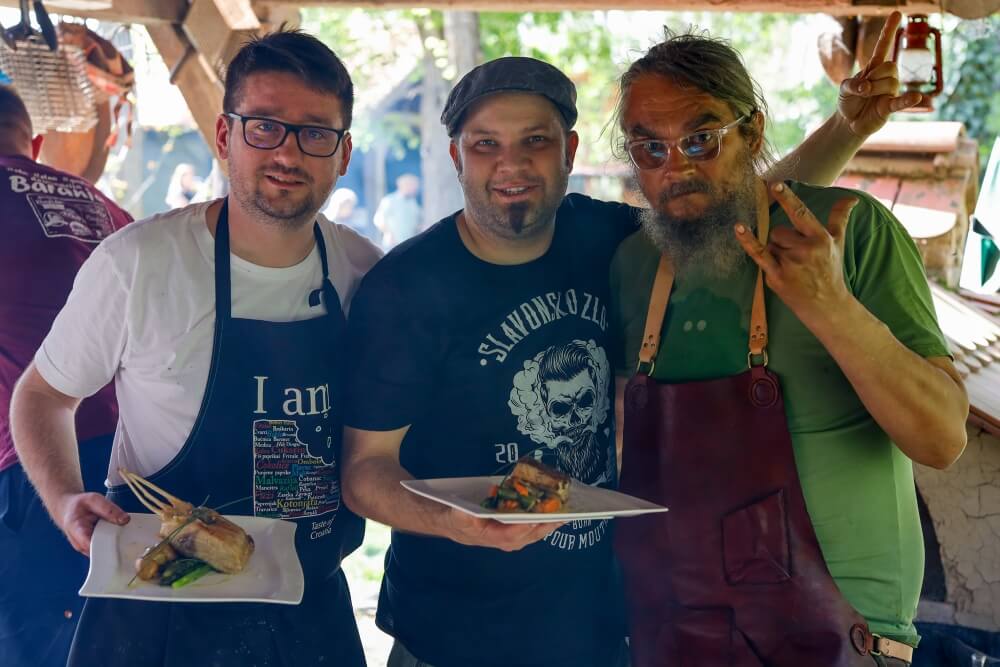 (L- R) OPG Čudesna šuma co-chef at the event Mihael Tomić, renowned Osijek chef Ivan Đukić currently of Osijek's Lipov Hlad and a happy Mario Romulić © Turistička zajednica Općine Bilje - Kopački rit.
(L- R) OPG Čudesna šuma co-chef at the event Mihael Tomić, renowned Osijek chef Ivan Đukić currently of Osijek's Lipov Hlad and a happy Mario Romulić © Turistička zajednica Općine Bilje - Kopački rit.
By comparison, the Mario Romulić that welcomes us at OPG Čudesna šuma today is unrecognisable. Sure, there's a little more grey to his long hair and beard but, otherwise, he looks incredibly healthy and happy. The intense stare is gone, replaced by a warm, wide smile that shows across his entire face. Even in early May, he has a darkened skin tone, the telltale signs of a man who spends much of the day outdoors. Romulić's enthusiasm for his guests and the event is palpable. After his sincere welcome, this enthusiasm is immediately transferred to each of his guests.
Mrs Romulić ensures everyone's glass is overflowing with wine or juice. One of Mario's teenage sons helps out with the food, while the other is taking photographs of the event. Well, someone has to do the photography now that dad wants to be a chef and host! Mario himself is engulfed in smoke. Among the other duties he's assumed today, Mario is tending a smoker. Without a doubt, this is the most revelatory cooking method we meet today.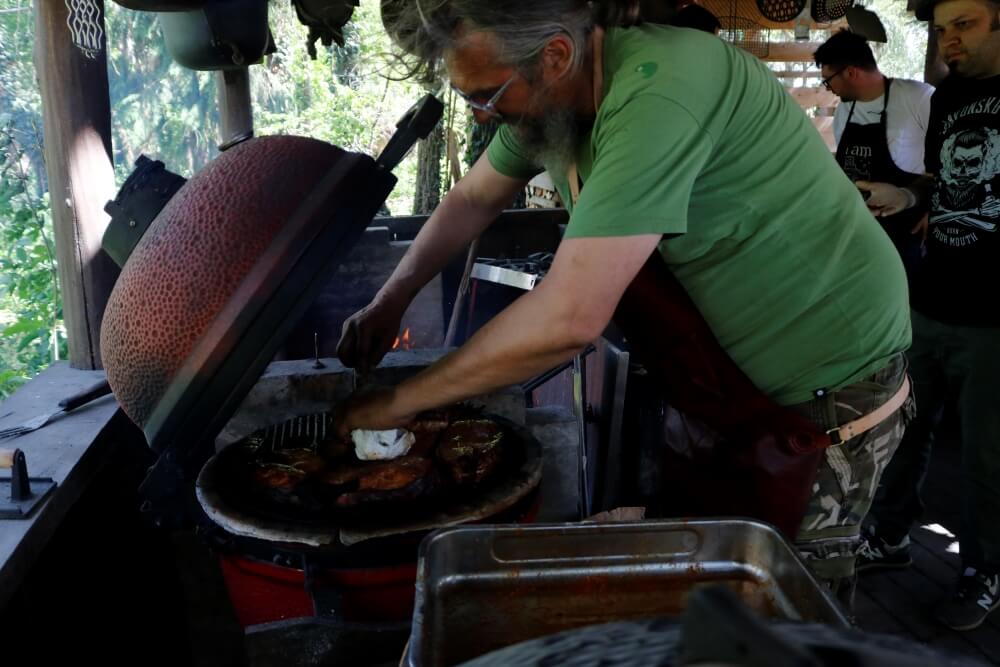 Mario Romulić tends to smoked river fish, a revelatory gastronomic experience at OPG Čudesna šuma © Marc Rowlands.
Mario Romulić tends to smoked river fish, a revelatory gastronomic experience at OPG Čudesna šuma © Marc Rowlands.
Smoked fish of Slavonia and Baranja at OPG Čudesna šuma
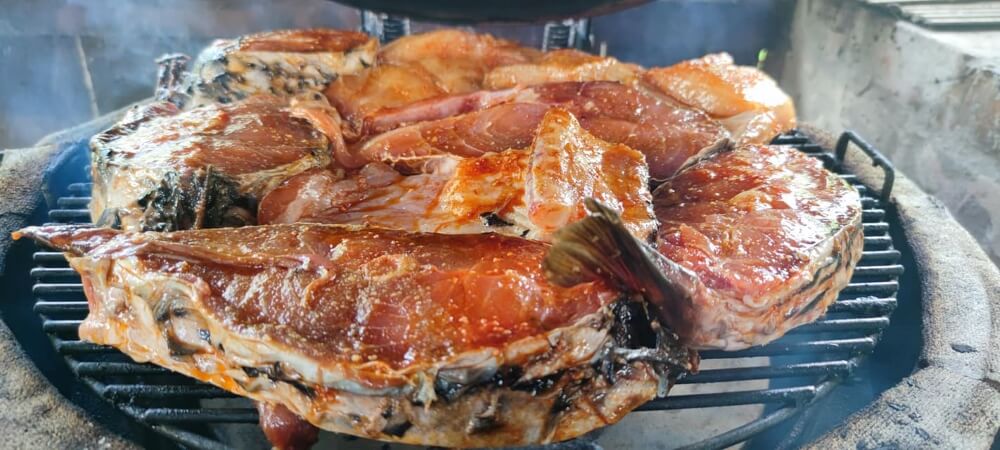 An American-style smoker, loaded with river fish. TOP TIP: A great way to stop fish sticking to the grill of your barbecue or smoker is to place them on top of a layer of lemon slices © OPG Čudesna šuma.
An American-style smoker, loaded with river fish. TOP TIP: A great way to stop fish sticking to the grill of your barbecue or smoker is to place them on top of a layer of lemon slices © OPG Čudesna šuma.
“We do have smoked fish here, but not in this way,” he says. “This is more like an American grill. I never heard of anyone trying Baranja cooking like this. Actually, I never heard of anyone nearby who has a smoker like this. The first time I tried stuka (pike) in the smoker, that was unbelievable. It's incomparable, really special.” Exquisite presentation of river fish by the enthusiastic team of OPG Čudesna šuma © Turistička zajednica Općine Bilje - Kopački rit.
Exquisite presentation of river fish by the enthusiastic team of OPG Čudesna šuma © Turistička zajednica Općine Bilje - Kopački rit.
“In Slavonia and Baranja, there are just a few ways we usually cook our river fish - carp on sticks, fish paprikash, perklet and fried fish. So, we tried something new, to expand the palette. For instance, almost nobody eats Babuška (a type of carp). They feed it instead to their pigs. It costs 5 kuna a kilo! But, if you cook it in this completely natural way, it's delicious.”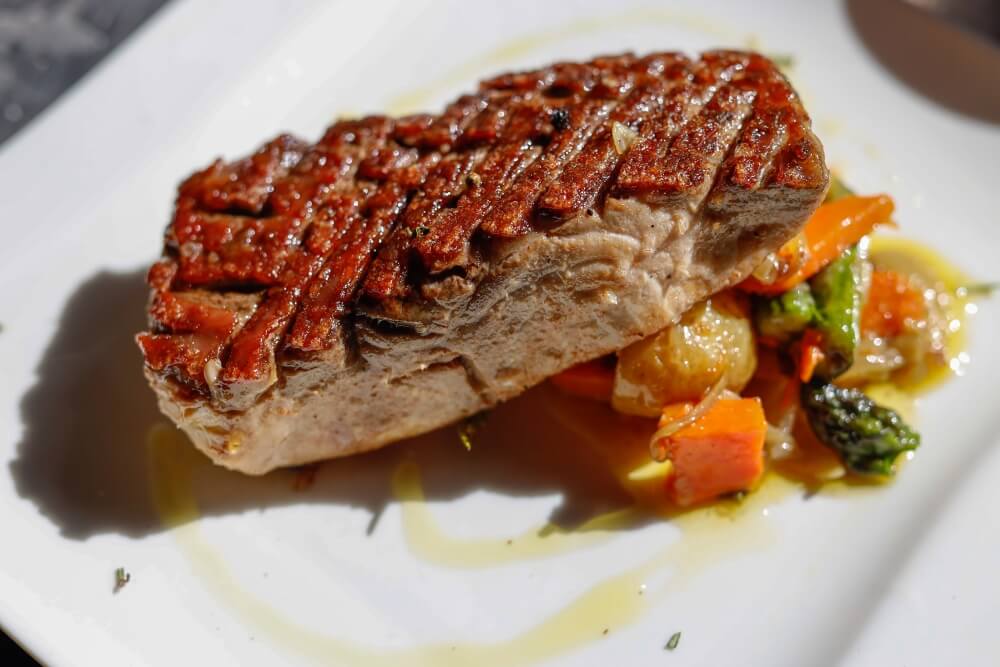 More river fish, cooked by the team of OPG Čudesna šuma © Turistička zajednica Općine Bilje - Kopački rit.
More river fish, cooked by the team of OPG Čudesna šuma © Turistička zajednica Općine Bilje - Kopački rit.
He's not wrong. Today's mountain of different smoked fish is the talk on most of the adult lips. The rich flavours surprise. Compliments and returns for second helpings ensue. Mario stands to one side, happily watching as his smoked fish secret escapes. In the future, he plans similar events based on other regional foods - Black Slavonian pig, wild meats like deer or boar. Eventually, in the seven hectares of land he owns here, he would like to expand OPG Čudesna šuma as an eco-village, with beds for visitors, a natural swimming pool and then surround it with a food forest. Big plans. It looks as though the camera may stay more permanently in the hands of his son. Because it's difficult to imagine Mario Romulić leaving his happy place and the realisation of his long-held dream.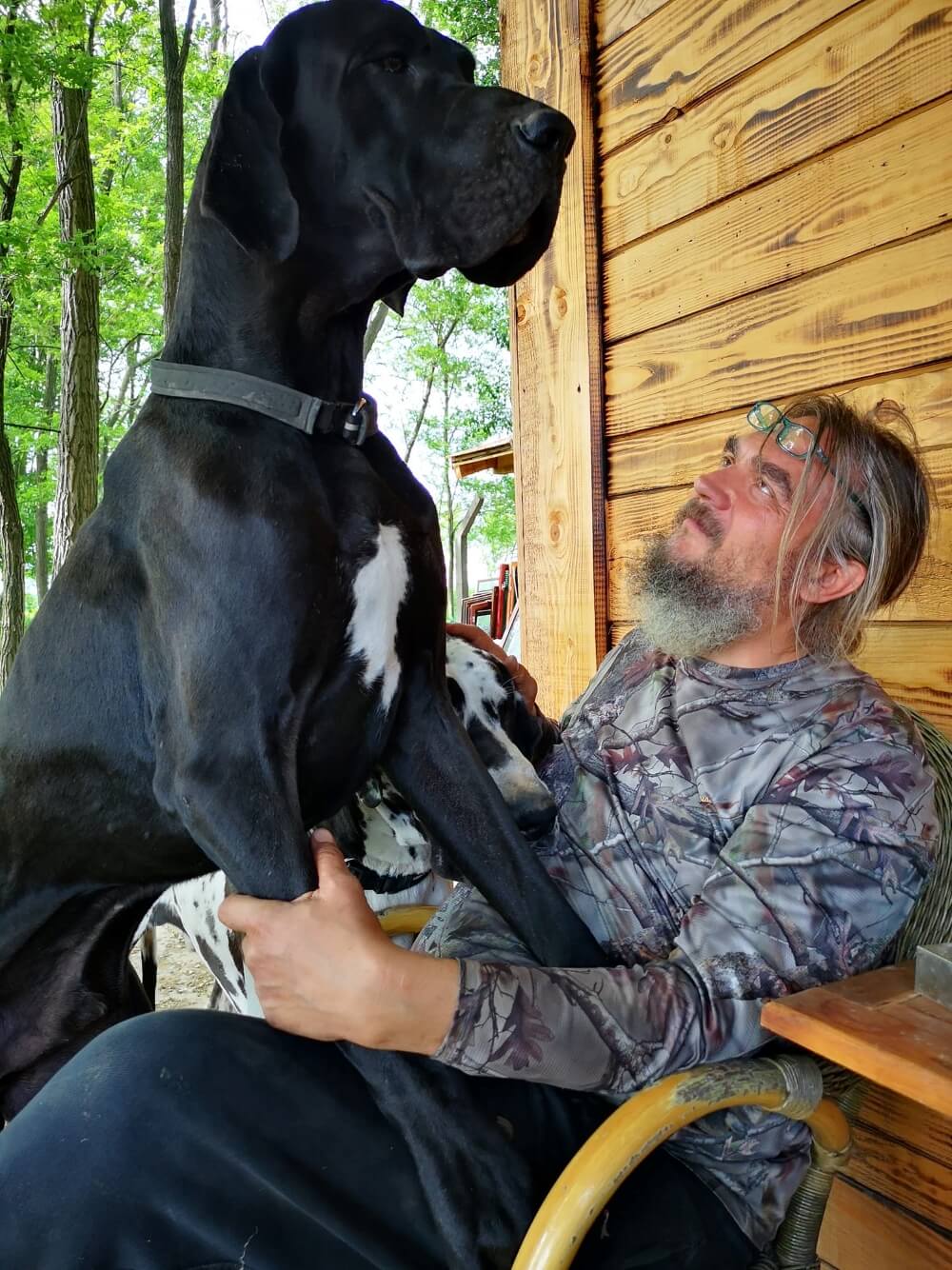 Mario Romulić in his happy place, with a friend © OPG Čudesna šuma.
Mario Romulić in his happy place, with a friend © OPG Čudesna šuma.
Both the author and Total Croatia News would like to thank the following for their invaluable help in creating this article: Ivana Jurić and the Tourist Board of Osijek-Baranja County, OPG Čudesna šuma, Mario Romulić and family, Renata Forjan and Turistička zajednica Općine Bilje - Kopački rit and Domagoj Butković of expert travel guides to Slavonia and Baranja, Kulen travel.
Touch of Baranja Photo Exhibition in Zagreb Until End of April
April 21, 2021 - A Touch of Baranja showcases 20 photos of the Baranja region to promote this rich natural and cultural site to both domestic and foreign visitors.
If you want to experience a touch of Baranja, but you're stuck in Zagreb, the city's Flower square (Cvjetni trg) offers you a compromise.
Dodir baRAnJe (A Touch of Baranja), an outdoor photo exhibition that will remain open until the end of April, highlights 20 photos of beautiful Baranja.
''A picture says a thousand words, so this is how we decided to present the beauty of Baranja and motivate Zagreb's citizens and their guests to visit the region located between the Danube and Drava rivers next to the border with Hungary to have a proper break,'' says the website of the Baranja Tourist Board.
The Tourist Board, along with Tourist Boards of Draž and Bilje-Kopački Rit hosted the event.
Nenad Milić, Dubravko Franjin, Romulić&Stojčić Studio, Mario Đurkić, and Zvonimir Janković are the photographers whose work is being featured in the exhibition. Below every photo, there is a QR code that offers an explanation of the photo both in English and Croatian, and in the evening, the photos are illuminated by solar power collected during the day.
As written by the Explore Croatia site, Baranja is special for its display of multiculturalism of the people who live there and who have previously passed through the territory. Tradition and cultural heritage in the area have survived the challenges of time, and nowhere is that more visible than in Baranja's cuisine.
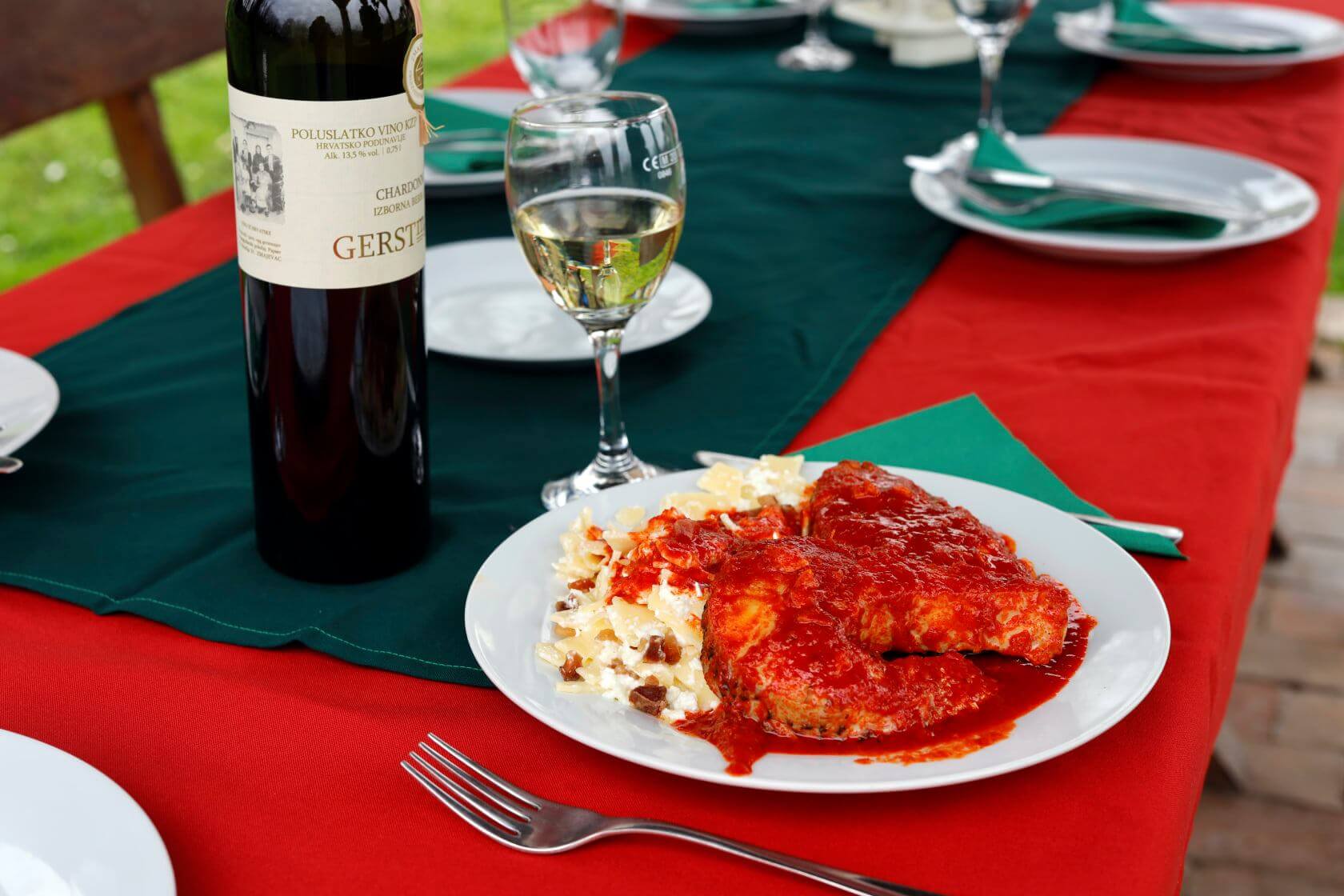
© Visit Baranja
''Baranja continues to remain a special destination which will tell the traveller various stories about tradition, family, life secrets, love, death, wines, hot peppers, specific fishing, weddings…“, explains the Explore Croatia site.
Baranja also offers the richness of nature as it is surrounded by rivers and the Kopački Rit swamp and bird reserve that is home to a wide and impressive variety of animals and plants, representing a real treat for the dedicated traveller.
When in Baranja, make sure to try the delicious Fiš Paprikaš, Baranja's own local Kulen recipe, and carp prepared in a delicious way only Baranja knows how to do.
Learn more about Croatia's food on our TC page.
For more about travel in Croatia, follow TCN's dedicated page.
Syrian Migrant Family Rescued from Inaccessible Slavonia Wetlands
February 13, 2021 – Osijek-Baranja police rescued a Syrian migrant family, including two children, from inaccessible Slavonian wetland terrain. They had become cut off and stranded on an island, surrounded by swollen waters
Osijek-Baranja police have rescued a Syrian migrant family, including two children, from inaccessible Slavonian wetland terrain, police revealed in a statement released on Saturday 13 February. They had become cut off, surrounded by swollen waters, in the area around Kopacki rit Nature Park.
At around 10 a.m. Friday 12 February, in a forest area near Aljmaš, police found a 19-year-old Syrian citizen during a regular patrol. The 19-year-old asked for police help because his family was cut off on a river island of Kopački rit.
Immediately after learning about the other members of the Syrian migrant family, the police dispatched two patrol boats to look for them. They discovered the Syrian migrant family in a very short time. In addition to the teenager already discovered, police found the rest of the Syrian migrant family travelling party to include three women, born in 1973, 1998 and 1999, and two children, born in 2016 and 2017.
The found persons were transported to the mainland by the police. There, they were met by an ambulance, which had been called due to cold temperatures in the area and fears their exposure could have lead to hypothermia. They were transported to the Osijek Clinical Hospital Center (KBC).
The Syrian migrant family was released from the hospital later in the same day.
It has been established that the Syrian migrant family have expressed their intention to apply for international protection in the Republic of Croatia. They have been sent to the Shelter for International Protection Seekers, a reception centre for asylum seekers in Zagreb, said the police.
Kopački Rit, where the Syrian migrant family were rescued, is a nature park in the eastern Croatia municipalities of Bilje and Kneževi Vinogradi. It is located northwest of the confluence of the Drava and the Danube, right next to the border with Serbia. It is comprised of many backwaters, marshland and ponds that exist immediately between these two great rivers. It is one of the most important, largest and most attractive preserved intact wetlands in Europe.
For the latest travel info, bookmark our main travel info article, which is updated daily.
Read the Croatian Travel Update in your language - now available in 24 languages.
Croatian Wetland Areas Mark 50th World Wetlands Day
February 2, 2021 – Today is the jubilee 50th World Wetlands Day. Croatia marks this year's theme "Wetlands and Water" in line with epidemiological measures, as many public institutions of Croatian wetland areas organize numerous online and offline activities.
On the occasion of World Wetlands Day, the Ministry of Economy and Sustainable Development has pointed to a growing freshwater shortage crisis that poses a significant threat to humanity and the planet. This year's theme – Wetlands and water – pays special attention to wetlands as a freshwater source.
50 percent of wetlands lost in the last 50 years
Croatia has several wetlands: Nature Parks Kopački Rit, Lonjsko Polje, and Vrana Lake, the Special Reserve Crna Mlaka in Jastrebarsko, and the Lower Neretva River. Croatian wetland areas seek to encourage actions to restore wetlands and stop their loss by marking World Wetlands Day.
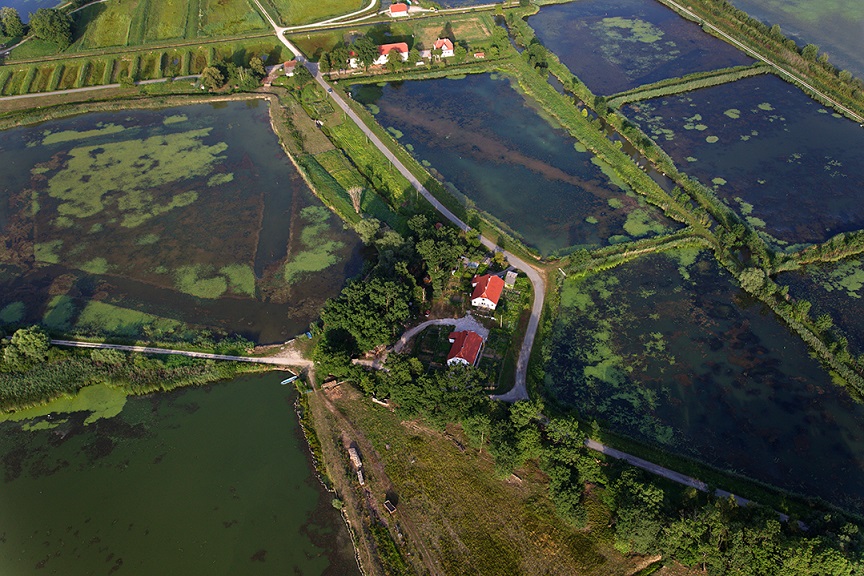
Crna Mlaka in Jastrebarsko / Public Institution Green Ring of the Zagreb County
On this day in 1971, the Convention on Wetlands of International Importance, Especially as Waterfowl Habitat, was signed in the Iranian city of Ramsar. The Convention, known as the Ramsar Convention, obliges each signatory country to the general conservation of wetlands on its territory and provides a framework for international cooperation in protecting and sustainable use of wetlands.
Croatia has been a signatory to the Ramsar Convention since 1991, and the above mentioned Croatian wetland areas are on the Ramsar Convention's list.
As a contribution to implementing the Ramsar Convention in Croatia, three relatively small areas within the Neretva delta were proclaimed as special reserves last year. The places named "Blue Eye and Lake Desna," "Neretva's Estuary," and "Kuti" have preserved, unique, and representative wetland habitats and characteristic species of particular importance for Croatia.
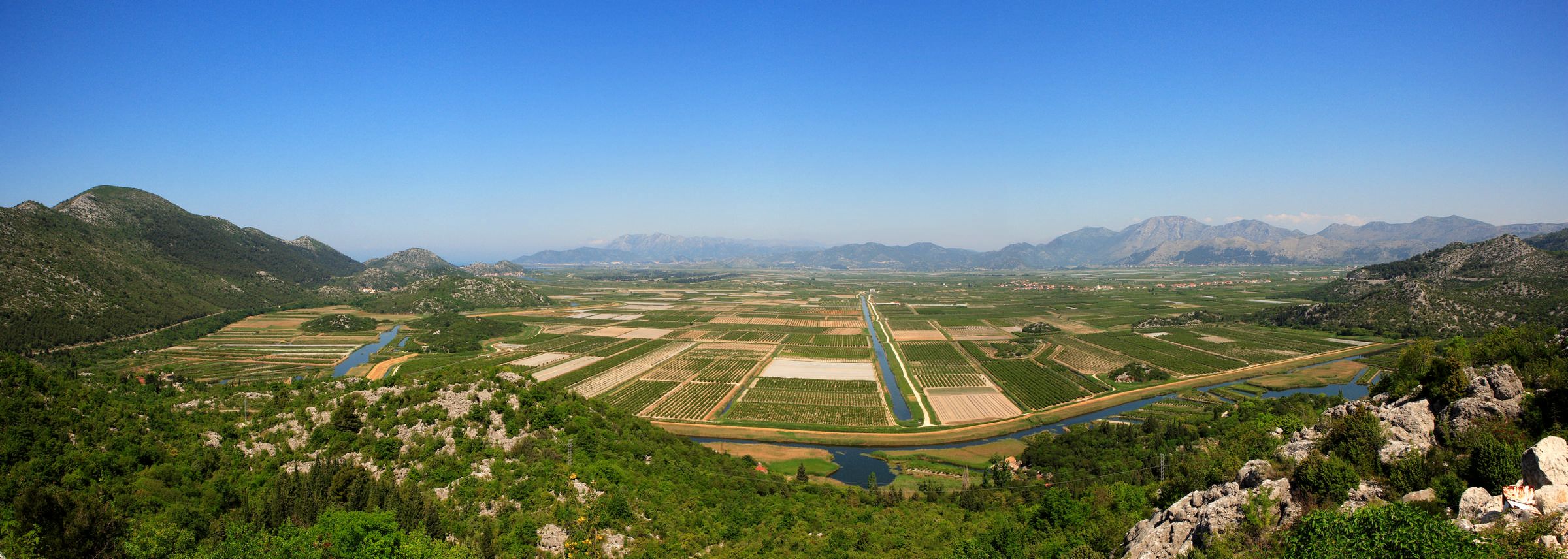
Neretva River / Copyright Romulić and Stojčić
Although wetland habitats represent one of the greatest values of biological and landscape diversity, since more than 40 percent of plant and animal species are associated with them, they are also the most endangered ecosystems in the world. In the last 50 years, 50 percent of all wetlands in the world have been lost.
Wetland areas as the best flood defense
Apart from being wet habitats for numerous plant and animal species, they are also crucial in adapting to climate change. Thus, wetland habitats are extremely important in flood defense, especially in Croatia.
Lowland rivers with moist habitats along their trough, into which they flow during high water levels, represent the best way to defend against floods. This is precisely how the flood defense system in Posavina was built. Thus, high waters of the Sava River flow into the Lonjsko Polje Nature Park floodplains, while Kopački Rit Nature Park "receives" high waters of the Drava and Danube, thereby changing their landscapes.
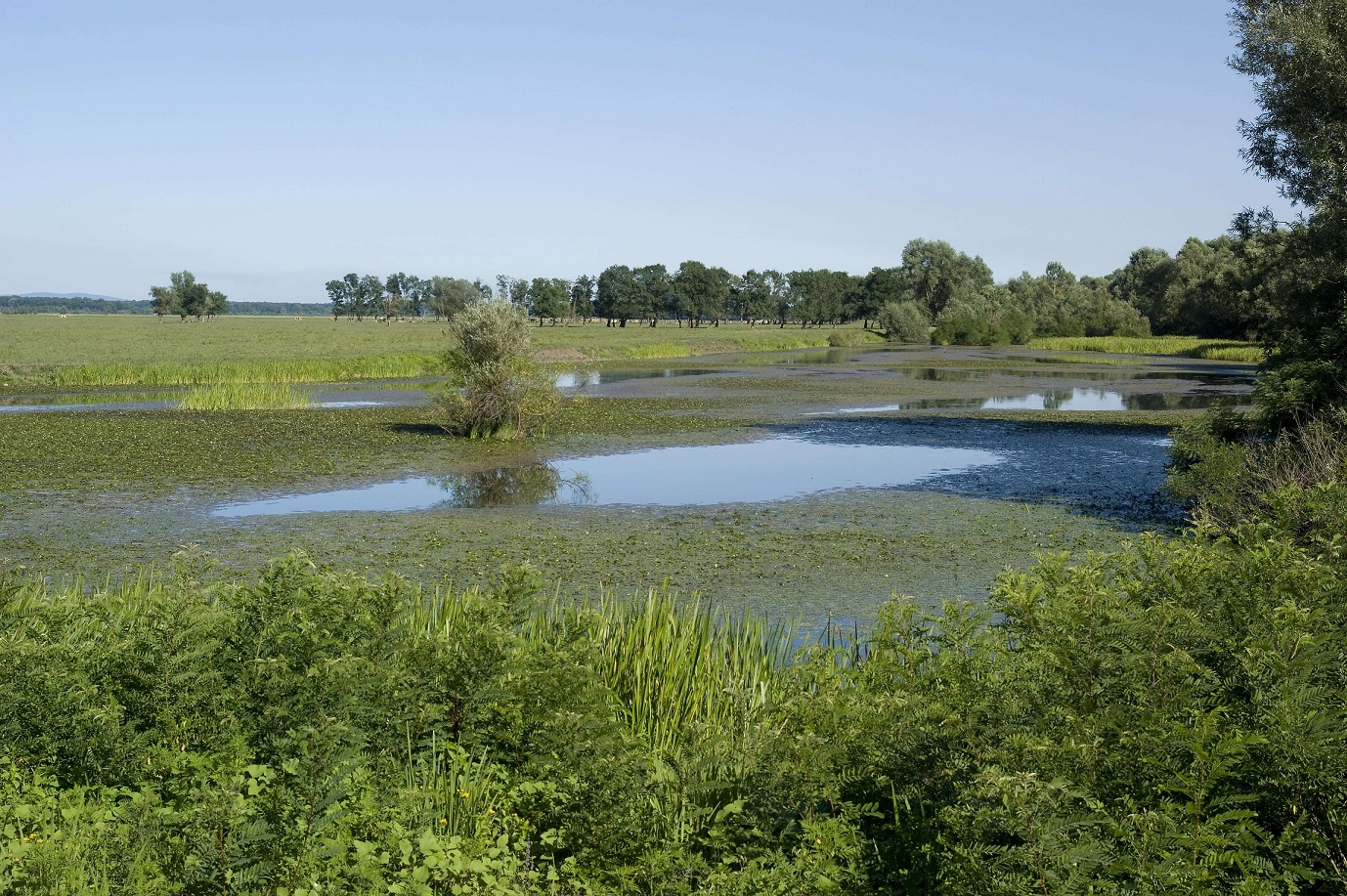
Lonjsko Polje Nature Park
The value of wetland habitats is also related to the restoration of groundwater supplies, the consolidation of shores, the retention of nutrients and sediments, and water purification. On World Wetlands Day, public institutions that manage protected areas in Croatia organize numerous activities.
Due to epidemiological measures, Lonjsko Polje Nature Park will not organize the traditional gathering "Future on the edge of the swamp" this year. However, the importance of water and wetlands will be discussed at a small event at the Public Institution headquarters in Krapje.
As part of this event, Matica Hrvatska's branch from Kutina will review the meetings "Future on the Edge of the Swamp" in the last 20 years. Employees of the Public Institution will participate in a workshop on the construction of roof platforms for white stork nests.

Village of Krapje / Lonjsko Polje Nature Park Boris Krstinić
In Northern Dalmatia, Vrana Lake Nature Park continues cooperation with the School of Applied Arts and Design in Zadar. Students will have virtual and field lectures on the topic of wetlands, their importance, and rich biodiversity, emphasizing birds. Students will create illustrations of different bird species presented in a virtual exhibition on the Park's website.
The traditional 9th "Bird Masquerade" will be organized for primary school students, and students from 1st to 4th grade of local primary schools will make masks of wetland birds. On February 6, free bird watching will be organized for all visitors.
The promotional video "Vrana Lake Nature Park: a place where birds always return" by the author Goran Šafarek will be shown for the first time:
Kopački Rit Nature Park traditionally celebrates World Wetlands Day in cooperation with Elementary School in Bilje. Second-grade students prepared artworks, literary ensembles, and a musical performance on the topic of Kopački Rit and its natural features. A lovely presentation of their work is also available online.
The Public Institution for the Management of Protected Nature Areas of the Dubrovnik-Neretva County conducts education on the importance of wetlands through an LED screen in Metković, where images with short educational texts about wetlands will be shown.
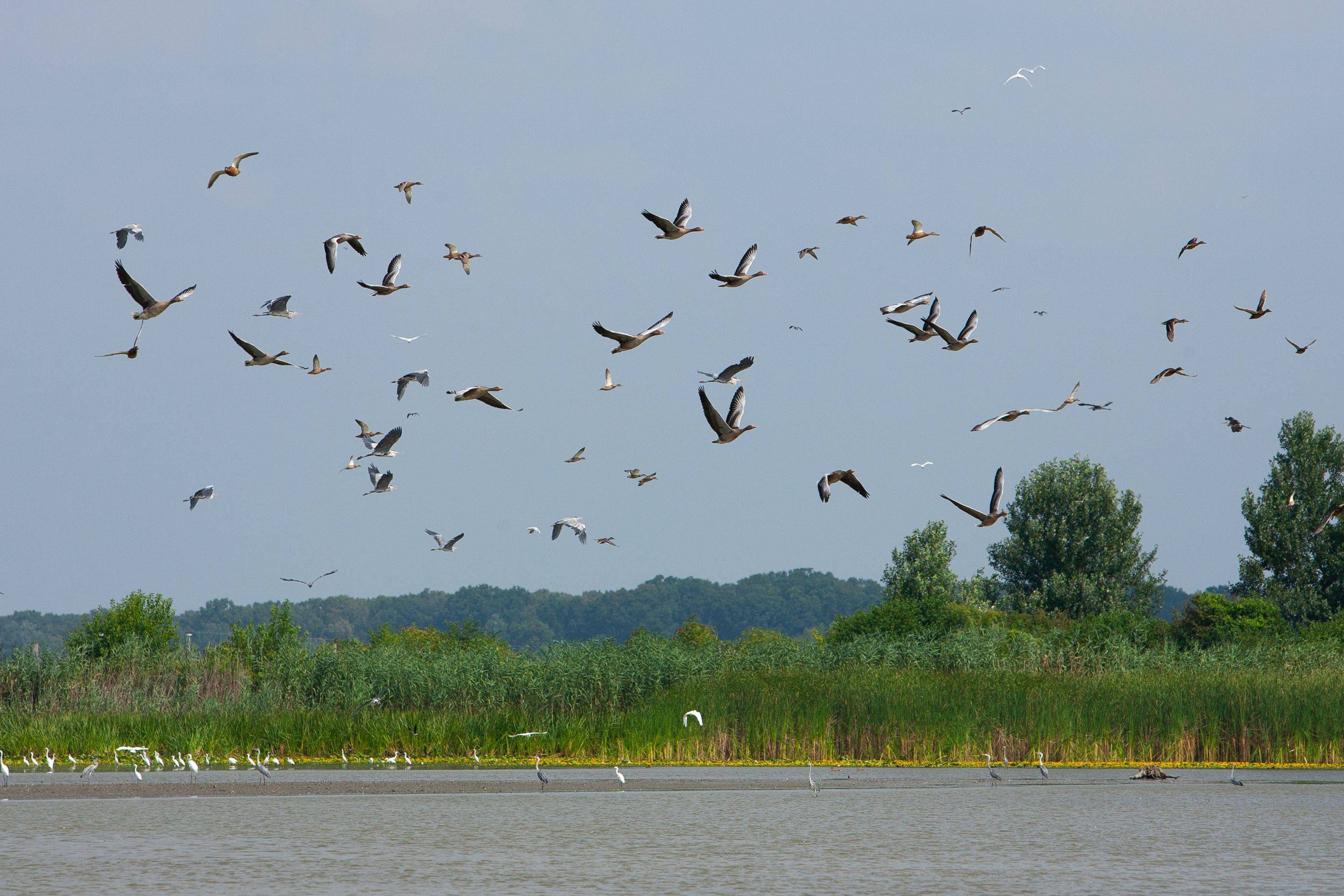
Kopački Rit Nature Park / Copyright Romulić and Stojčić
PHOTOS: Croatia's Incredible Culture And Nature - Romulić and Stojčić New Exhibition
August 25, 2020 - The award-winning artistic photography duo Romulić and Stojčić showcase their work 2011 – 2019 for free at Ulupuh Gallery, Zagreb until Monday 7 September
Mario and Dražen aka Romulić and Stojčić have been collaborating for almost 20 years. Their innovative photography is often breathtaking and shows the very best of Croatian cultural and natural heritage.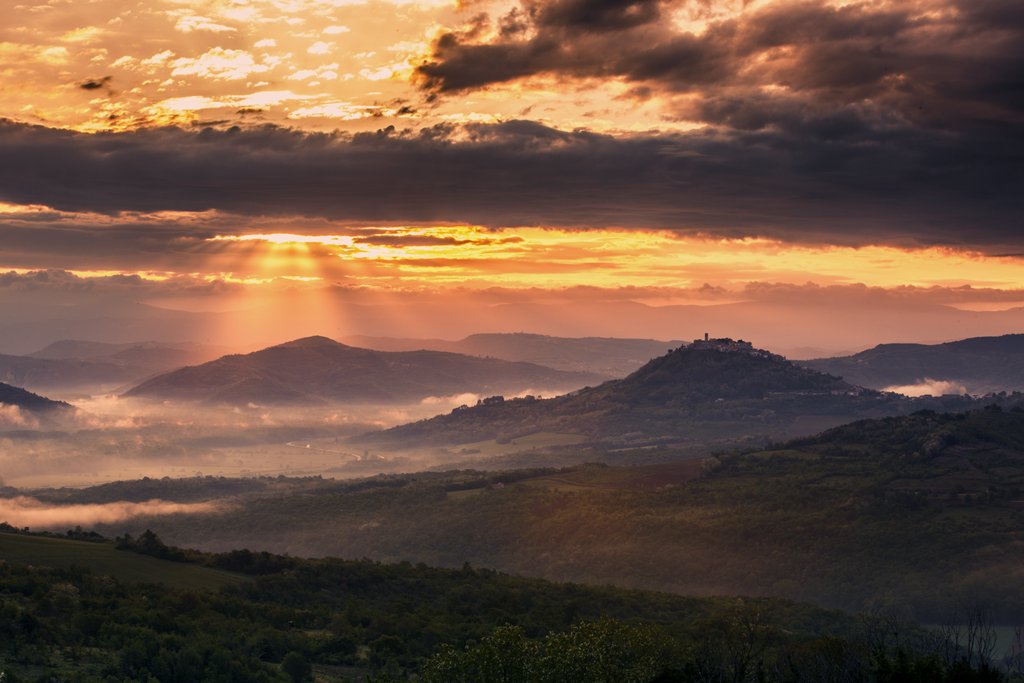
Motovun
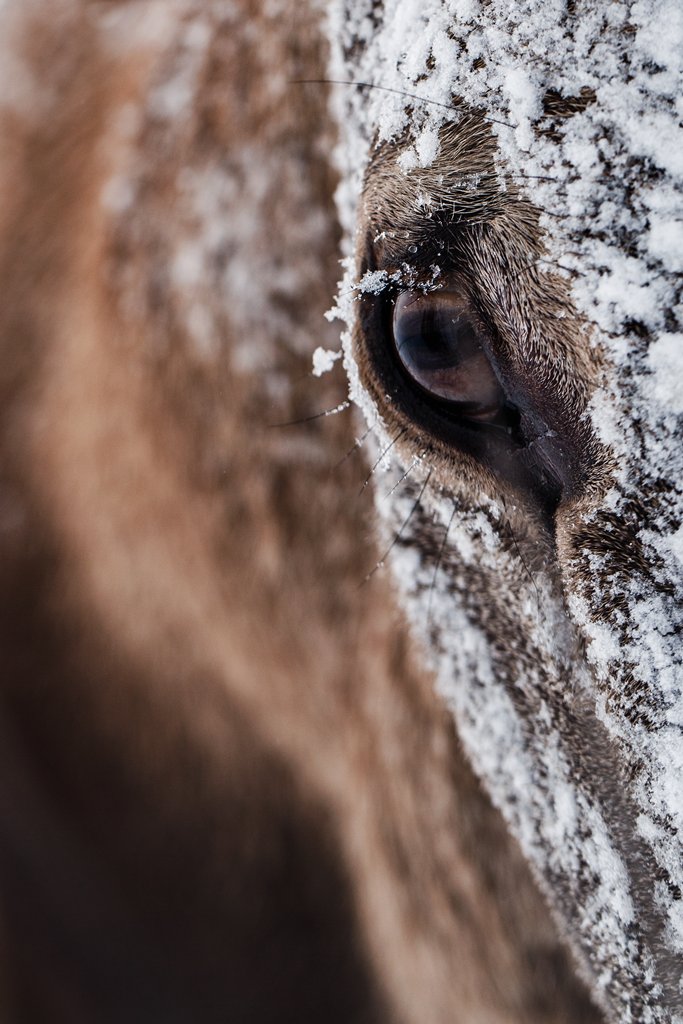
A new exhibition, 'Interval' showcases some of their best-loved work from 2011 – 2019. Curated by Elizabeta Wagner, the exhibition opened on Tuesday 25 August and runs until Monday 7 September.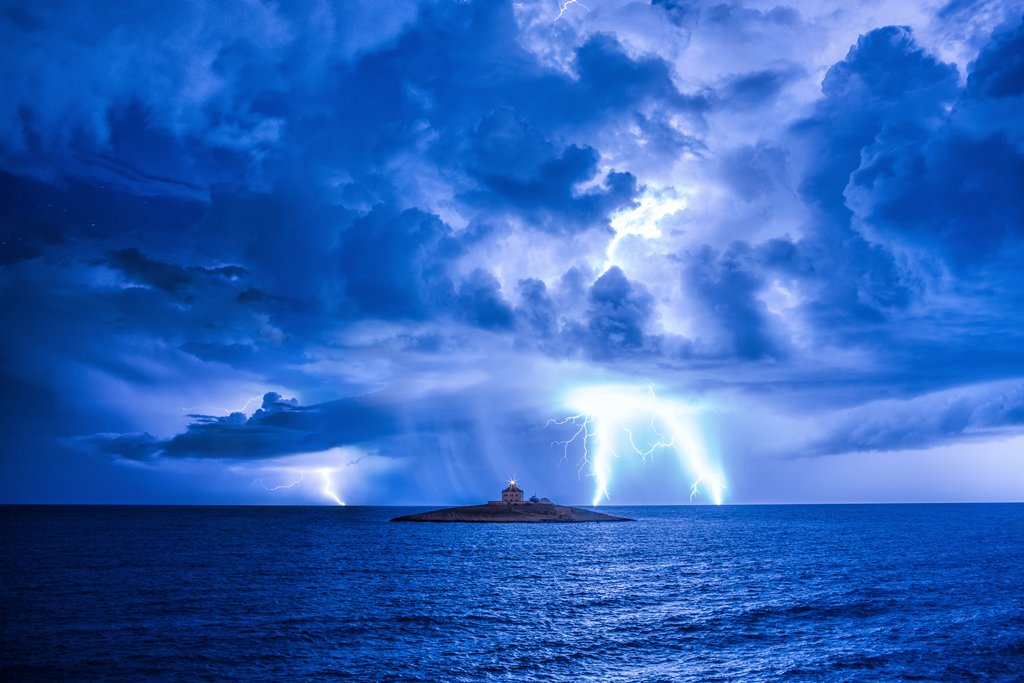
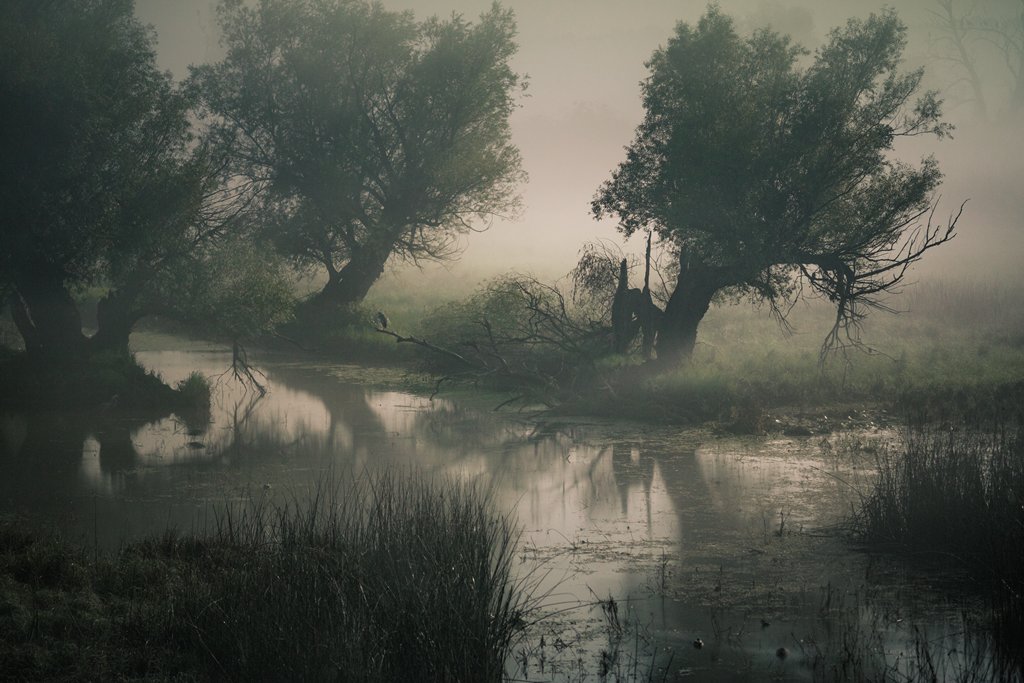
Kopački Rit
The images of Romulić and Stojčić examine the nature, landscapes, architecture and culture of Croatia. Although they embrace innovative photography techniques and contemporary multimedia modes of expression, beneath the fresh perspectives lie a palpable love of Croatia and some of its greatest assets. Wholly apolitical, their photographs can be enjoyed by all.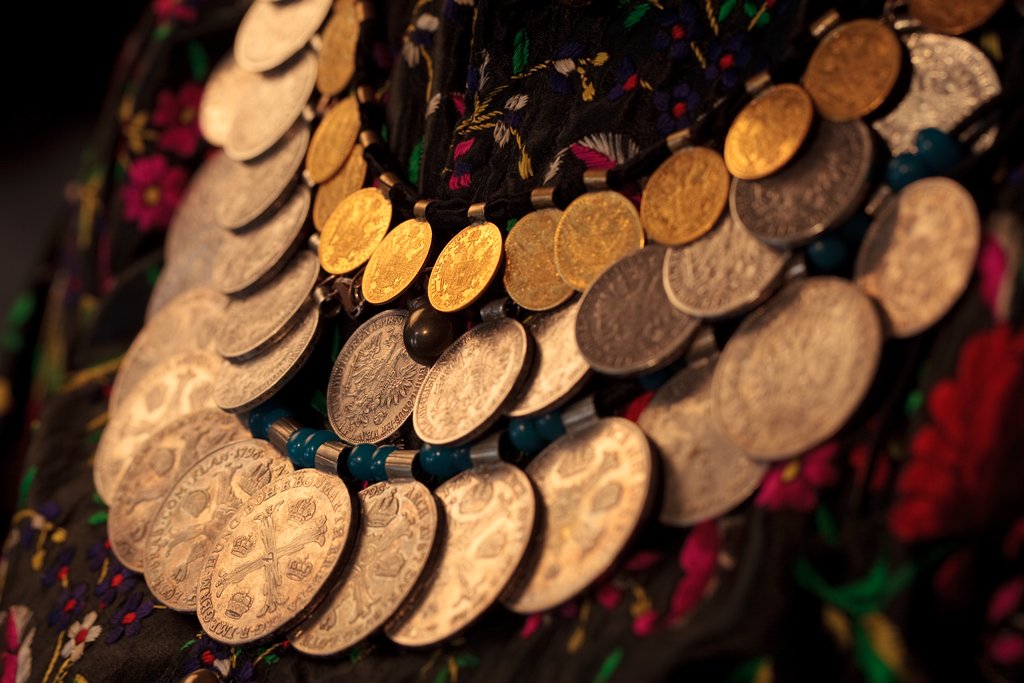
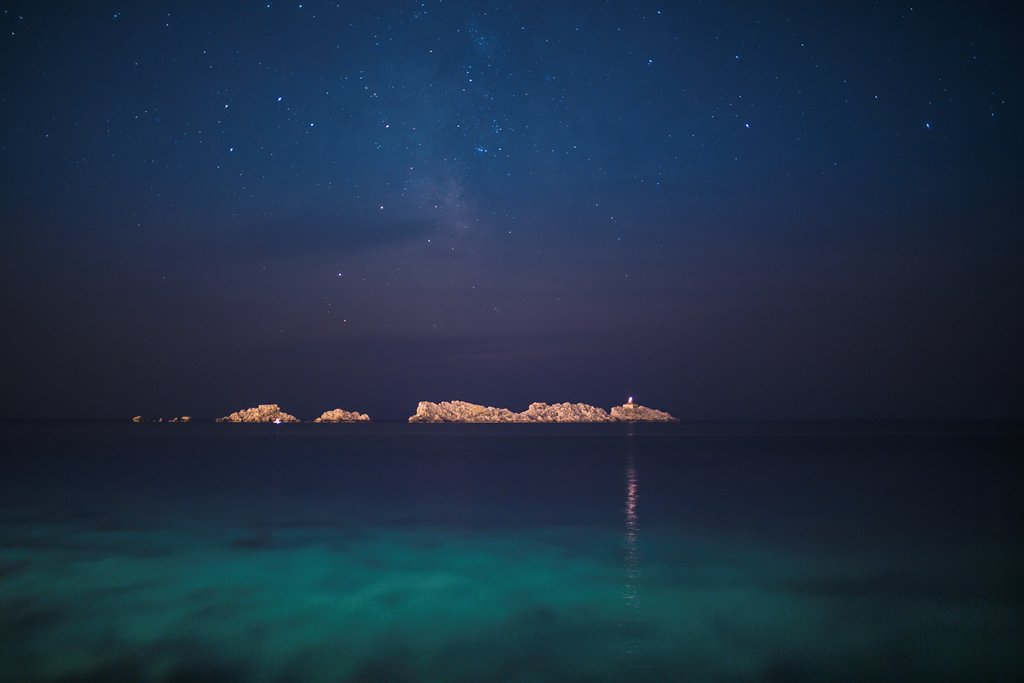
Grebeni kraj, Dubrovnik
Romulić and Stojčić were first spotted when they won first place at the Zagreb Tourist Film Festival in 2012 with the short film 'Višnjan Observatory'. One year later, they held a large international exhibition on the occasion of Croatia's accession to the European Union; 'Flash of Diversity' was exhibited in Budapest, Brussels, Rome, Linz, Moscow and Kiev.
Makarska
Their joint work as Romulić and Stojčić has appeared in about 10 books and several exhibitions in Croatia and abroad. They are also frequent collaborators with Total Croatia News – you can see one of their stunning photographs at the start of each day if you follow our Facebook page and set to 'see first'. There are few better ways of waking up than with a beautiful photograph of Croatia that will stay with you for the rest of the day.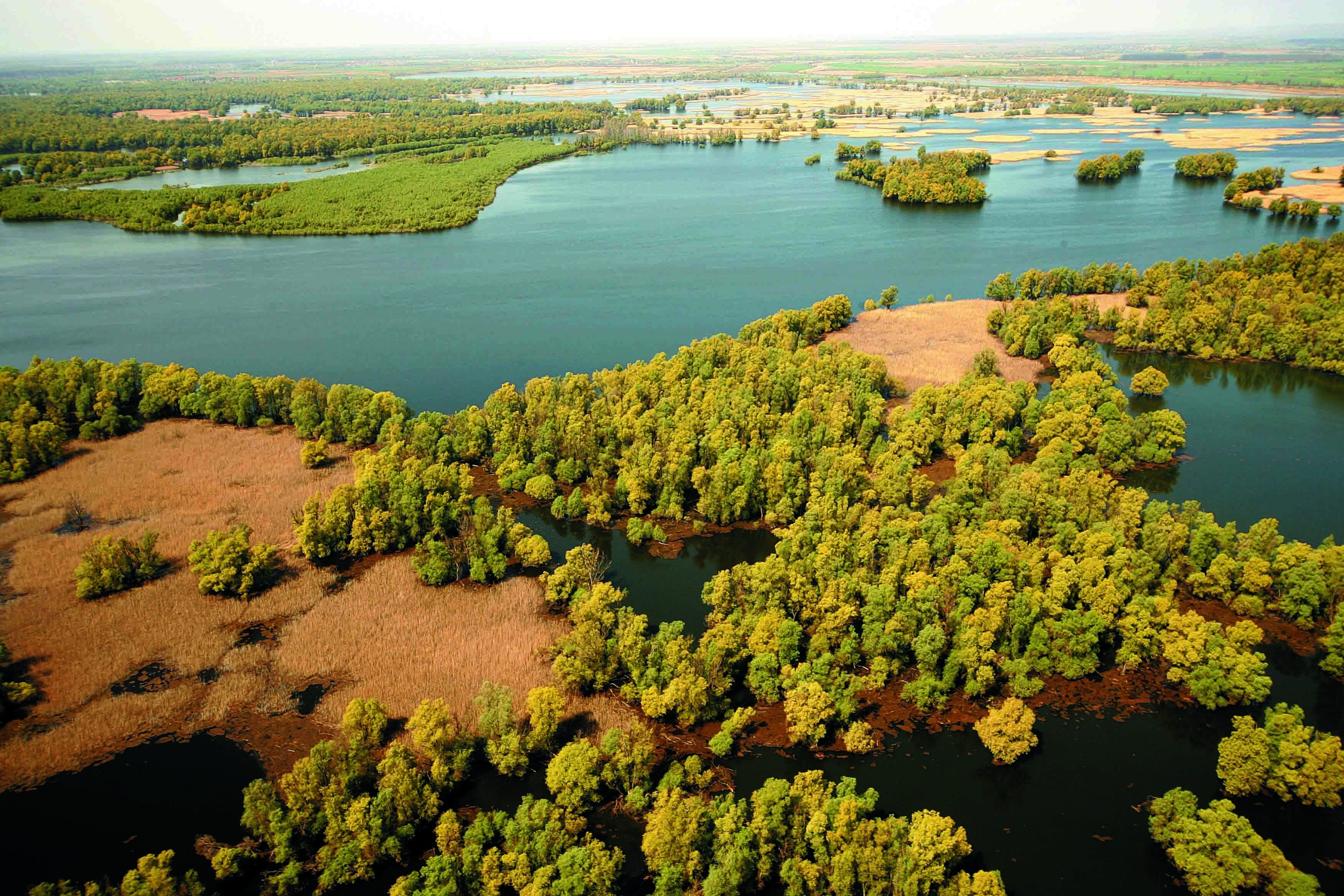
Kopački Rit
Today, Romulić & Stojčić run a successful multimedia studio that deals with professional photo and video production. They maintain a special interest in tourism and architecture and collaborate with numerous tourist boards, construction companies, architects and designers.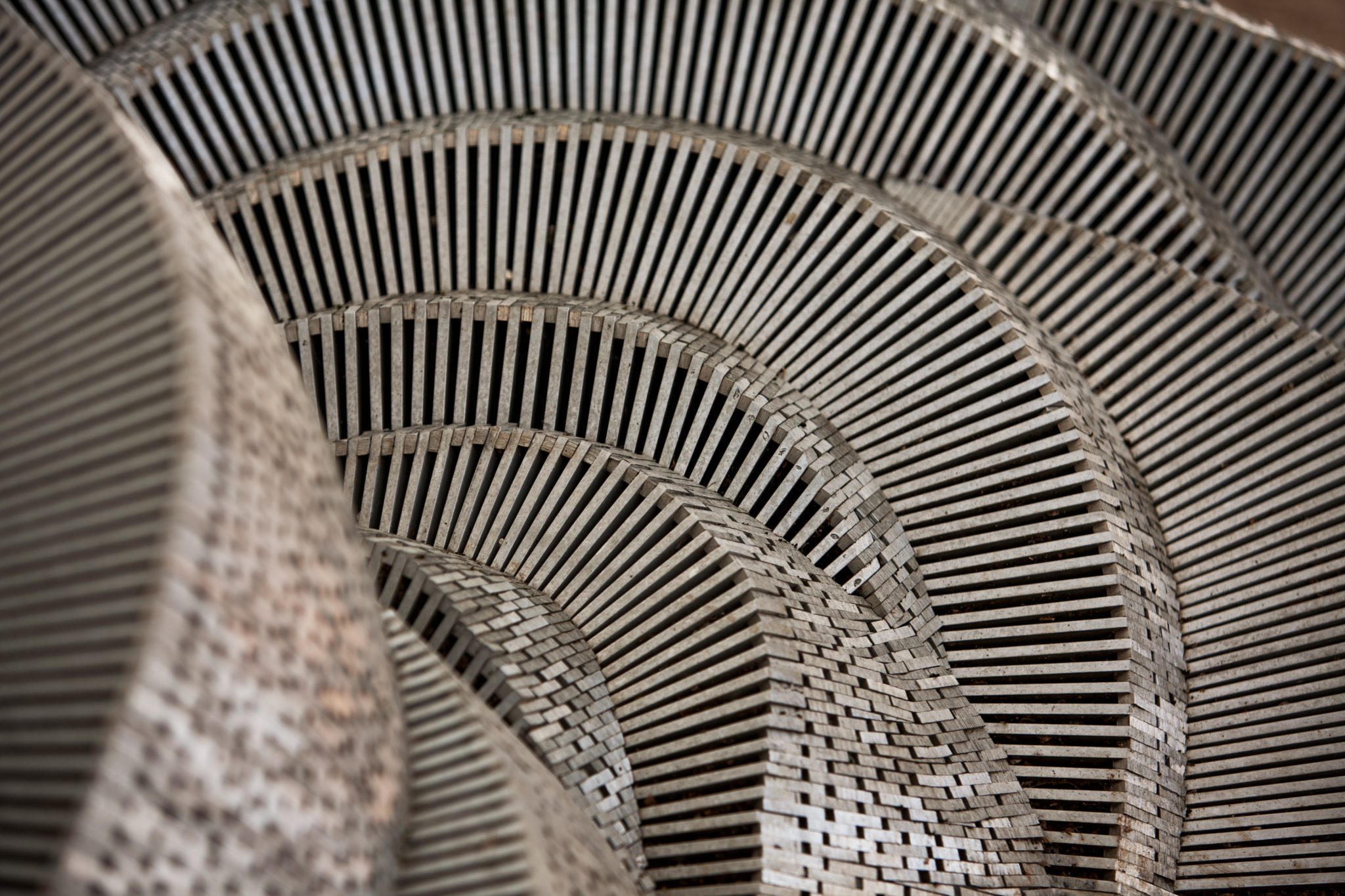
All photos © Romulić and Stojčić
HeadOnEast: How to Make the Most from a Weekend in Eastern Croatia
October 23, 2019 - Even for many Croatian residents, eastern Croatia is a relatively unknown destination, so what is there to explore in a weekend? TCN decided to HeadOnEast on a family road trip to find out.
We had been discussing a weekend in Budapest or Vienna. That is one of the great advantages of living in Varazdin - there is so much that is in driving distance. But in the end, we made a family decision to go in an entirely different direction for a weekend of family discovery - Slavonia.
The initial publicity from the HeadOnEast - Hedonist@Slavonija has died down now that Days of Croatian Tourism is behind us and the tourism chiefs are safely back in Zagreb, but those few days reignited my enthusiasm for eastern Croatia, and the family seemed to like the photos I was sending back. Could we have a more fun weekend in Slavonia rather than Budapest or Vienna? We decided to find out.
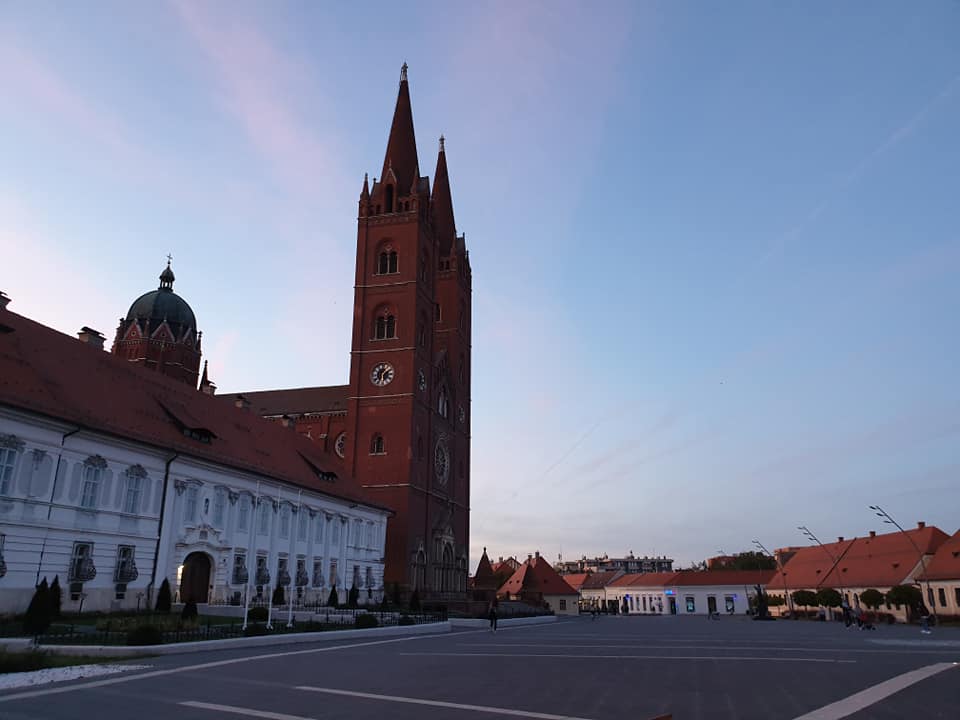
School finished at 13:15 in Varazdin, and we were on the road by 15:00, destination Bilje just outside Osijek, where we would stay with friends. The journey time was much shorter than I had imagined, just over three hours via Zagreb. Slavonia was actually closer than most of the coast.
The roads were clear and we made good progress and as we turned off the main Belgrade motorway closing in on Osijek, a huge church appeared on the horizon. But really massive.
Djakovo Cathedral. It was only just off the road, so we decided to stop for a quick wander around.
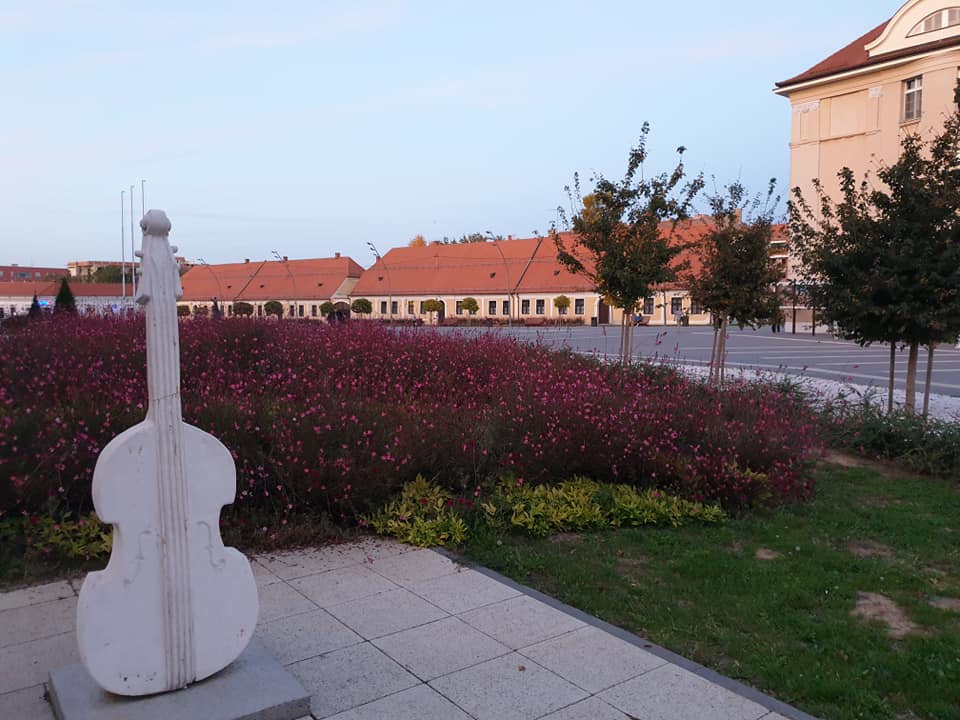
And what a pretty little place Djakovo is, with one of the nicest main squares in Croatia.
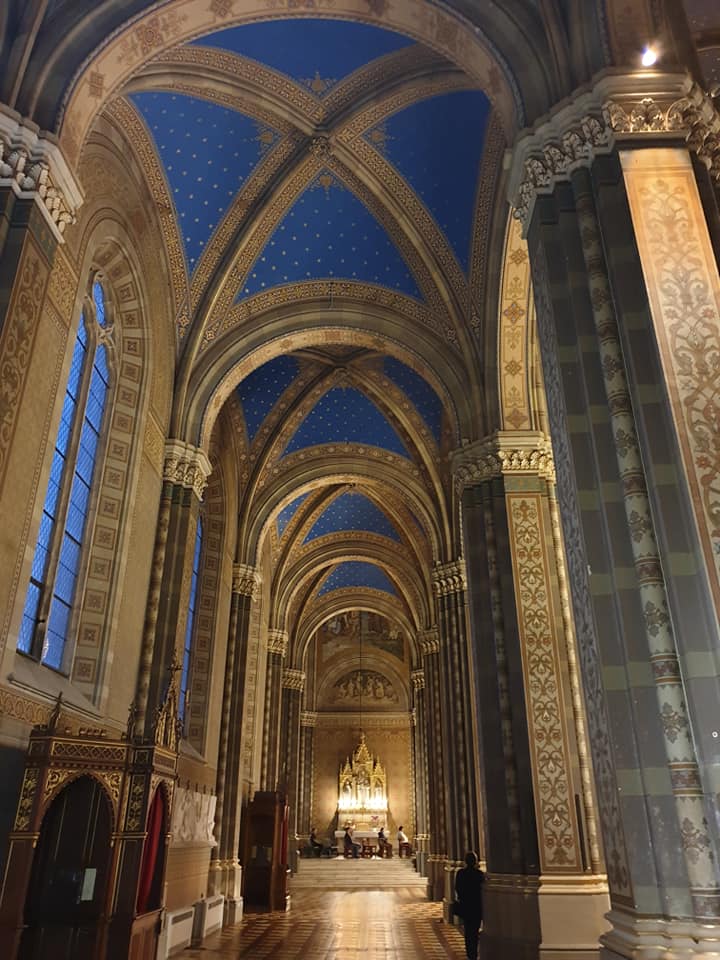
And the cathedral is outstanding, both inside and out. Mass was underway and so we snuck in - this photo above is just from one of the sides, not the main altar.
We debated on whether or not to visit the famous Djakovo Lipizzaner horses, but decided that we would save that for next time as we wanted to press on.
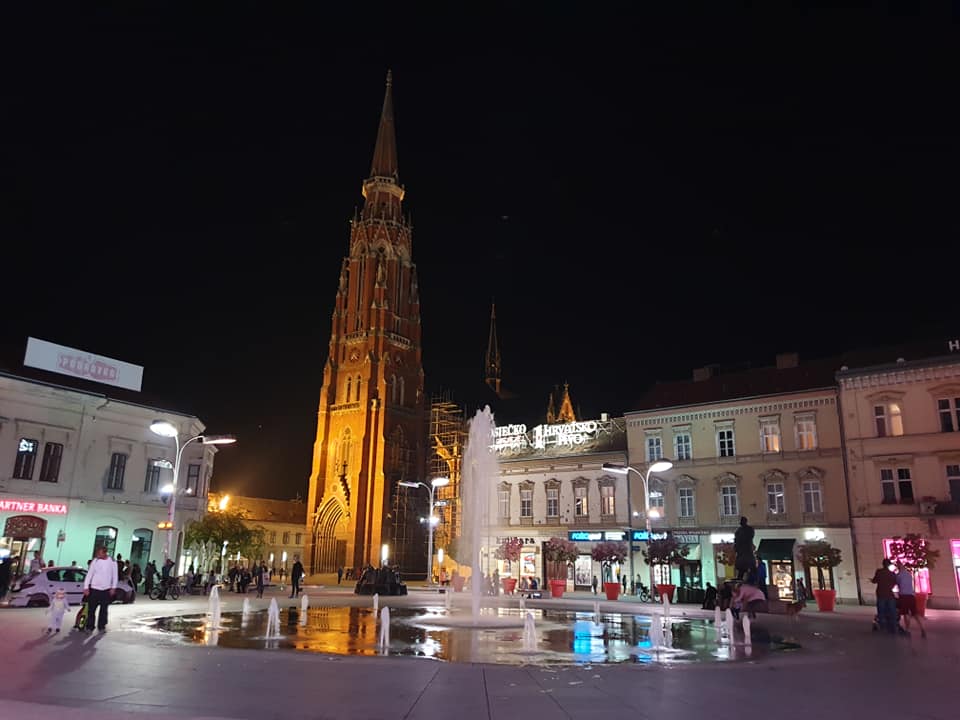
Downtown Osijek of course his its own mightily impressive cathedral from the same era and architect, some 3.5 million bricks in all towering over the city skyline.
There was a really nice vibe around town early on the Friday night, a wonderful place to walk around and explore the historic streets and buildings.

Being on the Drava, Osijek has its own 'riva' just as in Dalmatia, a place of space, nature and people watching. A nice little spot for a coffee on arrival.
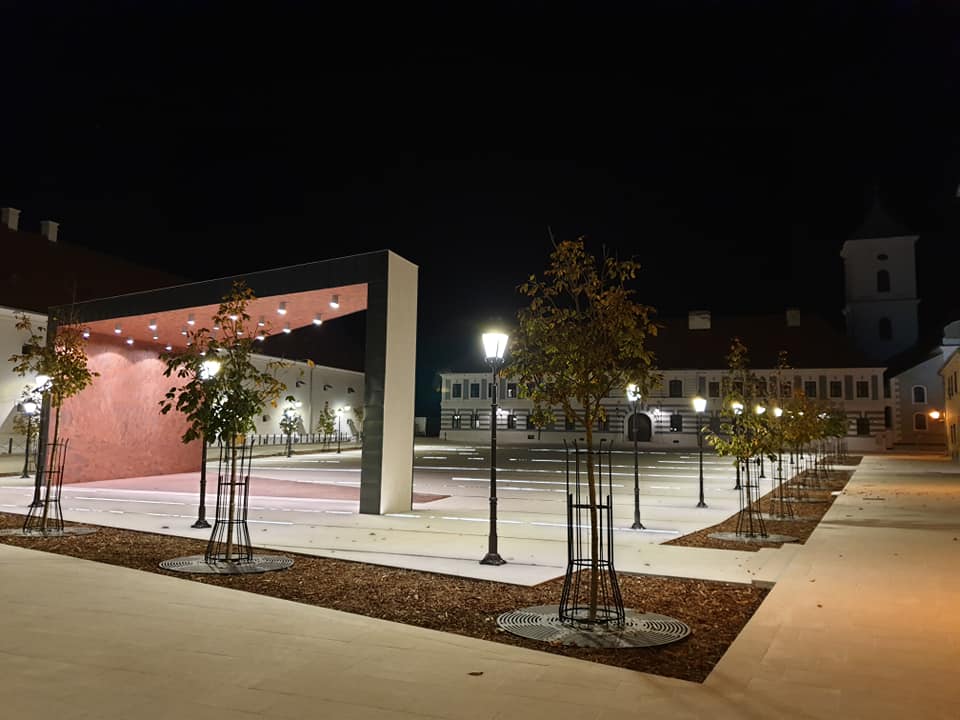
it was my family's first visit to Slavonia and I wanted them to see as much as possible, and the walk along the river to Tvrda, or Fortress, was magical. And although the fortress and old town date back centuries, some rather impressive changes and upgrades are in process, such as this spectacular new square, which was until recently mostly a muddy parking lot.
And when the old town comes alive, it really comes alive. Things were a lot quieter during our visit, but take a tour of the HeadOnEast gourmet festival earlier this month in the video above.
Osijek surprised us all with its beauty and the sheer number of historic buildings and wide tree-lined avenues - gllimpses of its past glories. Get more of a feel in this walking tour above, organised by locals with a lot more knowledge than this fat British blogger.
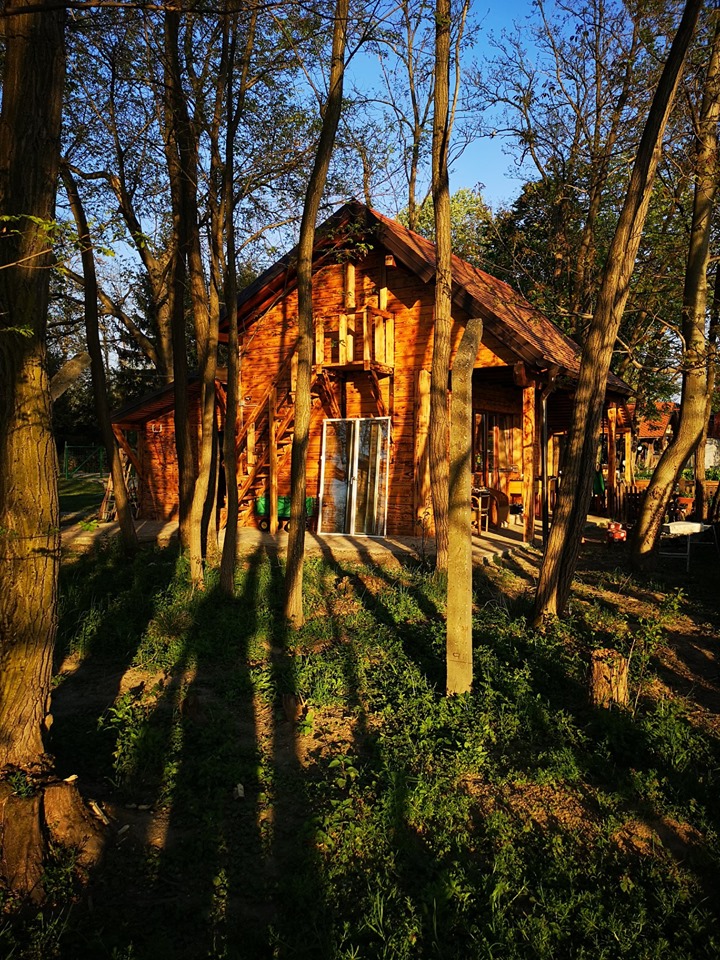
And so to our accommodation, and one which we were all looking forward to. A weekend without gadgets in the natural beauty of OPG Mario Romulic just outside Bilje.

Mario is a good friend of mine and is diversifying from his very successful career as one of Croatia's premier photographers to open his own organic farm next to his home. It is fantastic! I stayed there a couple of weeks ago for the first time, slept like a log and woke to the clucking of hens.
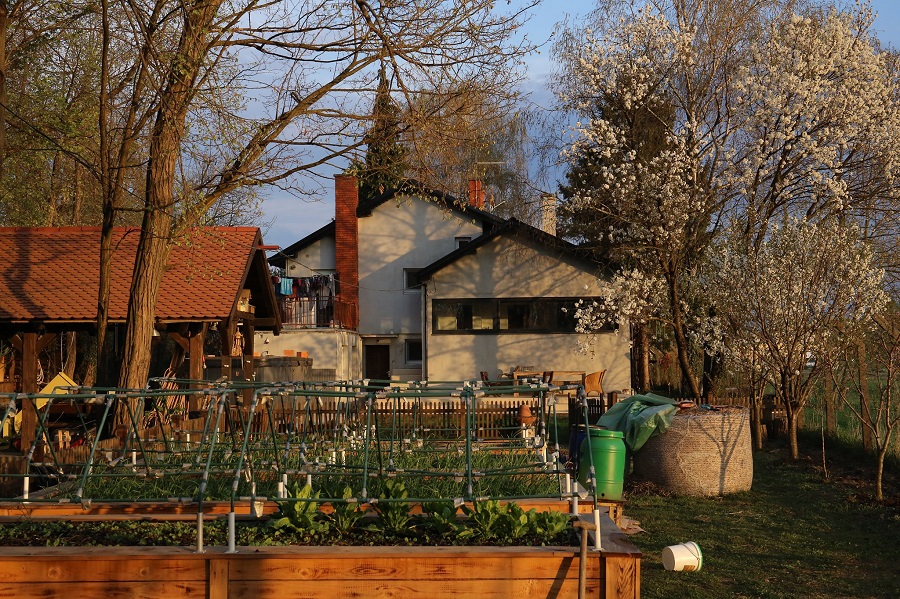
And all around the wooden house, organic produce leading to the family home. The kids loved it, especially the 15 cats (mostly tiny kittens) which were roaming freely with the hens.
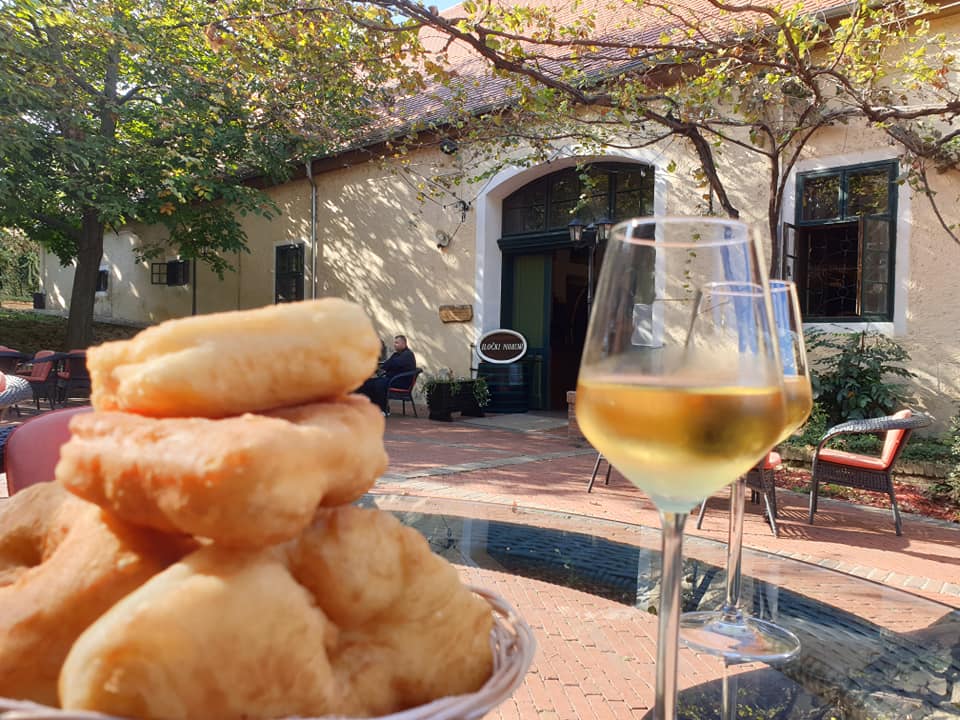
But we had also come to explore, and the first stop was a visit to the legendary cellars of Ilocki Podrum, Croatia's most decorated winery and purveyors of wine for the Royal weddings of William and Harry, as well as the Queen's coronation back in 1953 - learn more about that and the most expensive bottle of wine in Croatia.
But before the tour of the cellars, a little breakfast. A glass of Traminac with the most unusual-sounding breakfast dish I have ever come across. Literally translated - Torn Underpants. They tasted a lot better than they sounded.
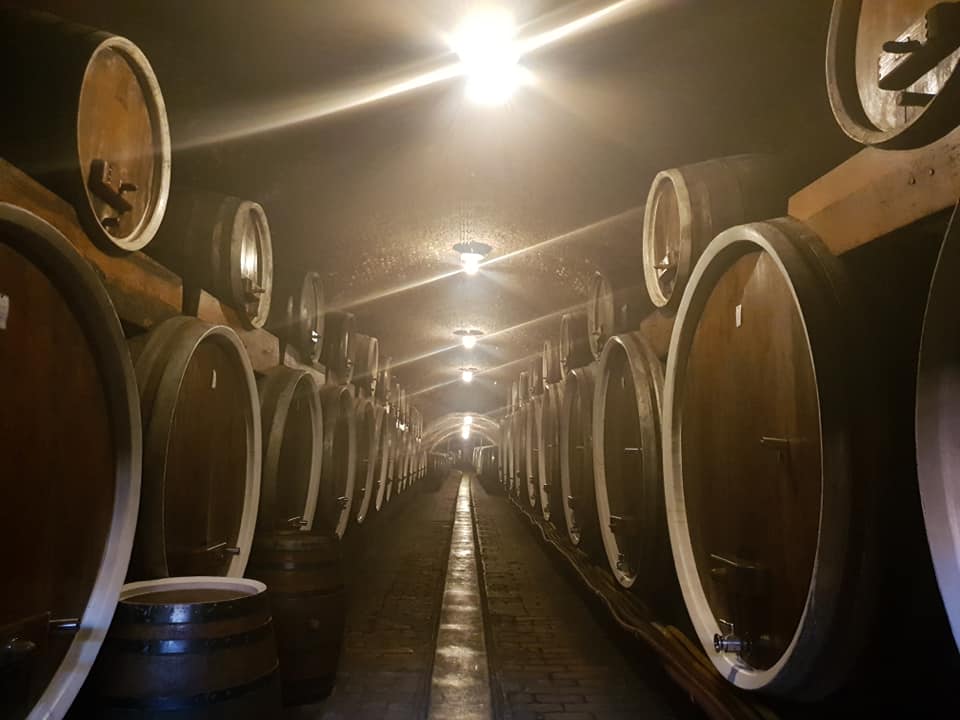
The Ilok cellars are incredible, the stories even more so, and the wines even more so than that. There is a separate article coming on TCN, but in the meantime, just visit!
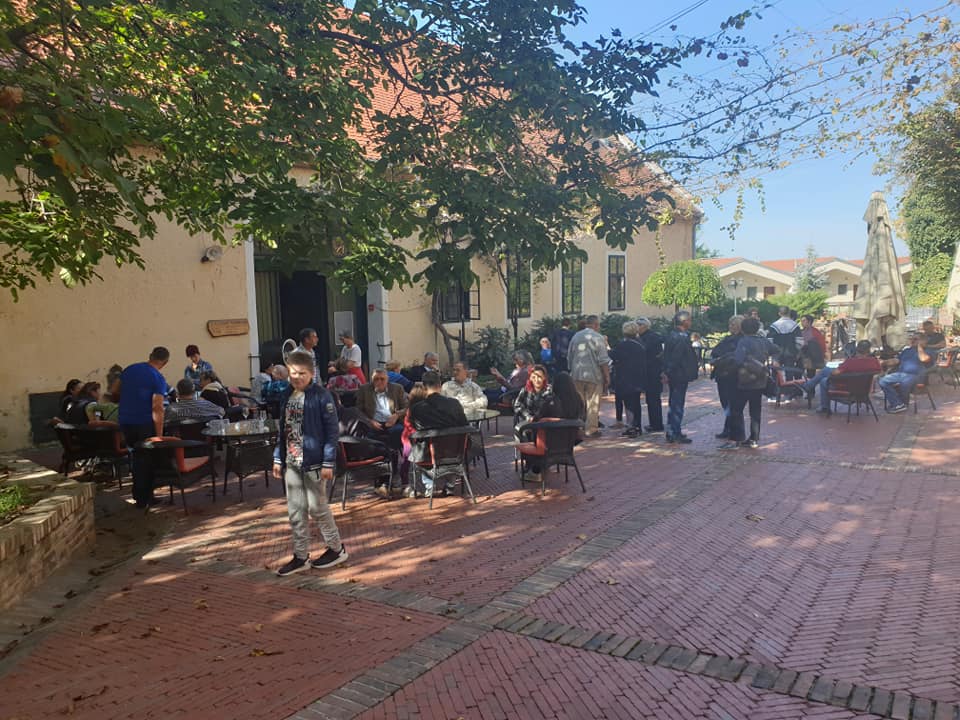
And plenty were visiting, even in mid-October. Just one of the day's tour groups from the United States. Despite its position as the easternmost point of Croatia, Ilocki Podrum receives some 70,000 tourists a year, 45,000 of them foreign.
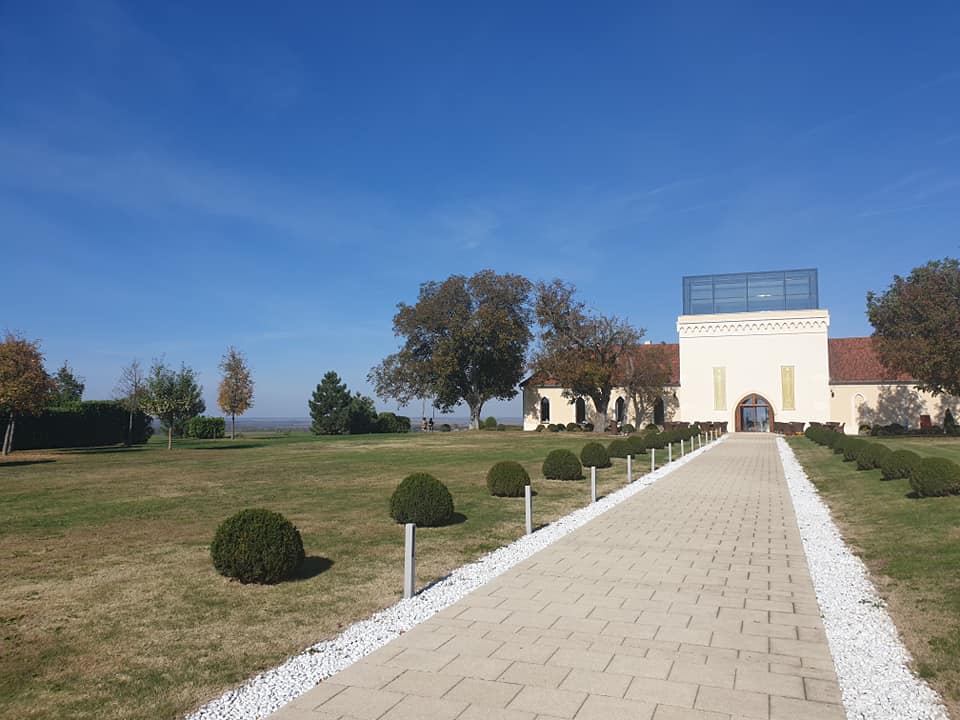
But while I was aware of the wines, I had no idea that tourism at Ilocki Podrumi was also booming in addition to the wine. The estate of Principovac is located in splendid isolation outside of town, a very popular wedding venue and complete with restaurant, quality accommodation, tennis courts and even some golf. A really great conference centre and place to escape the stresses of life.
And to party. The New Year's Eve festivities for 500 guests are quite something apparently. Take in the view in the video above.

There was just enough time to visit the compact old part of the town of Ilok as well. Really rather pretty and definitely a destination for a relaxing weekend in its own right.
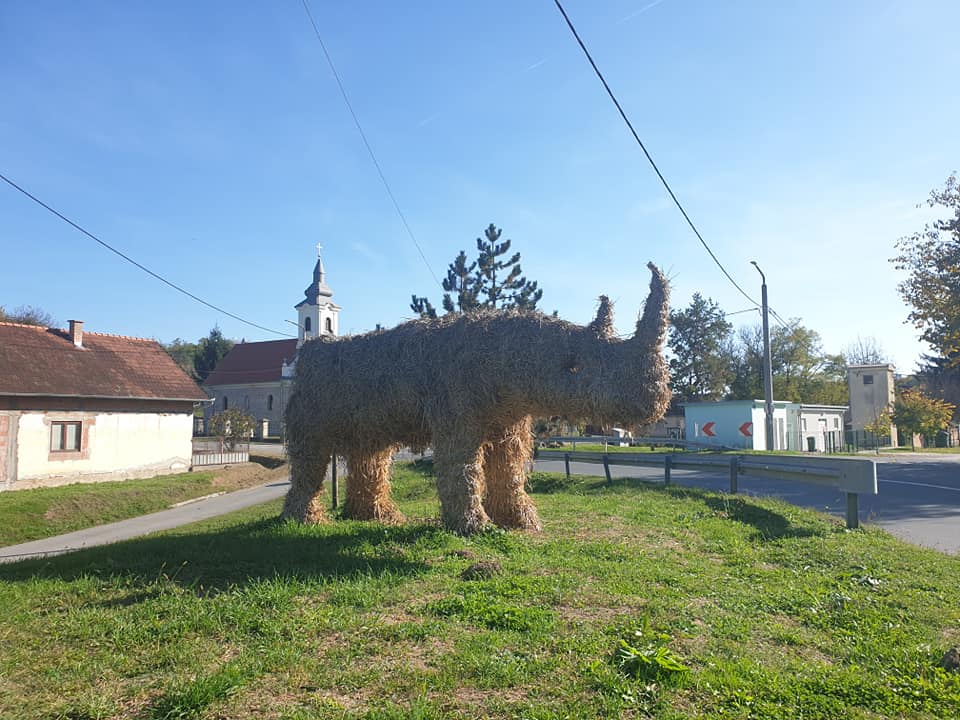
Slavonia is VERY flat and we loved the golden autumnal colours as we drove, as well as several very quirky things along the route. The famous Slavonian straw artist has been busy in the region...
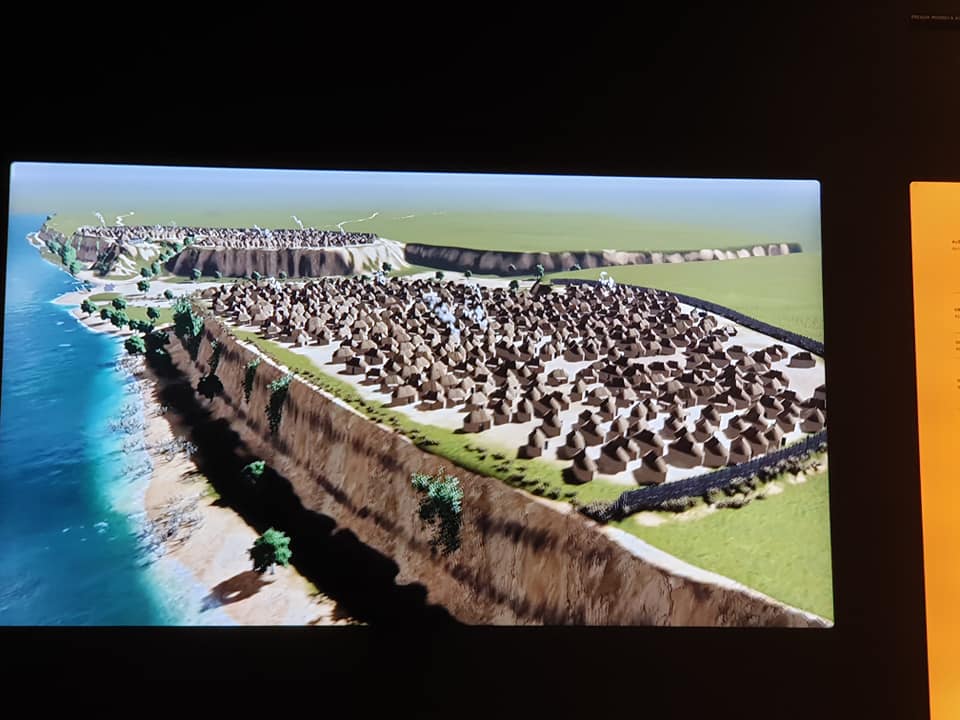
And then, finally, the chance to fill in one of the biggest gaps in my knowledge of Croatia - Vucedol.
And what a gap it turned out to be. I knew that there was some claim to ancient civilisation in eastern Croatia, but I had never researched it too much, and so the Vucedol Museum was quite a shock. For this modern-day suburb of Vukovar had once been as important as Paris today in terms of settlements in Europe.
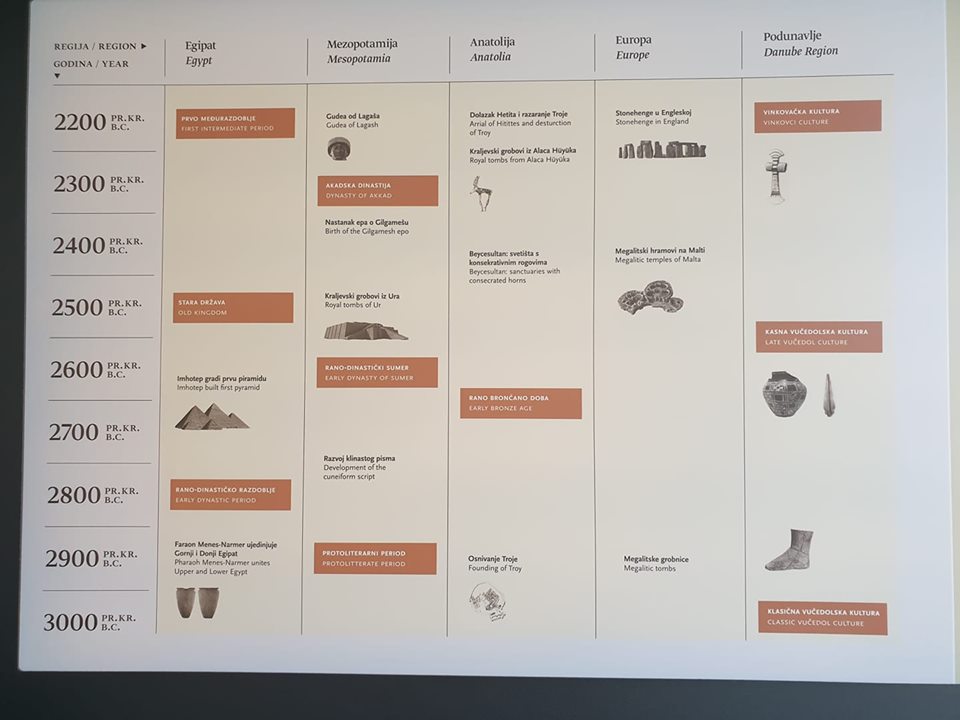
And the discoveries of Vucedol place it very favourably with other world-famous cultures such as the pyramids in Egypt, Stonehenge etc. And yet very little is known internationally about Vucedol.

A very developed civilisation which gave the world the oldest calendar in Europe, the first metal casting of tools, and some rather funky fashion 5,000 years ago.
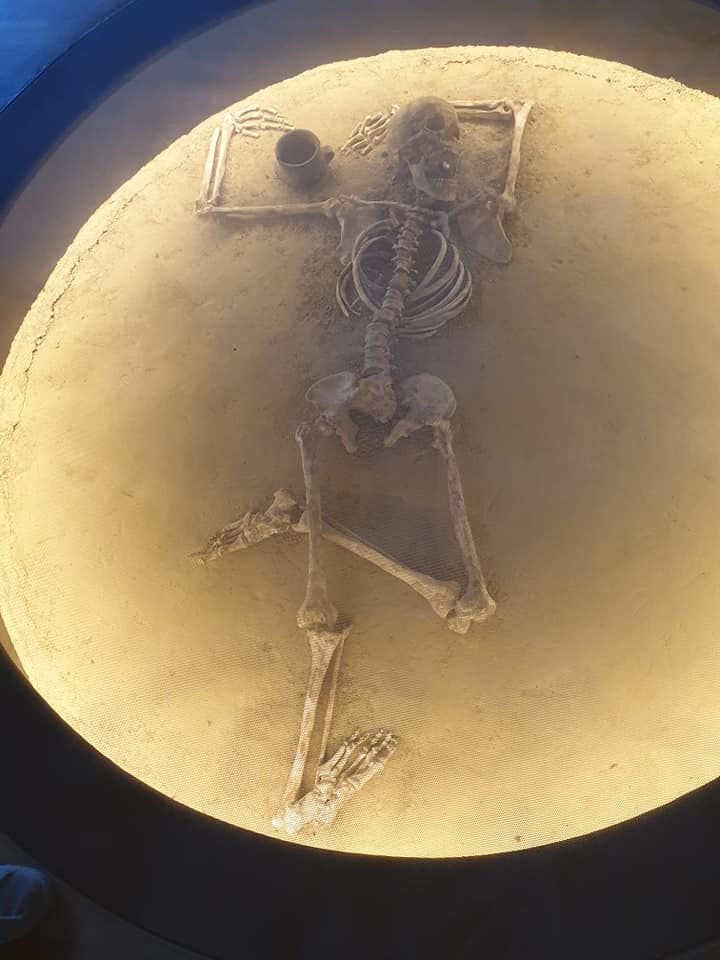
And rituals of human sacrifice.
More on Vucedol coming soon, but check out the museum, it is one of the very best in Croatia and a great family attraction. And the enticing thing is this - only 10% of the area has been excavated. Imagine what else is waiting to be found if the other 90% is ever excavated. Croatia could be home to one of the world's most important archaeological sites.
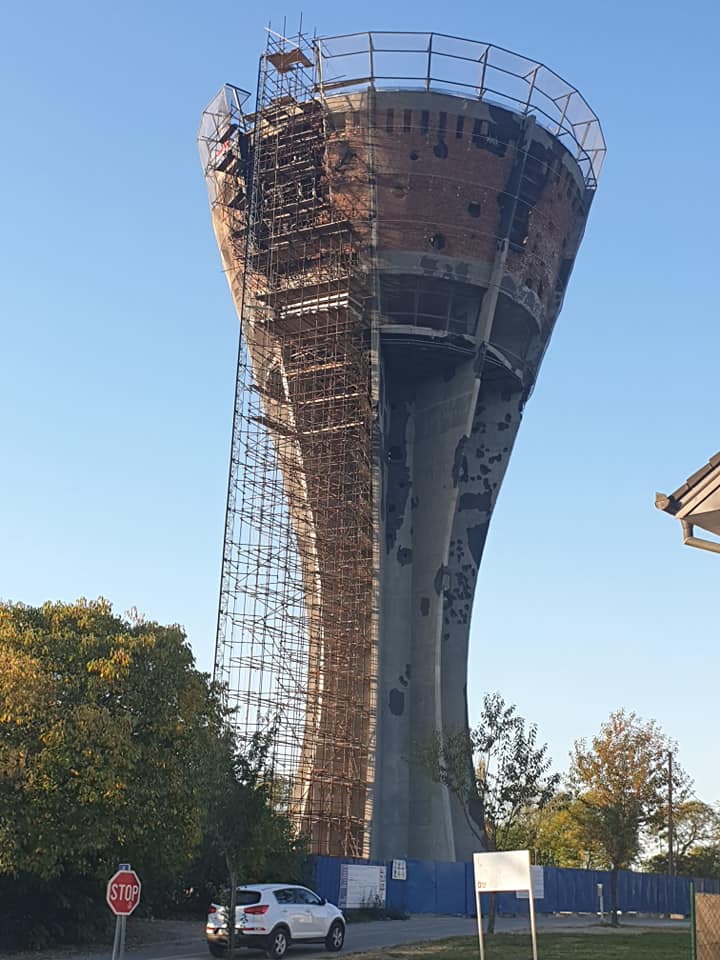
From the ancient past to the very recent past, as we visited probably the most famous building in eastern Croatia and symbol of the suffering of the heroic city of Vukovar, which is now under reconstruction.

I had planned on exploring Vukovar on a future visit, but as we were so close, we decided to drive through. The iconic water tower in the distance, the Danube separating Croatia from Serbia.
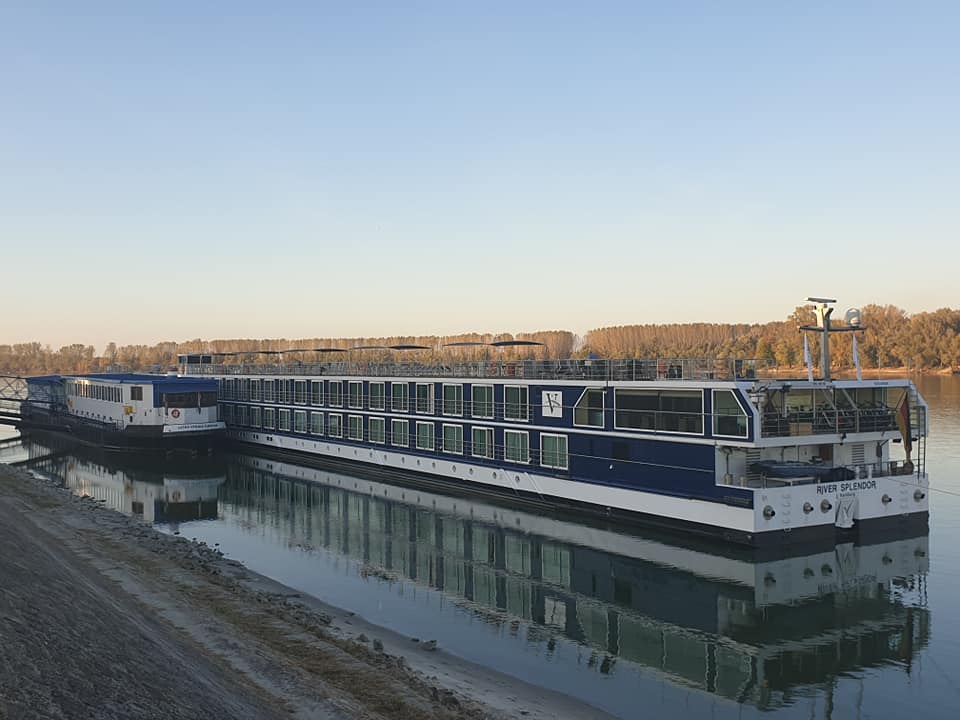
And cruise tourism, the type you rarely read about in the news, but growing slowly and bringing tourists to the east - cruises down the River Danube. Still going strong in mid-October.
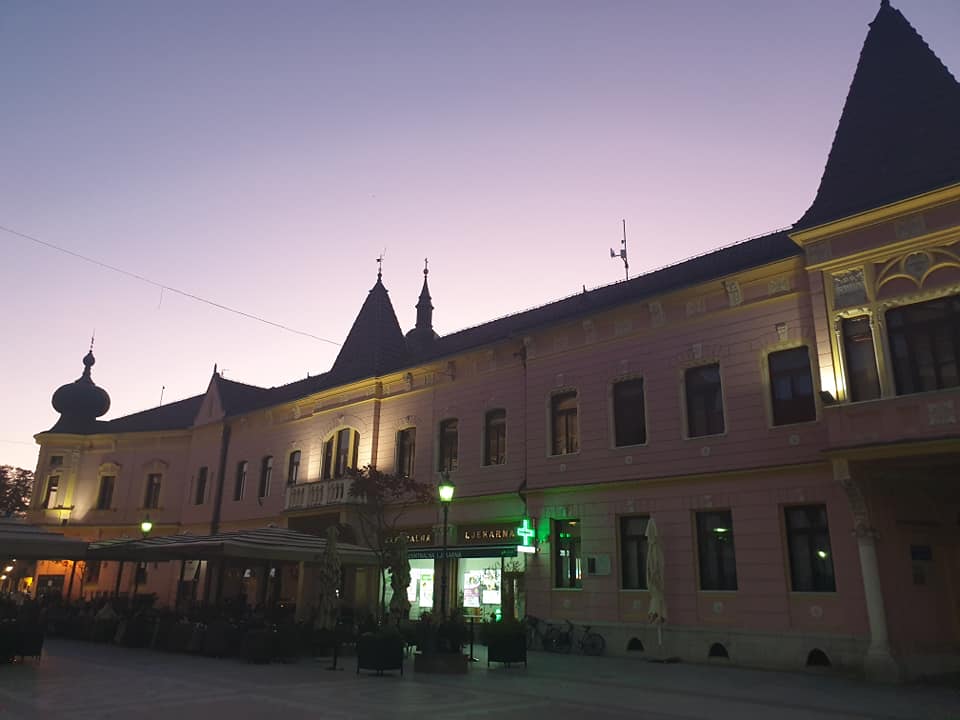
And so to our next stop - to the oldest continuously inhabited town in all Europe, home to some of the more sensational Vucedol finds. Vinkovci, a fascinating town we covered in some detail recently.
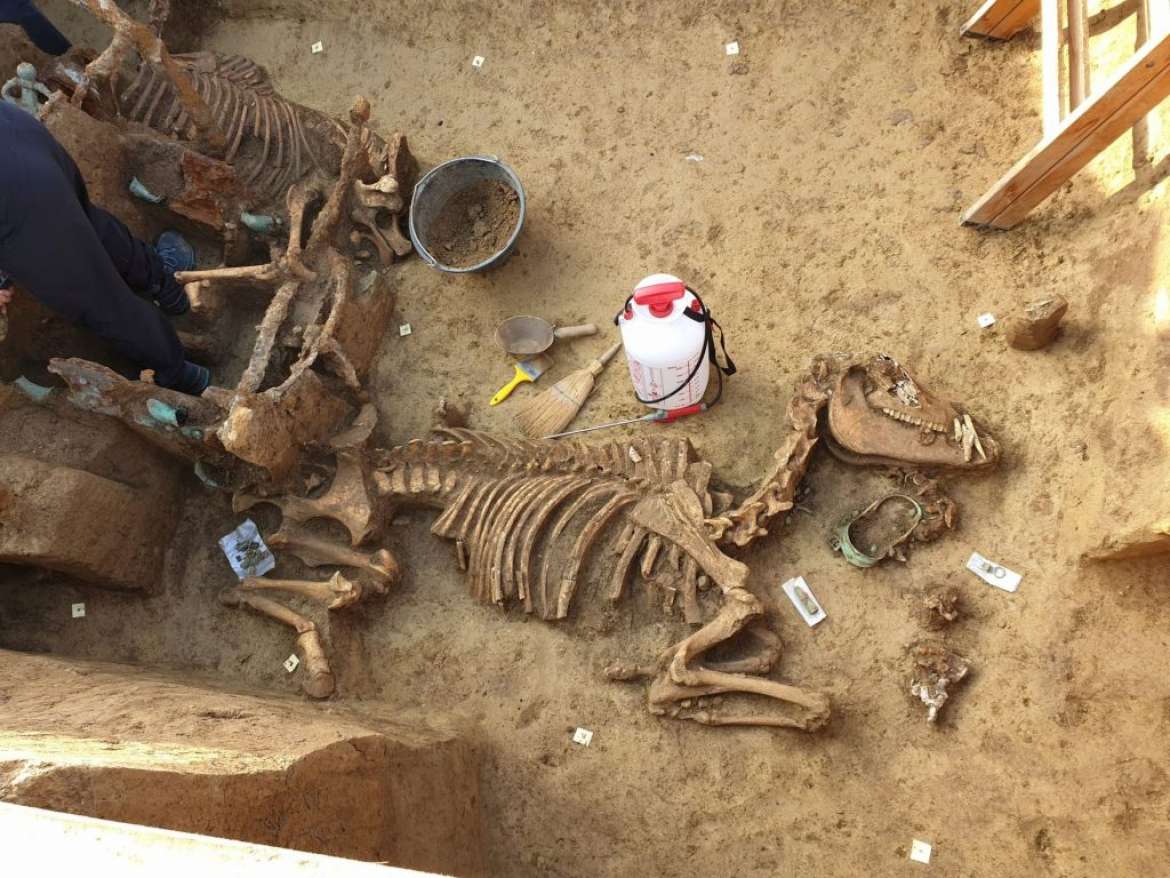
And since my visit a few weeks ago, yet one more sensational discovery - wonderfully preserved remains of a Roman chariot and horse. What other secrets await to be discovered - from Roman times, the Vucedol era, and others?
There was lots to ponder and discuss as we headed back to our organic paradise on Saturday night.
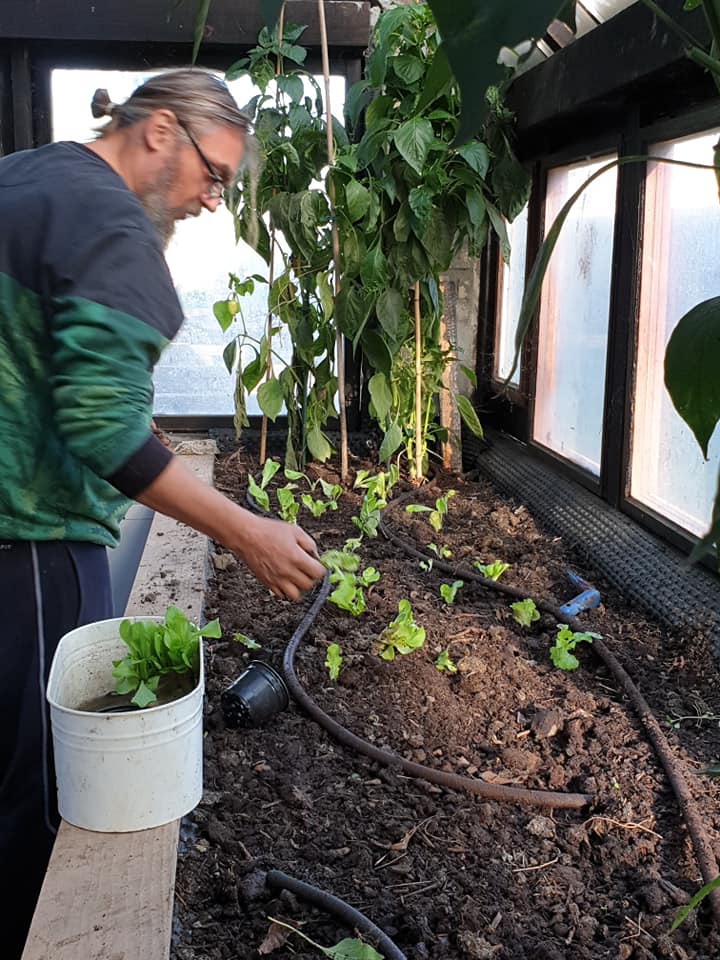
Sunday morning was spent with Barba Mario. As far away from the stress of modern life as one could hope to be.
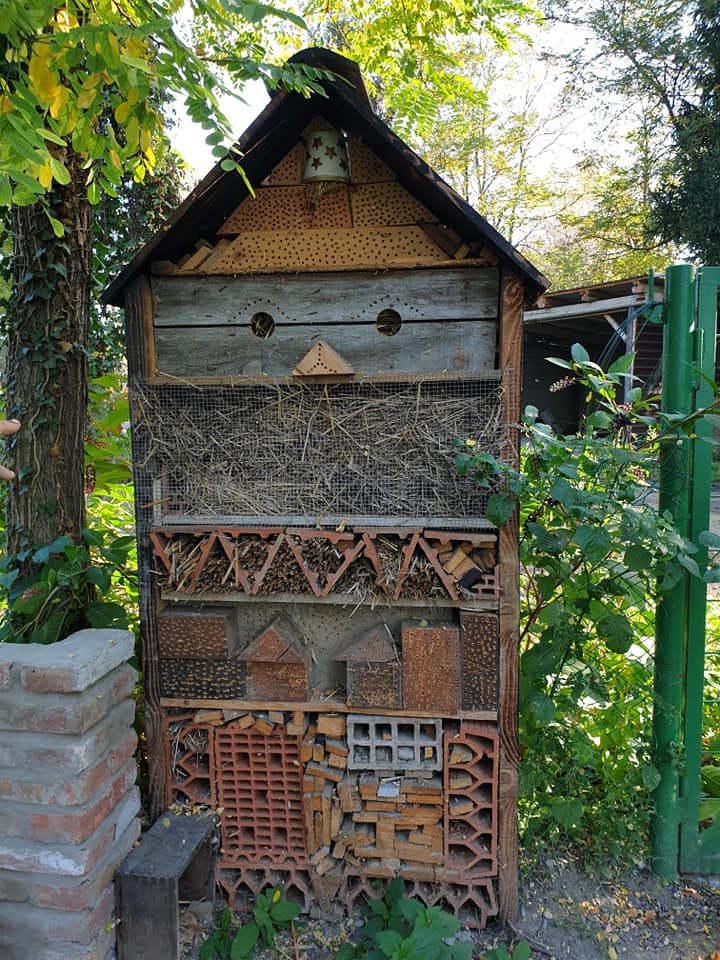
We really enjoyed our tour of his wonderful project, which you can learn more about on Facebook. and all the little details, such as this little bug hotel, which provides the right conditions for wild bees to thrive. They are essential as they work in much lower temperatures than ordinary bees, therefore pollinating where pollination would otherwise not happen.

And after a tour, a little breakfast - all locally sourced or home-grown.
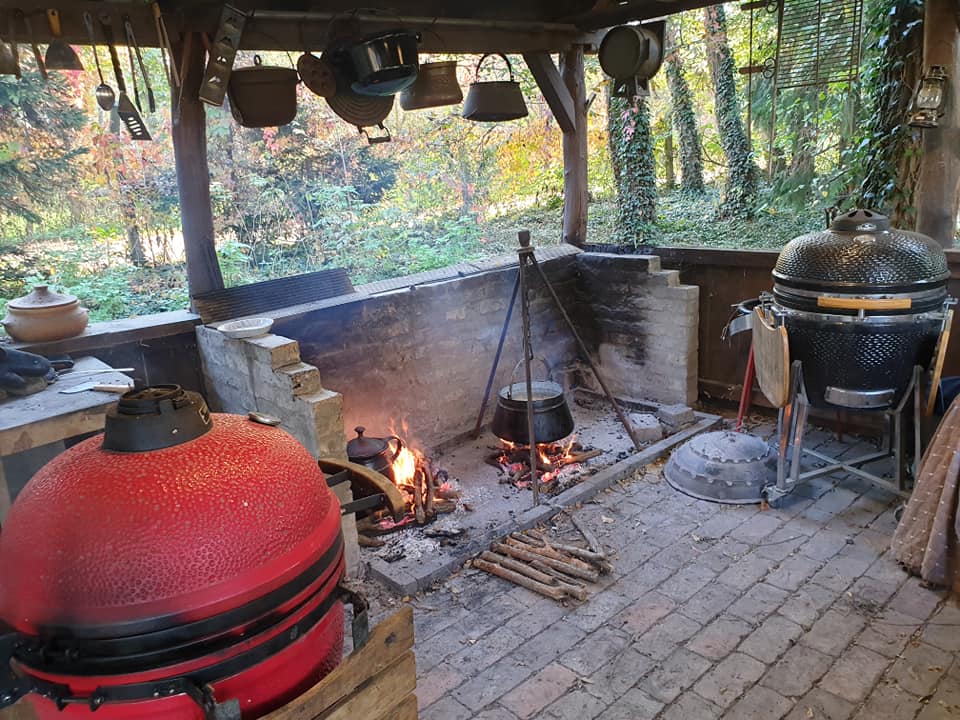
Slavonia is known for many things, including the best hospitality in all Croatia, and while we had planned to leave a little earlier, a tour of Mario's 'Meat Church' and an invitation to lunch proved too hard to resist.

And while Mario slow-cooked the meat, we drove the one kilometre necessary to one of the natural jewels of Croatian tourism, Kopacki Rit Nature Park.
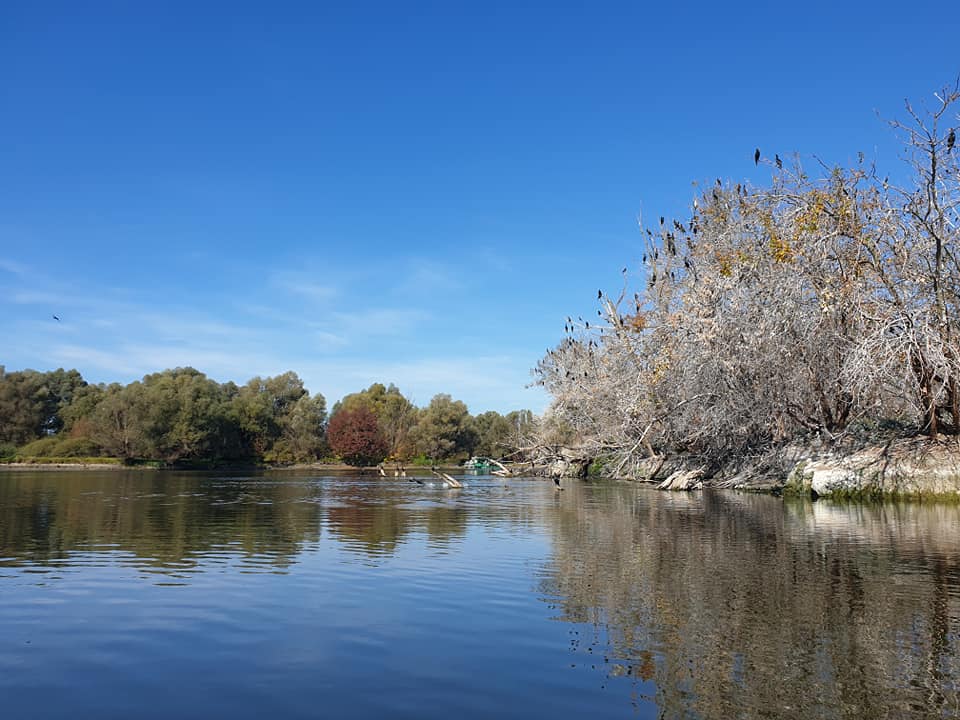
The weather was perfect, the nature more so - one of the most important wetlands in Europe, with over 300 species of birds.
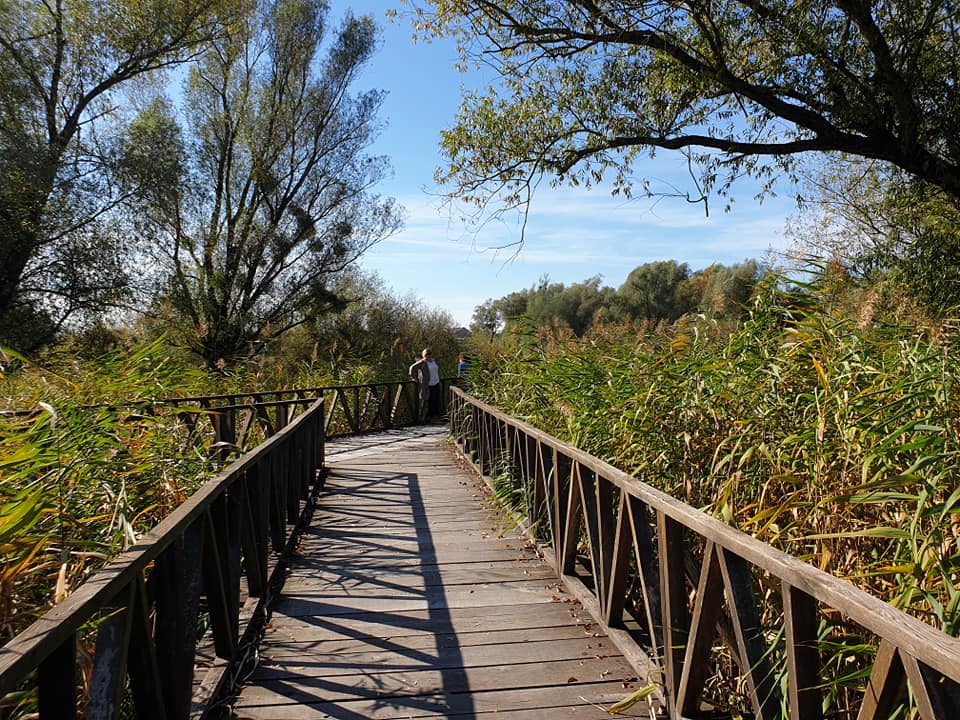
And nicely constructed wooden walkways took you through the marshlands - beautifully done.
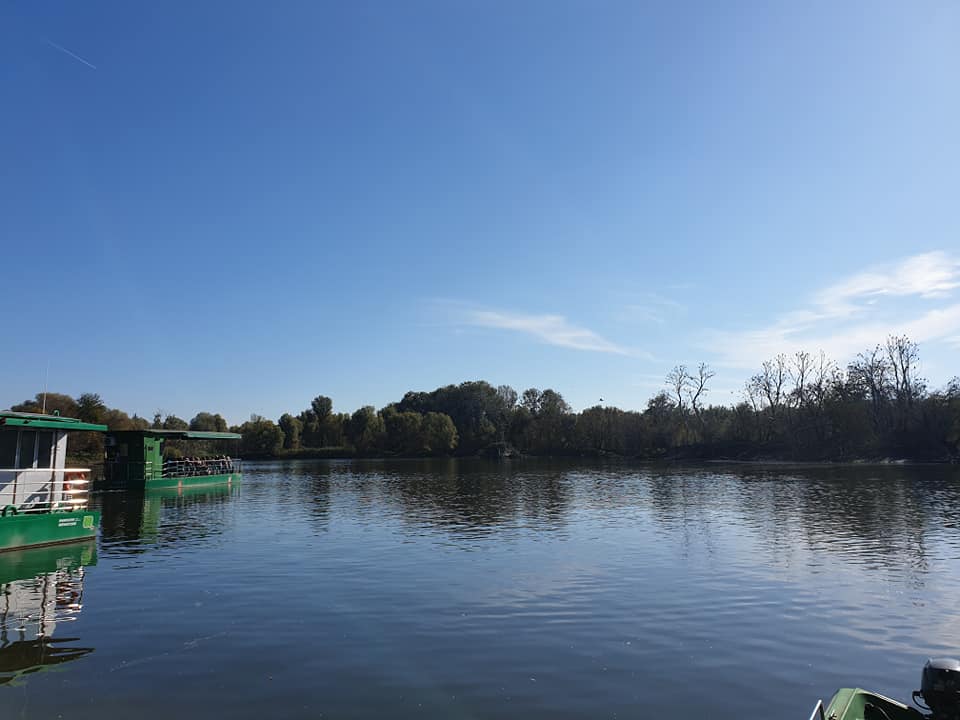
And we were not alone. Another boat full of tourists heads out into the Kopacki Rit waterways.
Meanwhile...
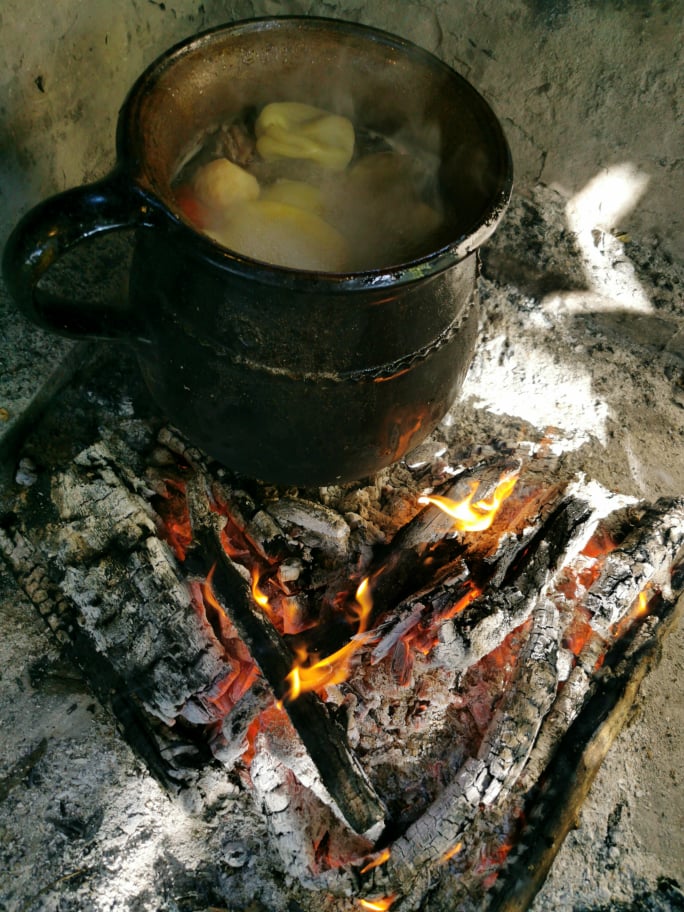
Romulic the photographer combines with Romulic the masterchef.
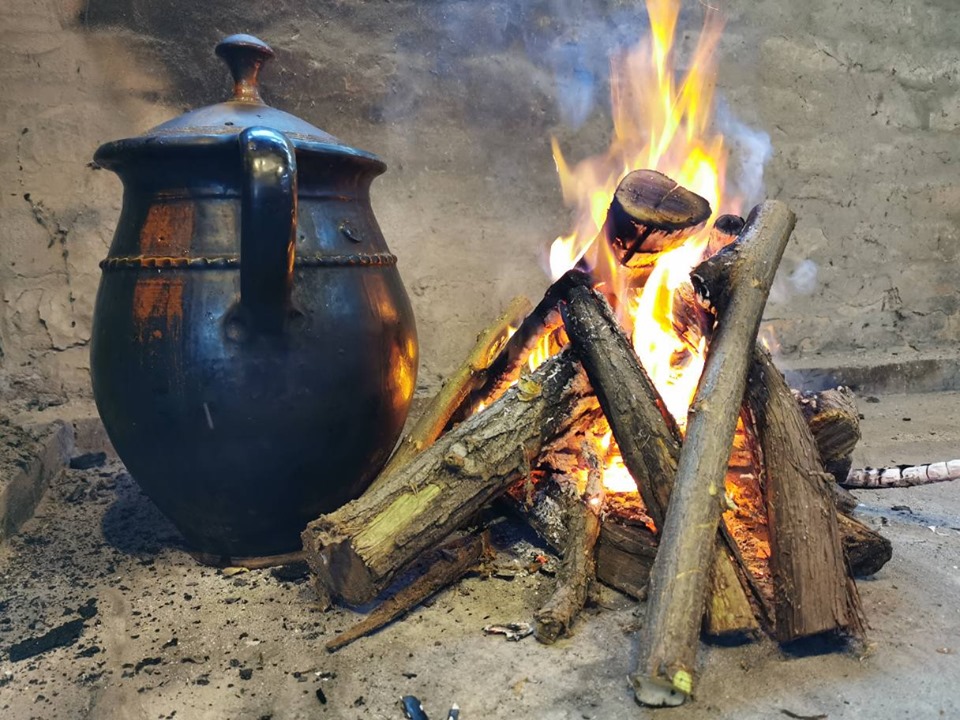
Cooking as It Once Was.
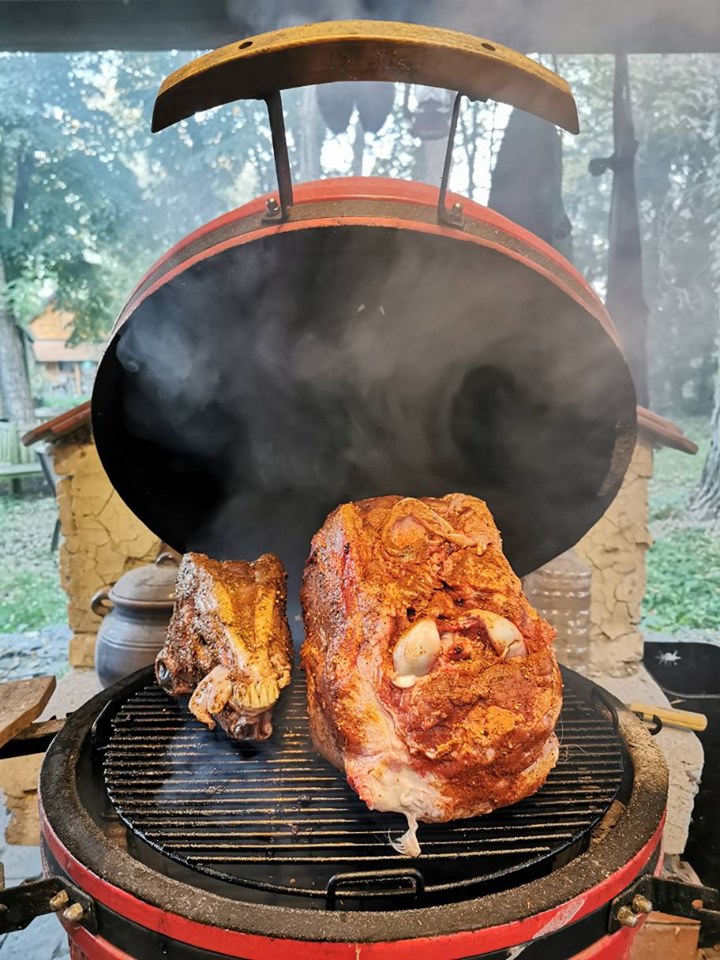
A hearty lunch, great company and fabulous Slavonian hospitality. It was with some regret that we packed our things and headed back west to our regular lives.
Budapest or Vienna for the weekend? Why not explore the jewels which are much closer to home instead?
Here are 10 things that I learned about eastern Croatia this month.


